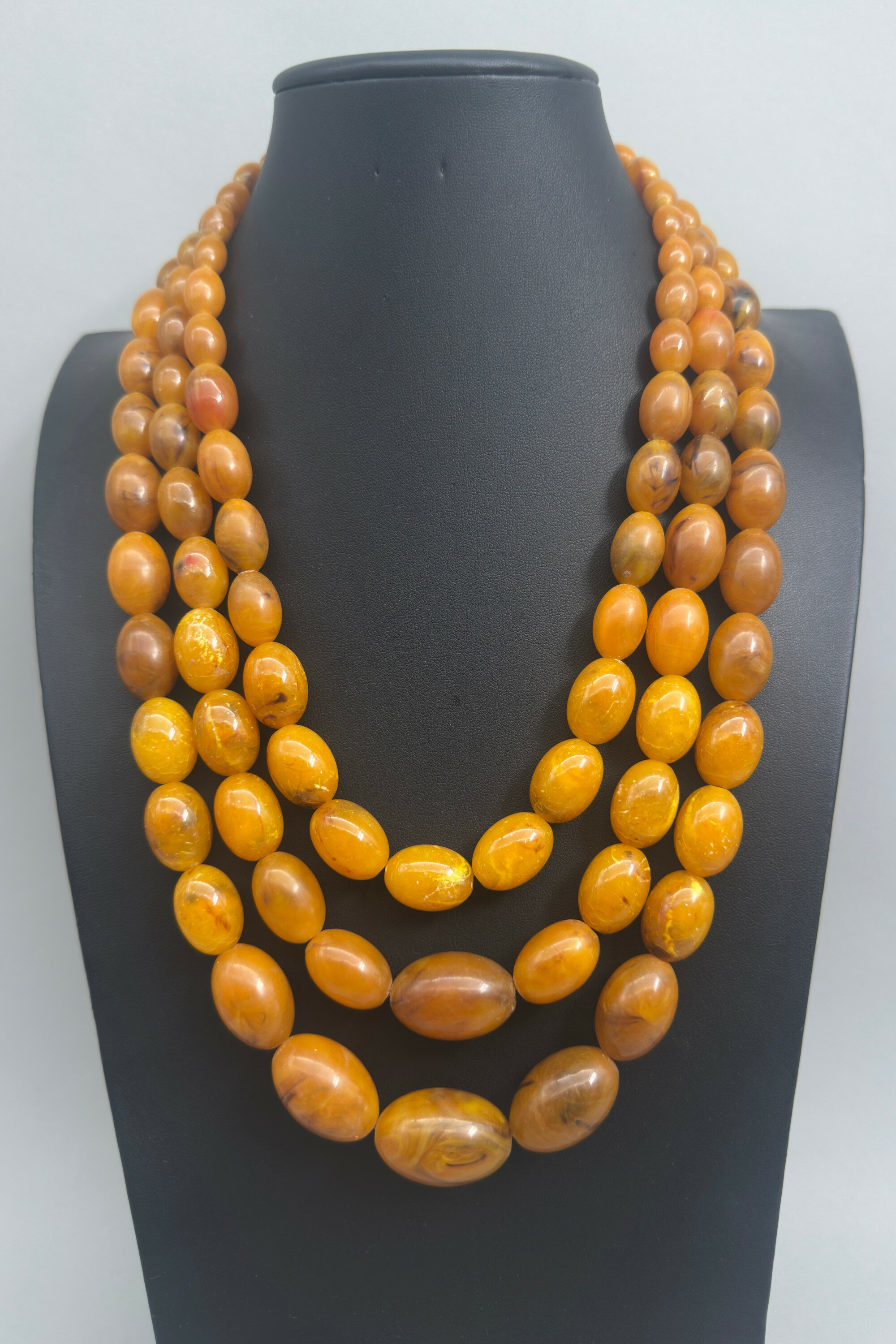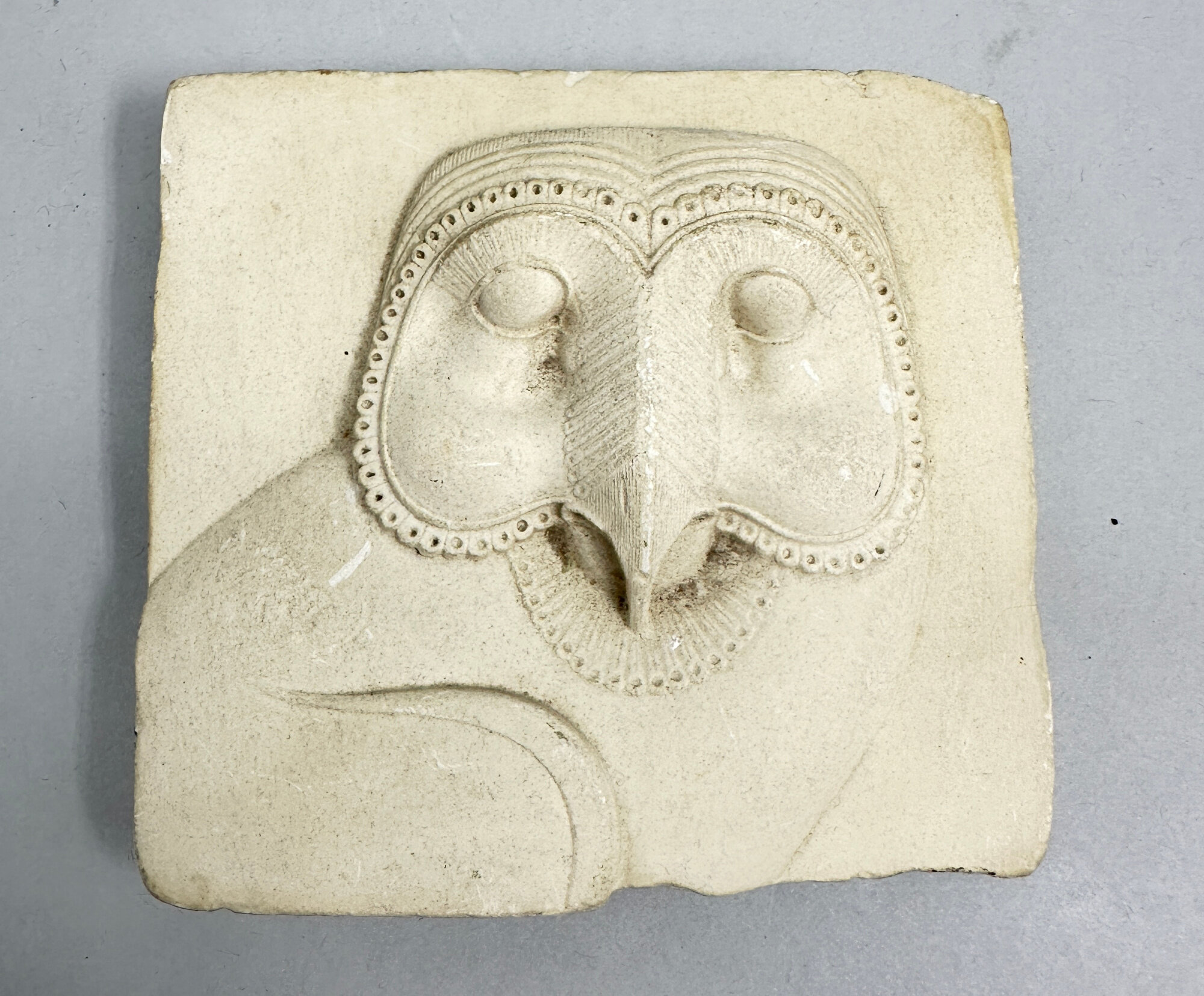
Metropolitan Museum of Art Egyptian Hieroglyphic wall plaque c2000
Price: £20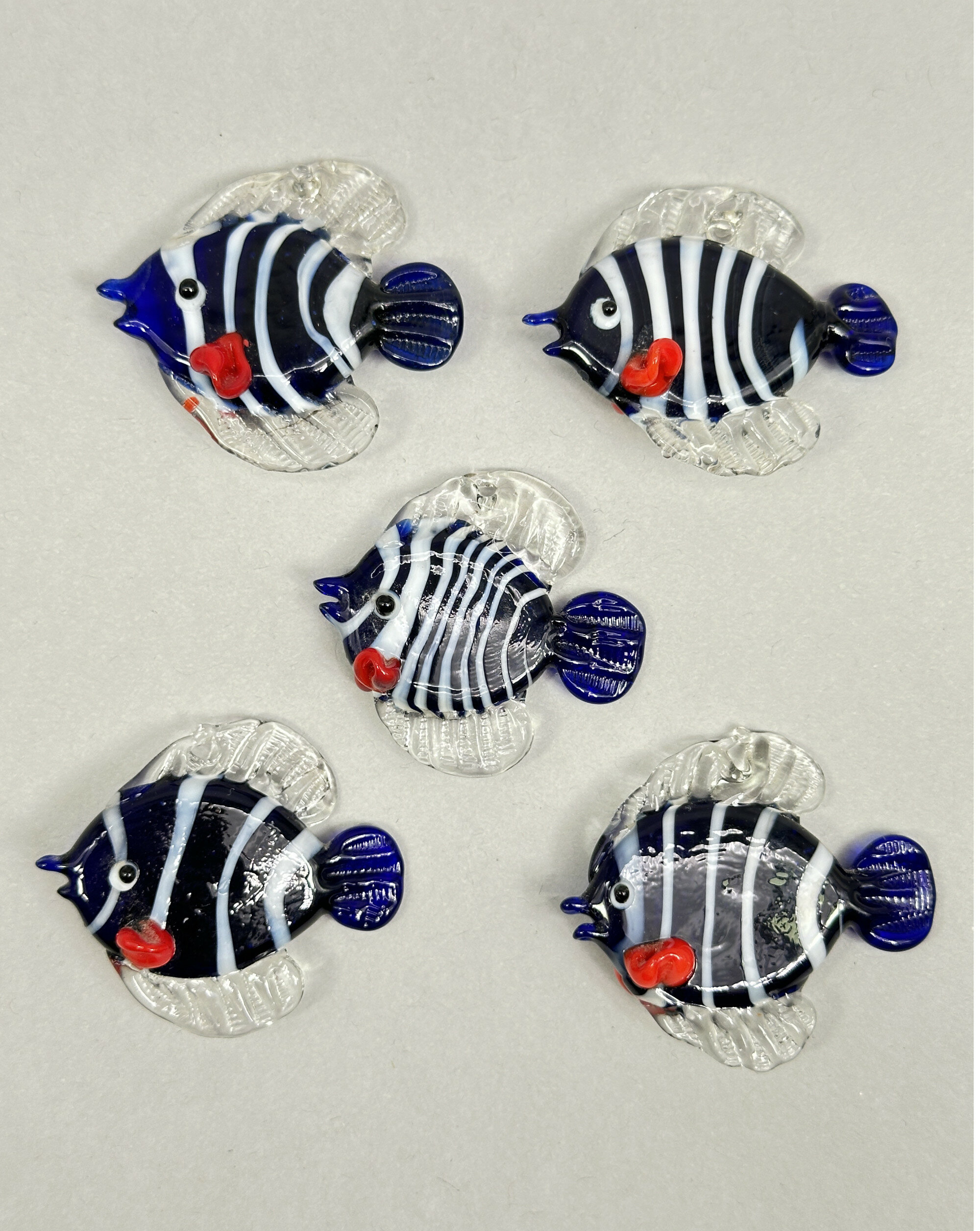
Five Murano glass fish pendants
Price: £25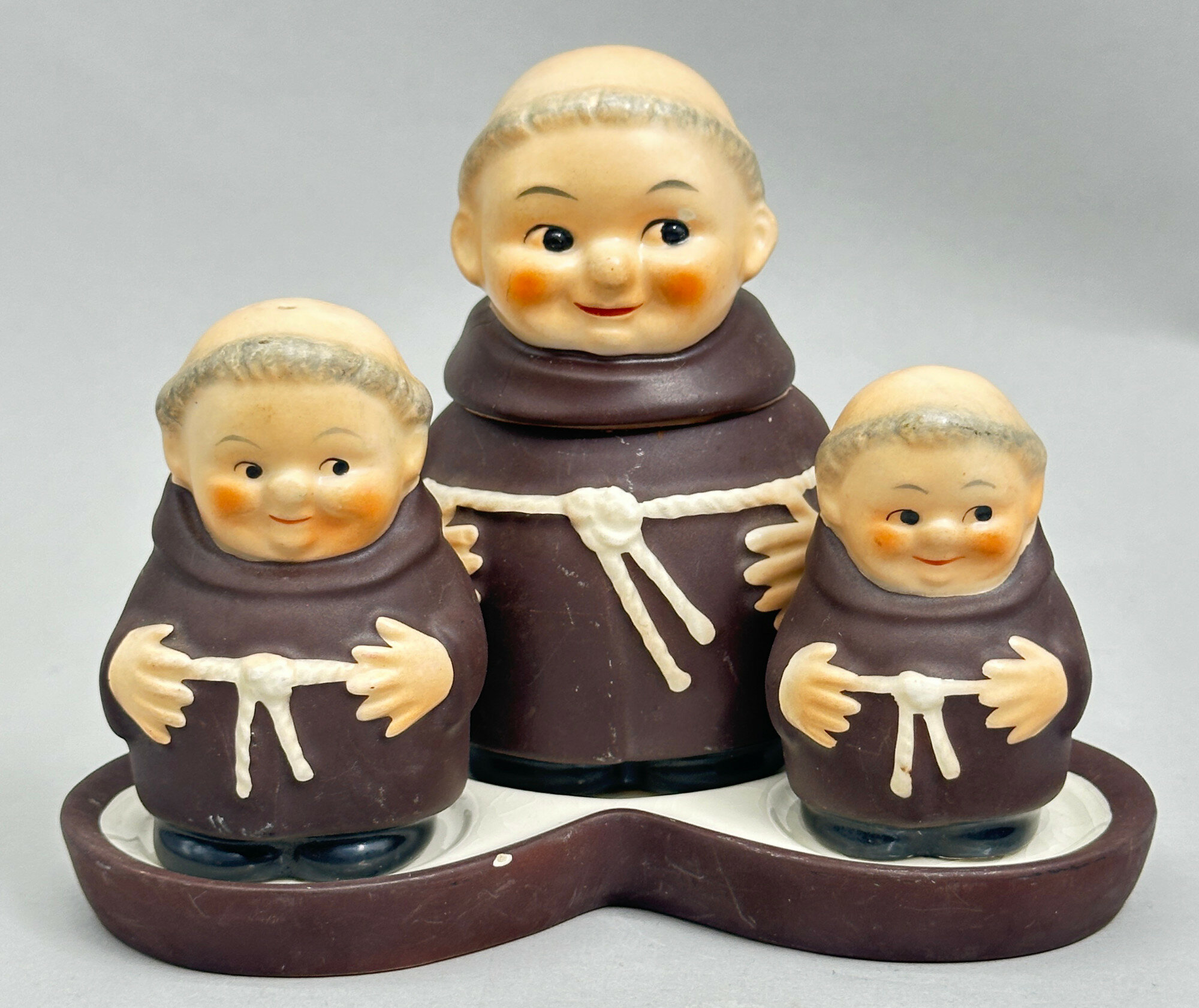
Cruet set in the form of three Friar Tuck Monks on a Tray, Hummel, West Germany, 1960s
Price: £55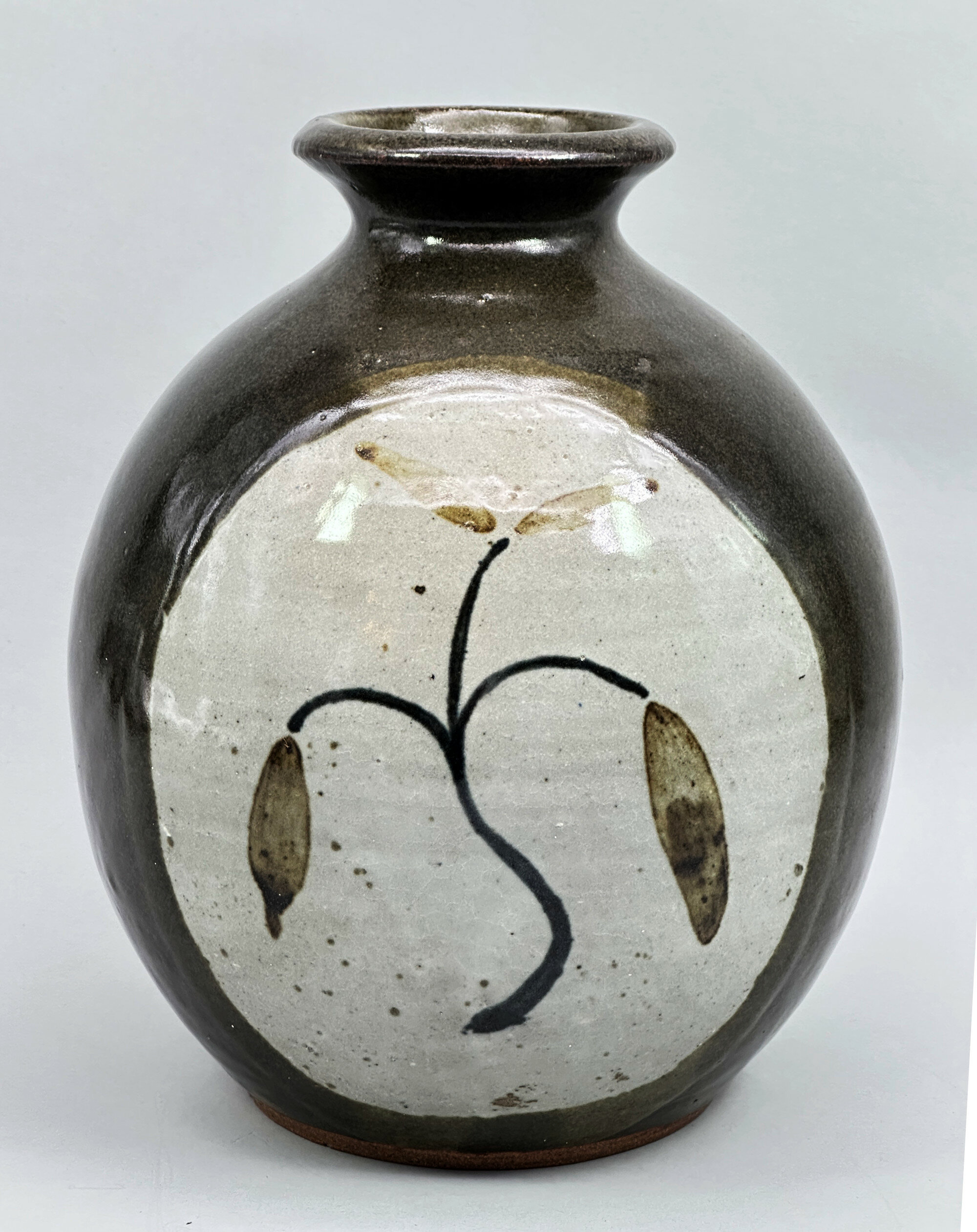
Studio Pottery Vase, Splatt Pottery, Cornwall, 1990s
Price: £55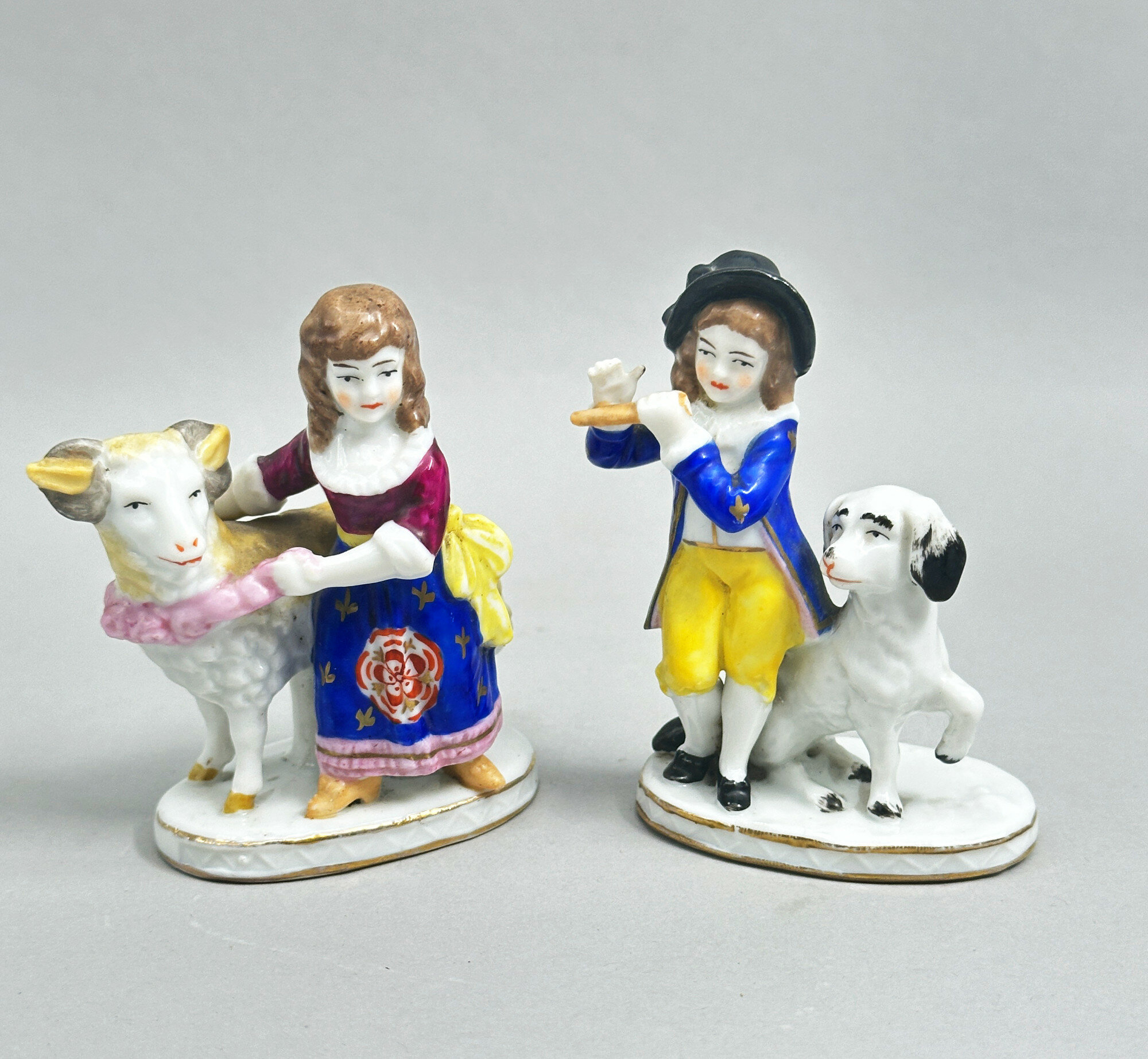
Pair of Chelsea style Figures of a Country Couple, probably Samson late C19th
Price: £55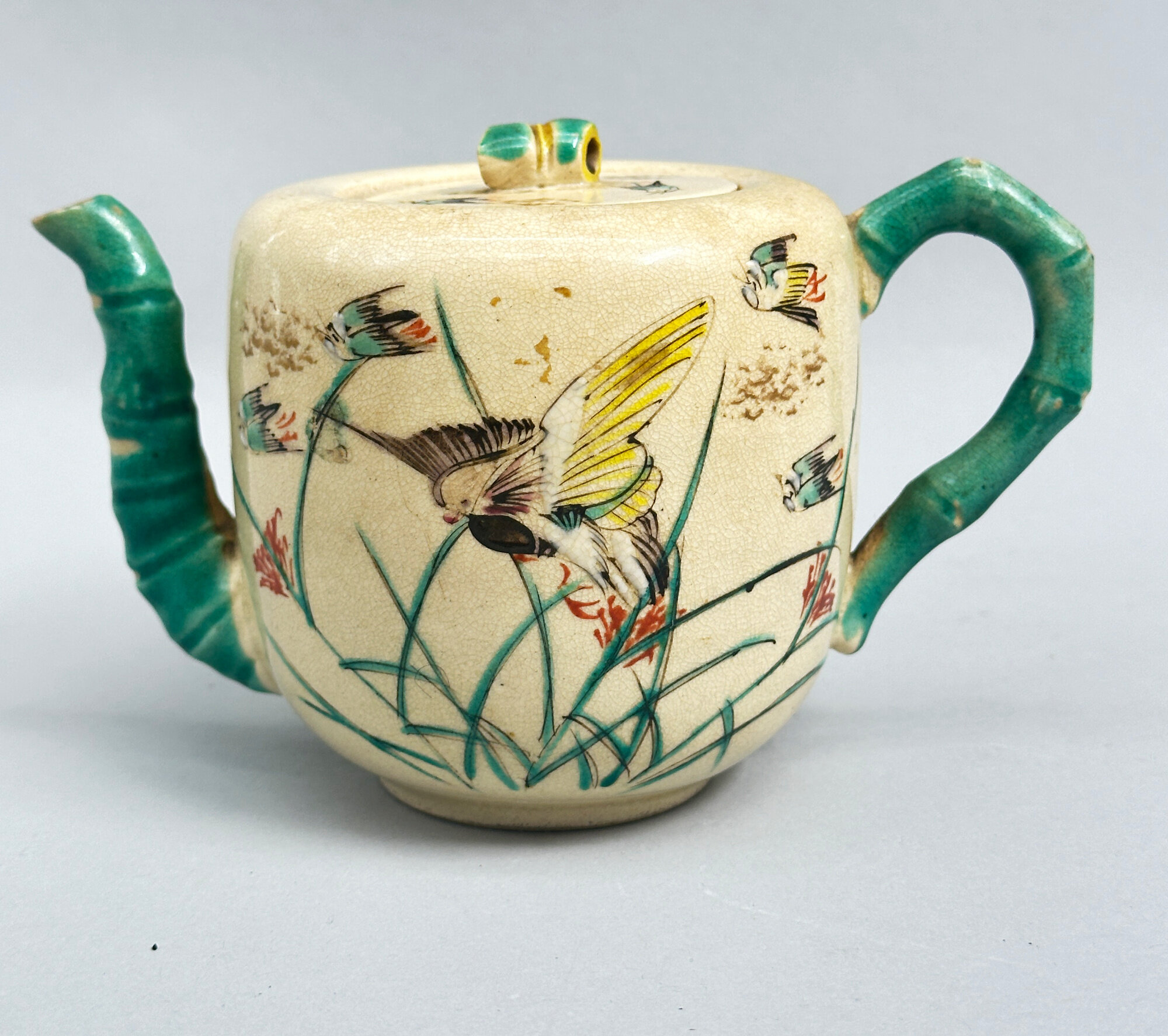
Japanese Awata ware Teapot and Cover, signed, circa 1900
Price: £25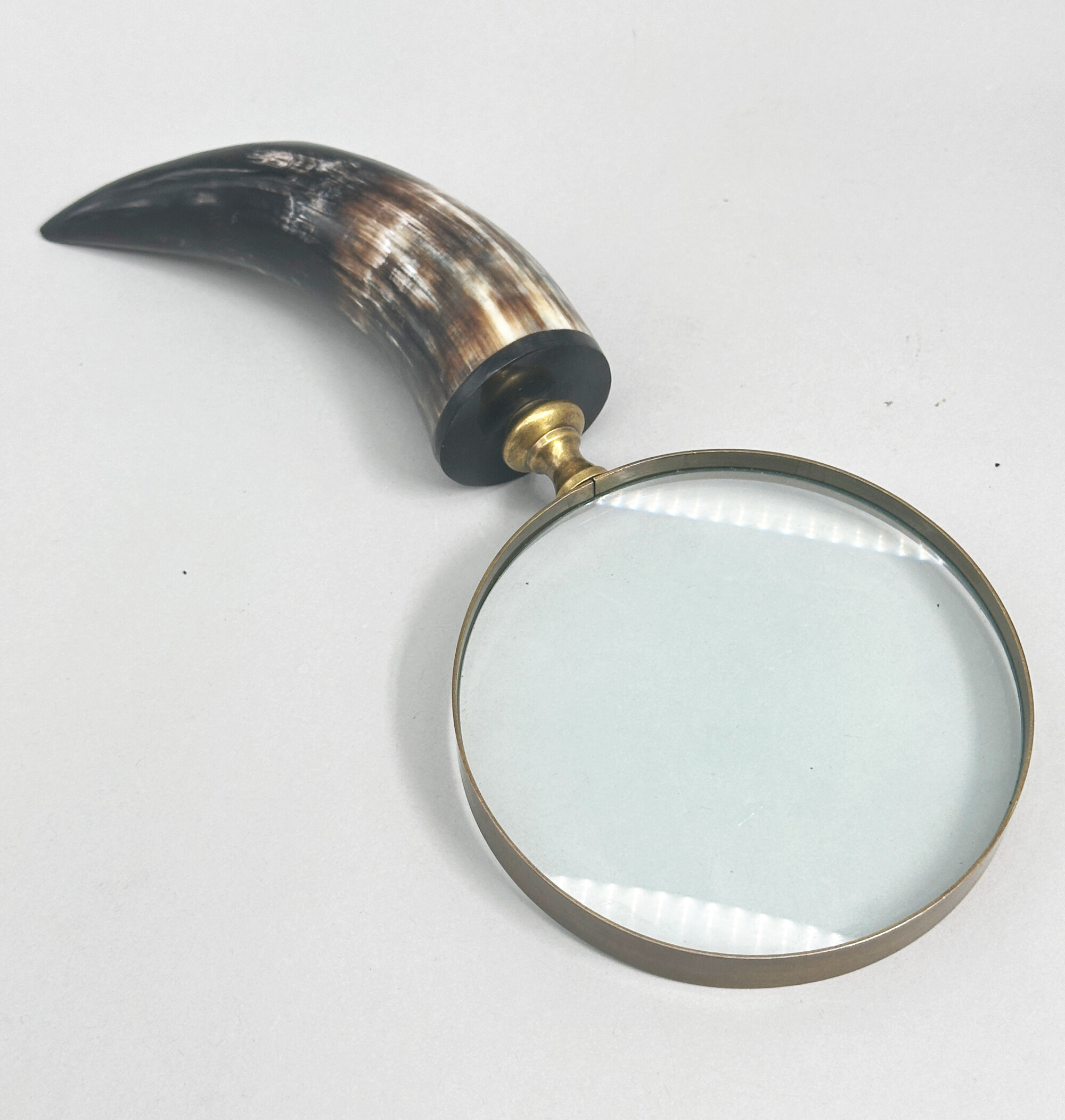
Edwardian large text magnifying glass with horn handle, early C20th
Price: £25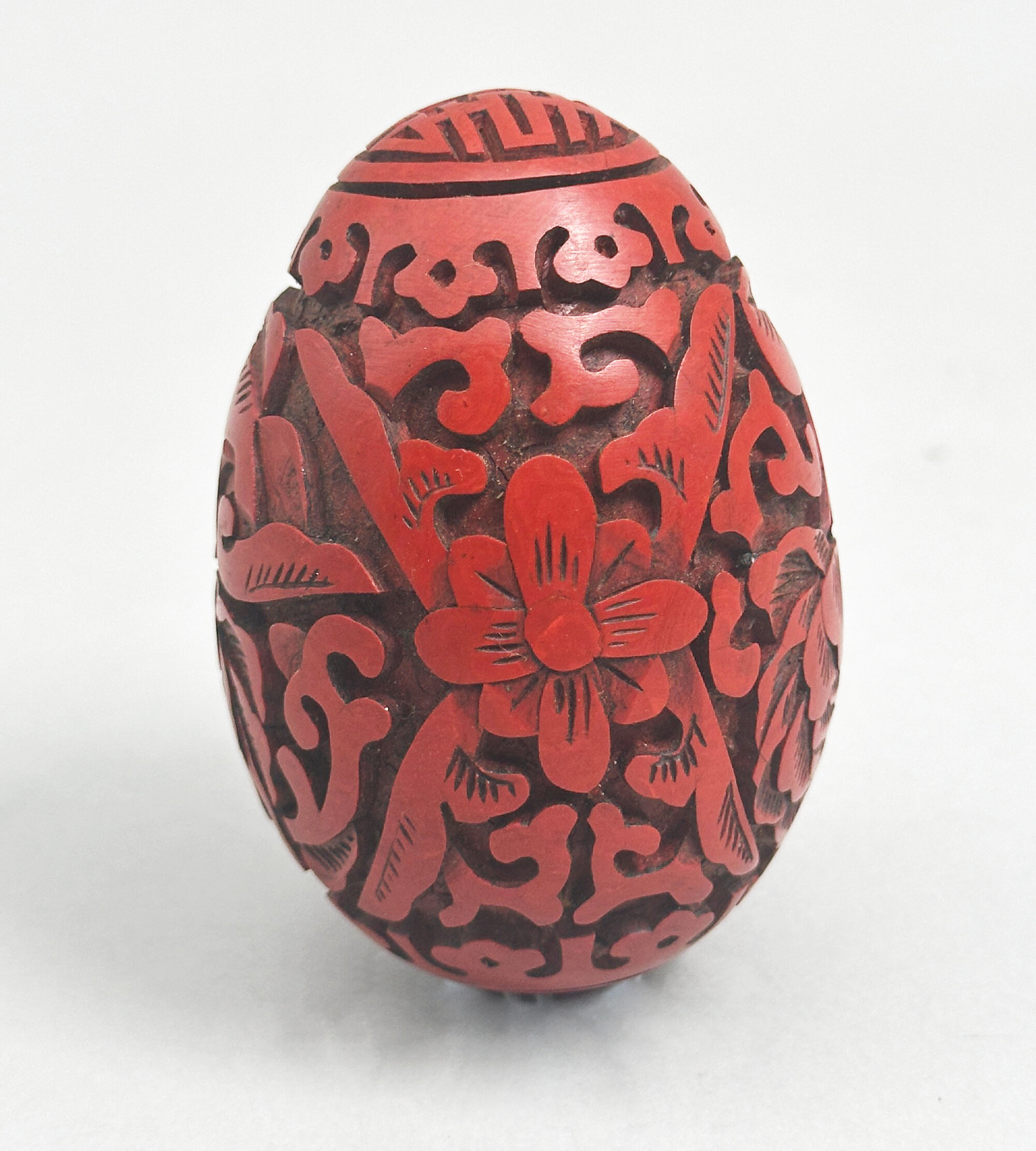
Chinese Cinnabar Lacquer Egg, C20th
Price: £55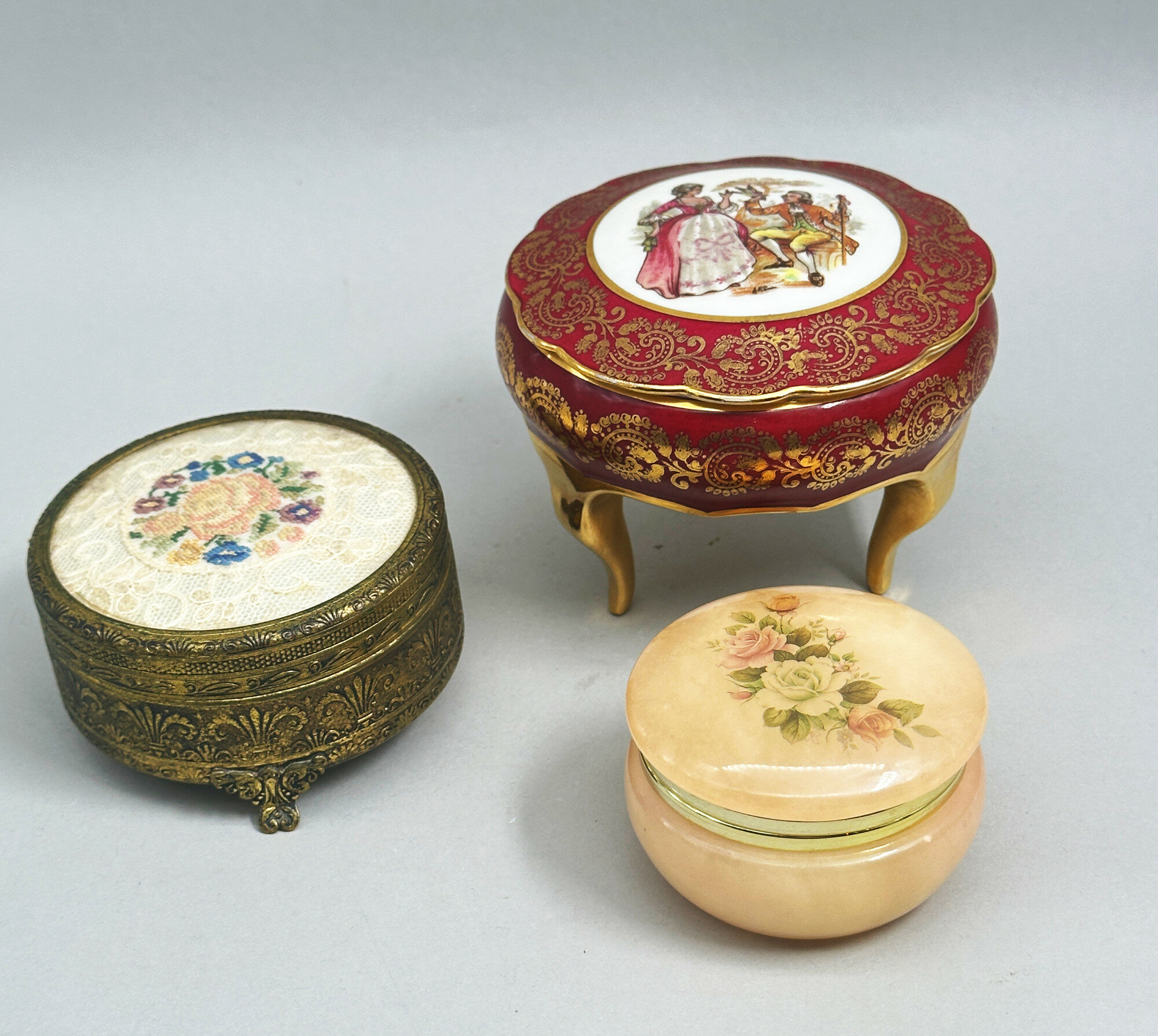
Three Powder Boxes, gilt metal, alabaster and porcelain, mid C20th
Price: £45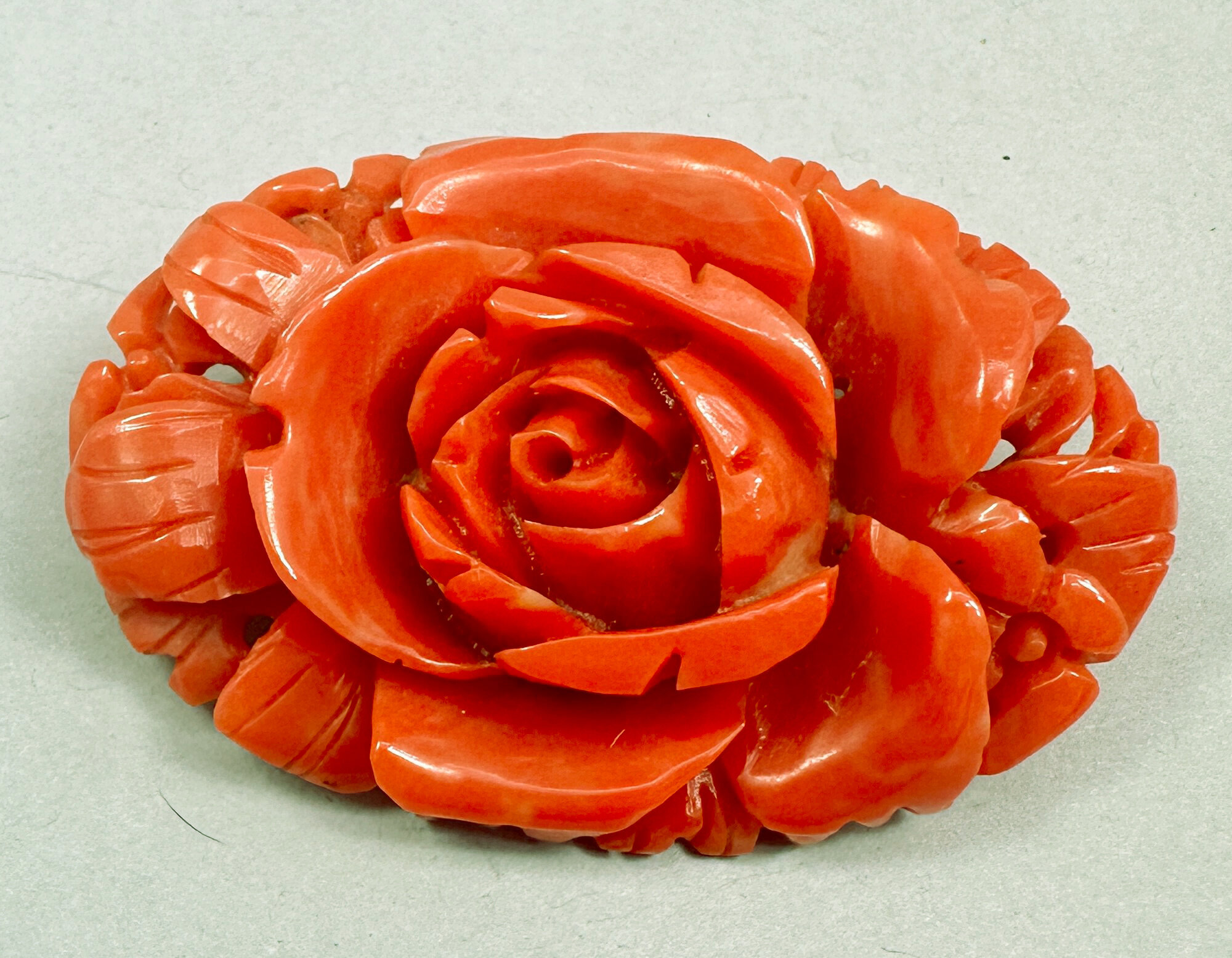
Large faux coral Bakelite brooch, British c1940
Price: £65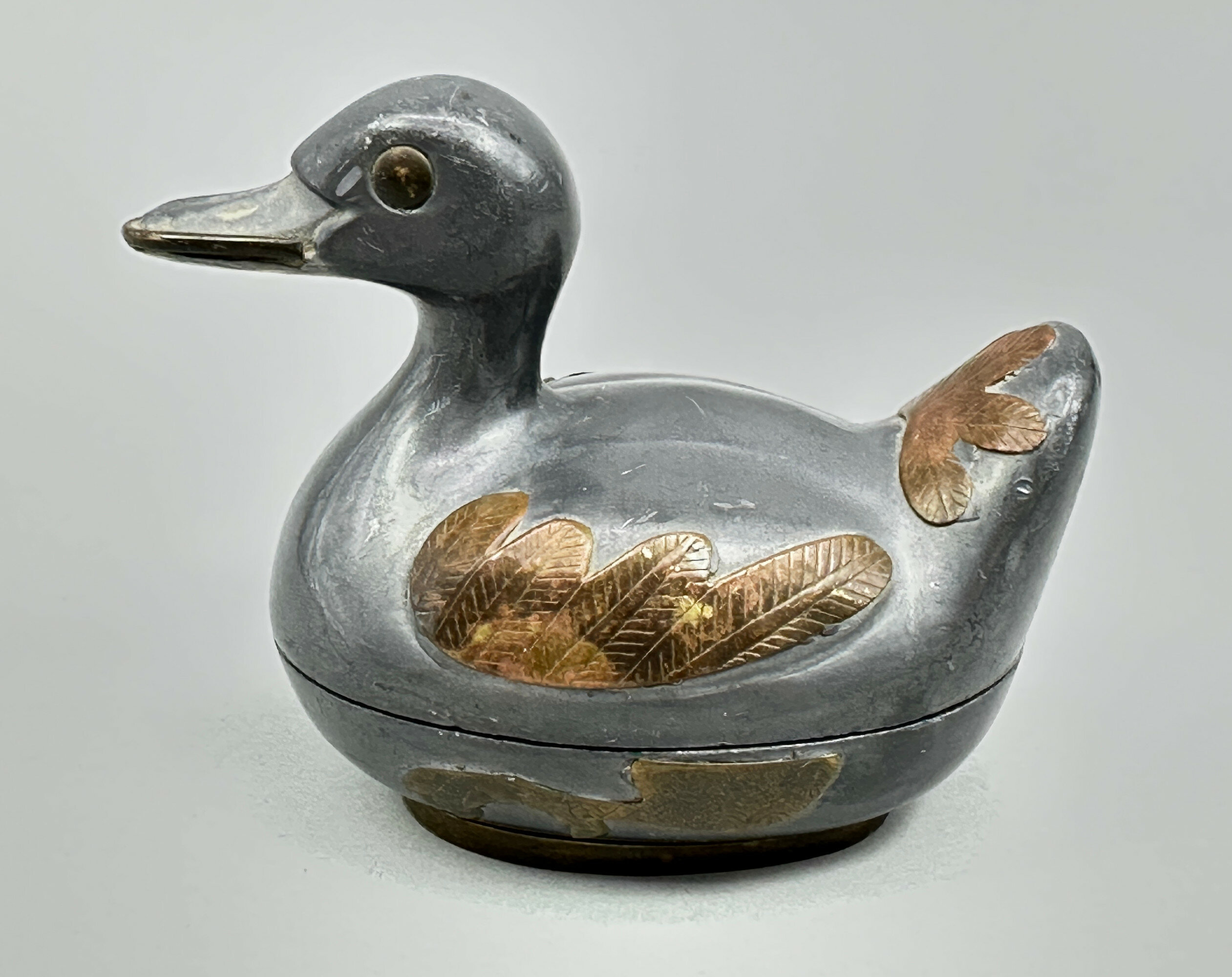
Pewter and brass box and cover in the form of a Mallard Duck, Gatco, Hong Kong, 1960s
Price: £25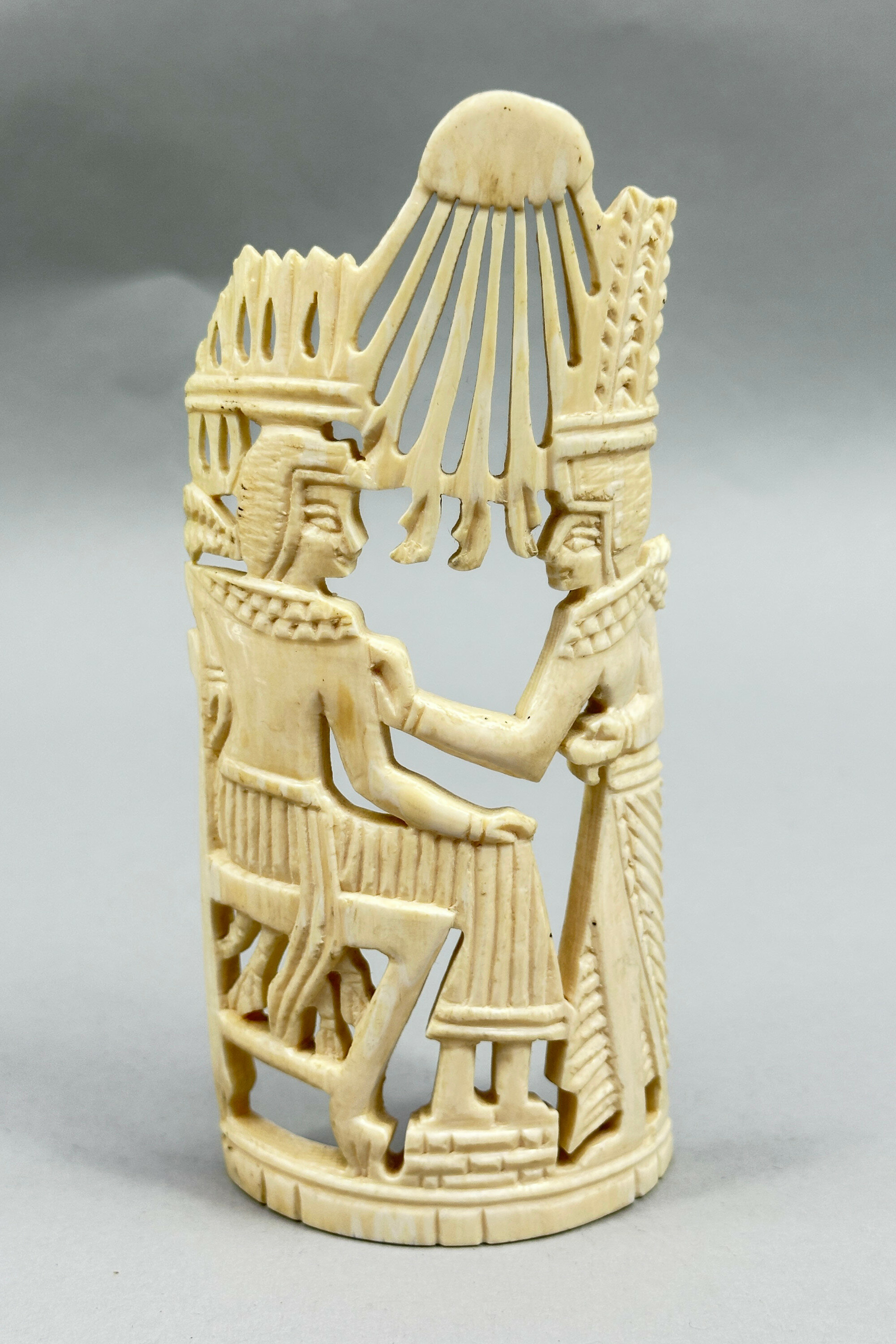
Egyptian table decoration depicting a Pharoah and Attendant, c1940
Price: £45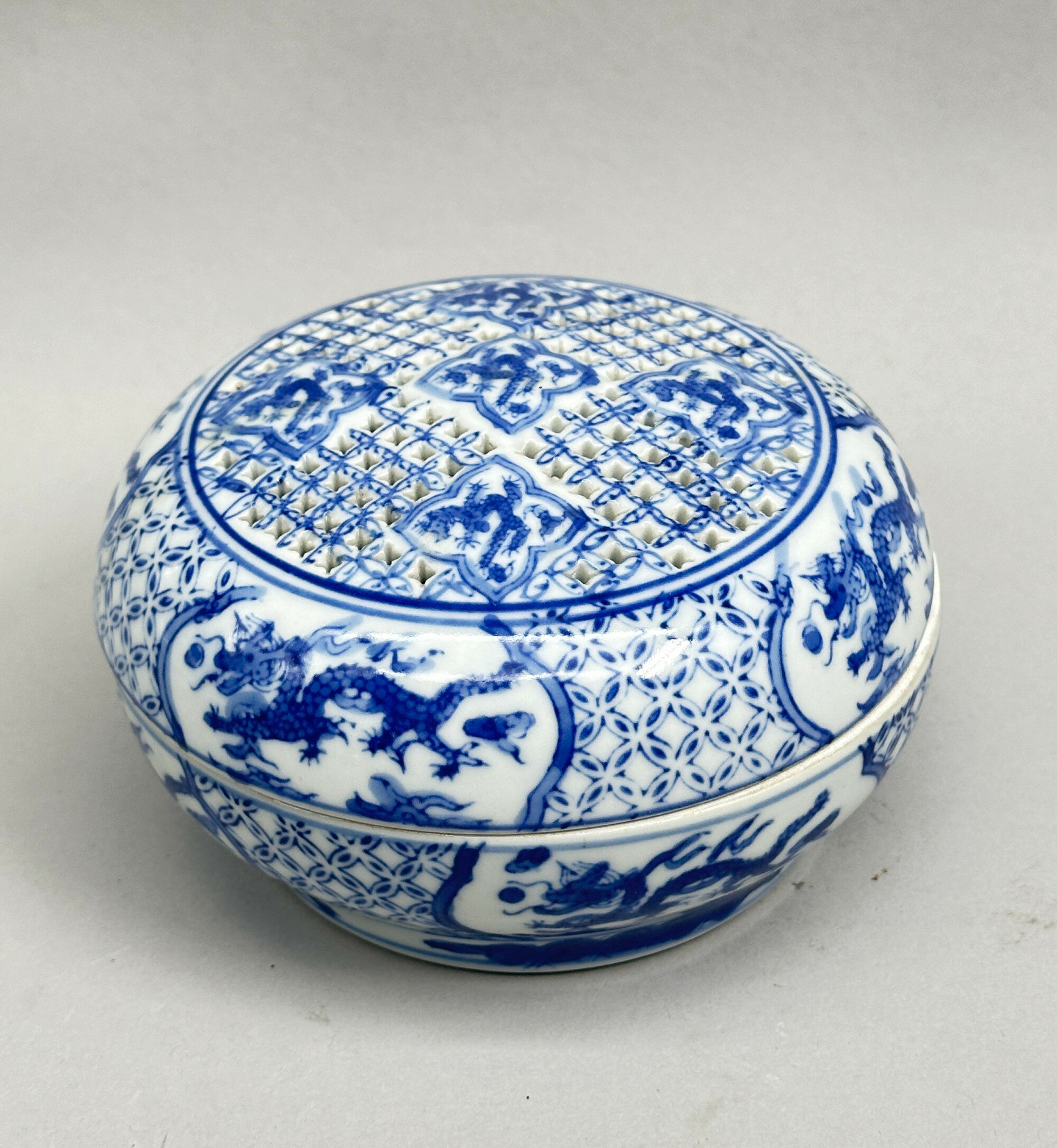
Chinese Blue and White Box and Cover with pierced lid, late C20th
Price: £25The Charles Sadek Import Company was founded in 1936 by the father and son Charles and Norman Sadek and began by importing decorative items from Japan later broadening their range to a wider variety of suppliers including China. These pieces were sold under the ‘Andrea by Sadek’ brand, named after Norman's daughter Andrea. The business continued to a third generation until it was taken over by Fitz & Floyd in 2015.
This box, then, is a typical example of their range of wares, good quality decorative items marketed at an affordable price. The quality of these boxes can vary and this piece seems to be an above average example.
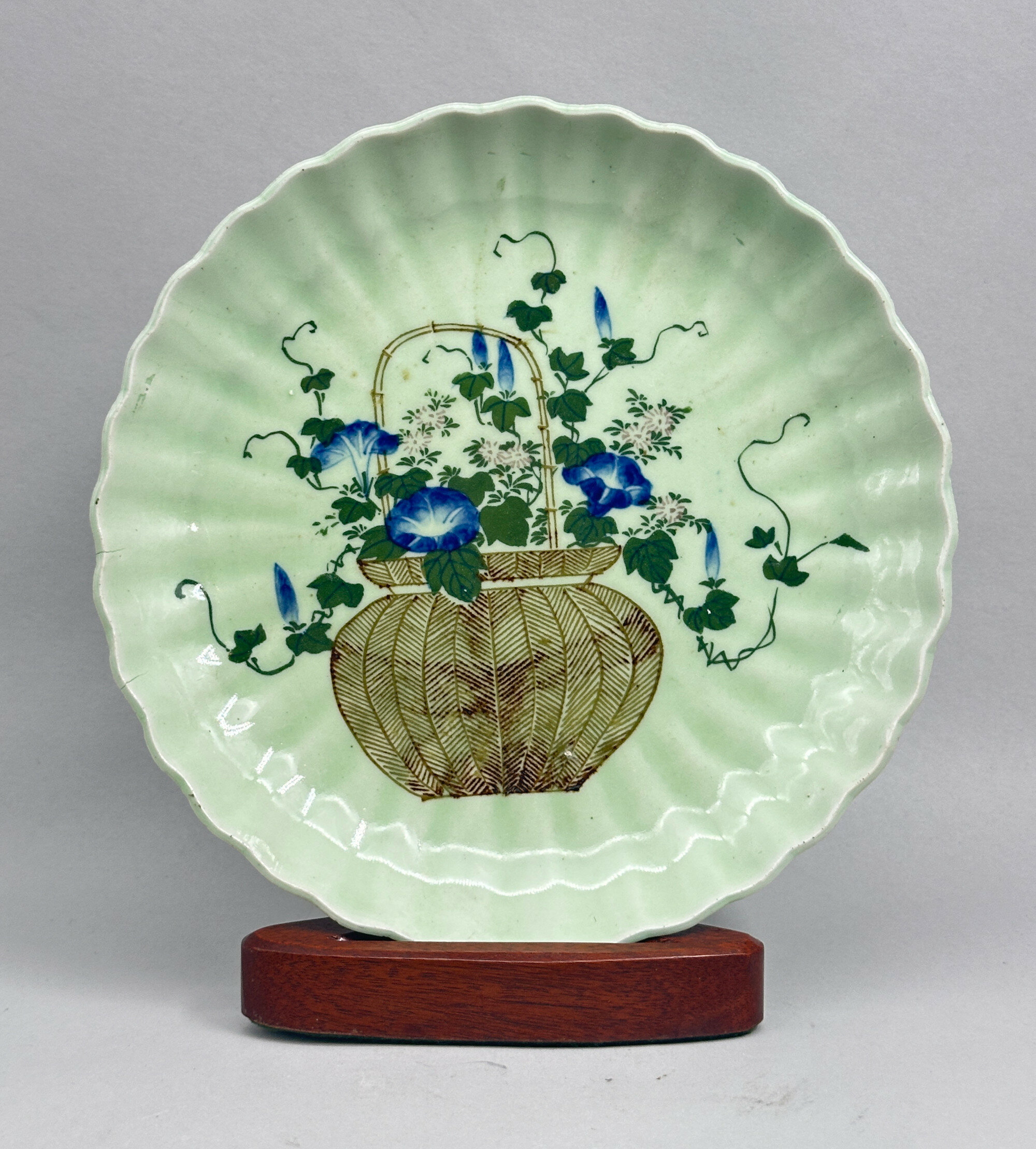
Japanese Celadon Dish decorated basket of flowers, circa 1900
Price: £45Celadon glazed wares with enamel decoration in fairly muted colours are a familiar product amongst the ceramics produced by Japanese potters at the end of the nineteenth century but examples of this type of dish are rather less commonly found. The basket of flowers is a regular decorative feature of Chinese ceramics, but given here a slightly different interpretation with the depiction of lotus, the emblem of summer. The mark probably imitates Chinese ‘commendation’ marks inscribed within the foot rim, another nod on the part of the Japanese potters towards their Chinese counterparts.
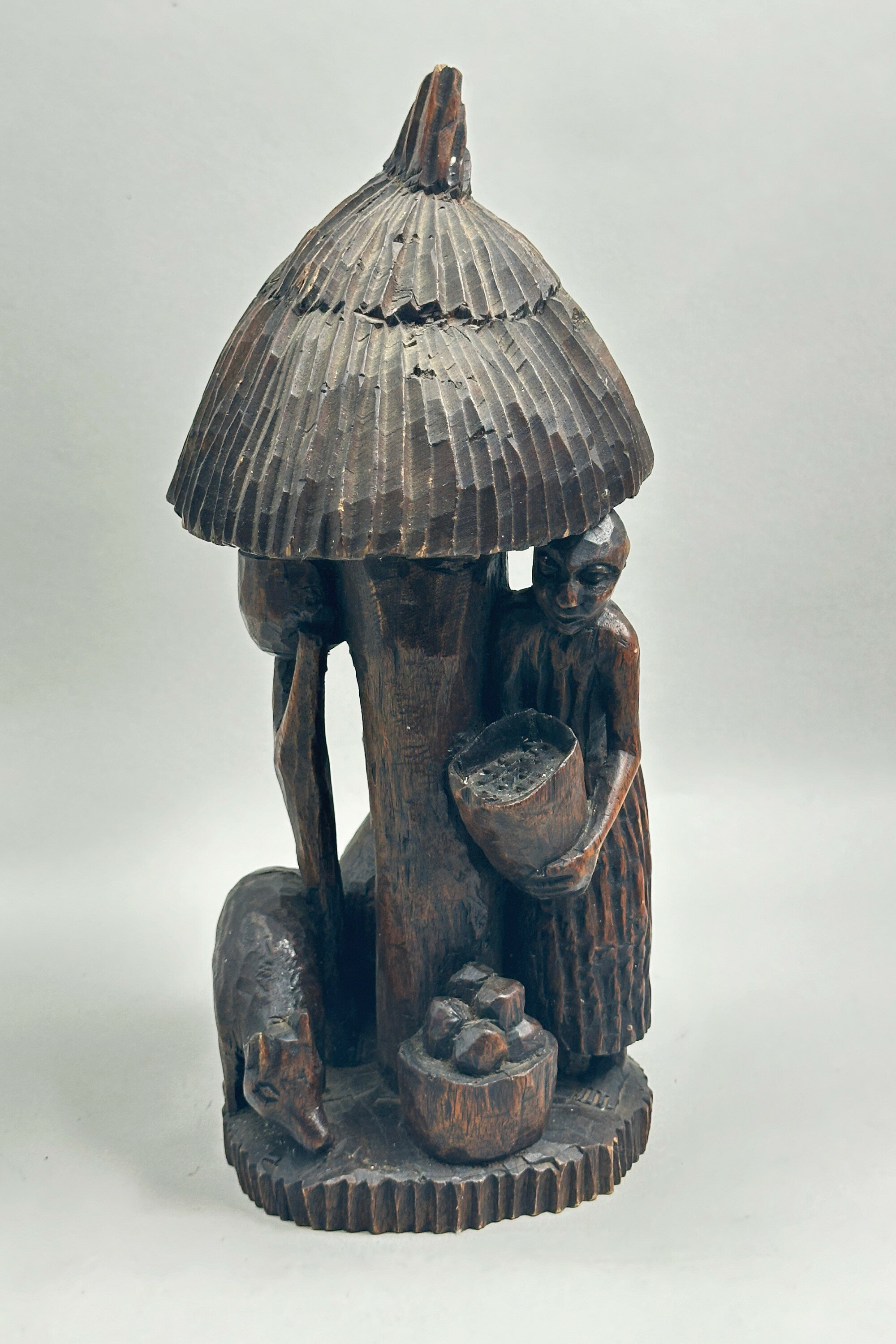
African wood figural group, Guinea c1970
Price: £35
An unusual pair of Art Deco style Japonaiserie ceramic vases, probably French 1920s/1930s
Price: £75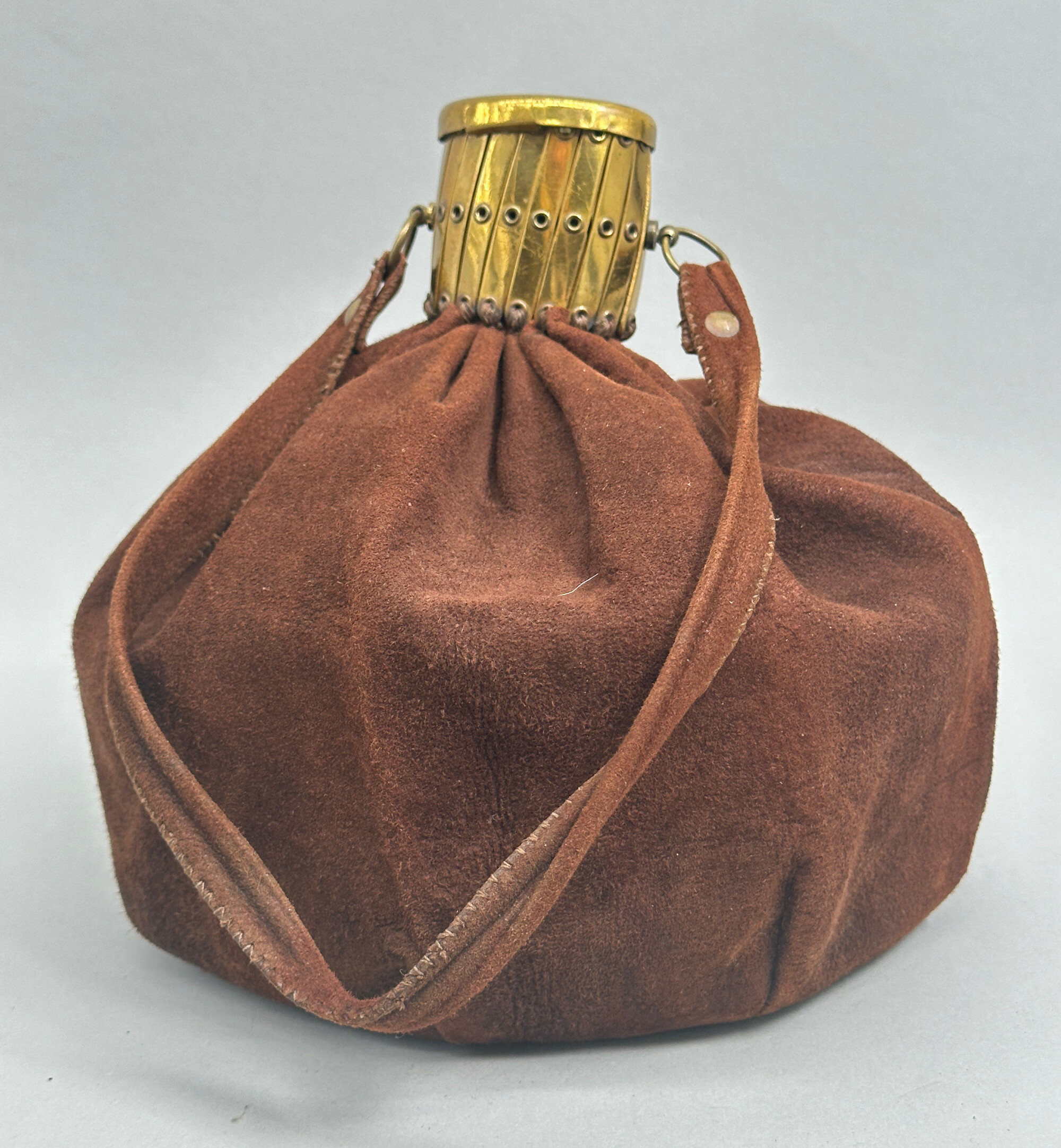
Large suede pouch bag with concertina opening c1930
Price: £65
Large faux coral Bakelite brooch, British c1940
Price: £45
Chřibská Glass bowl designed by Josef Hospodka, Czech 1970s
Price: £75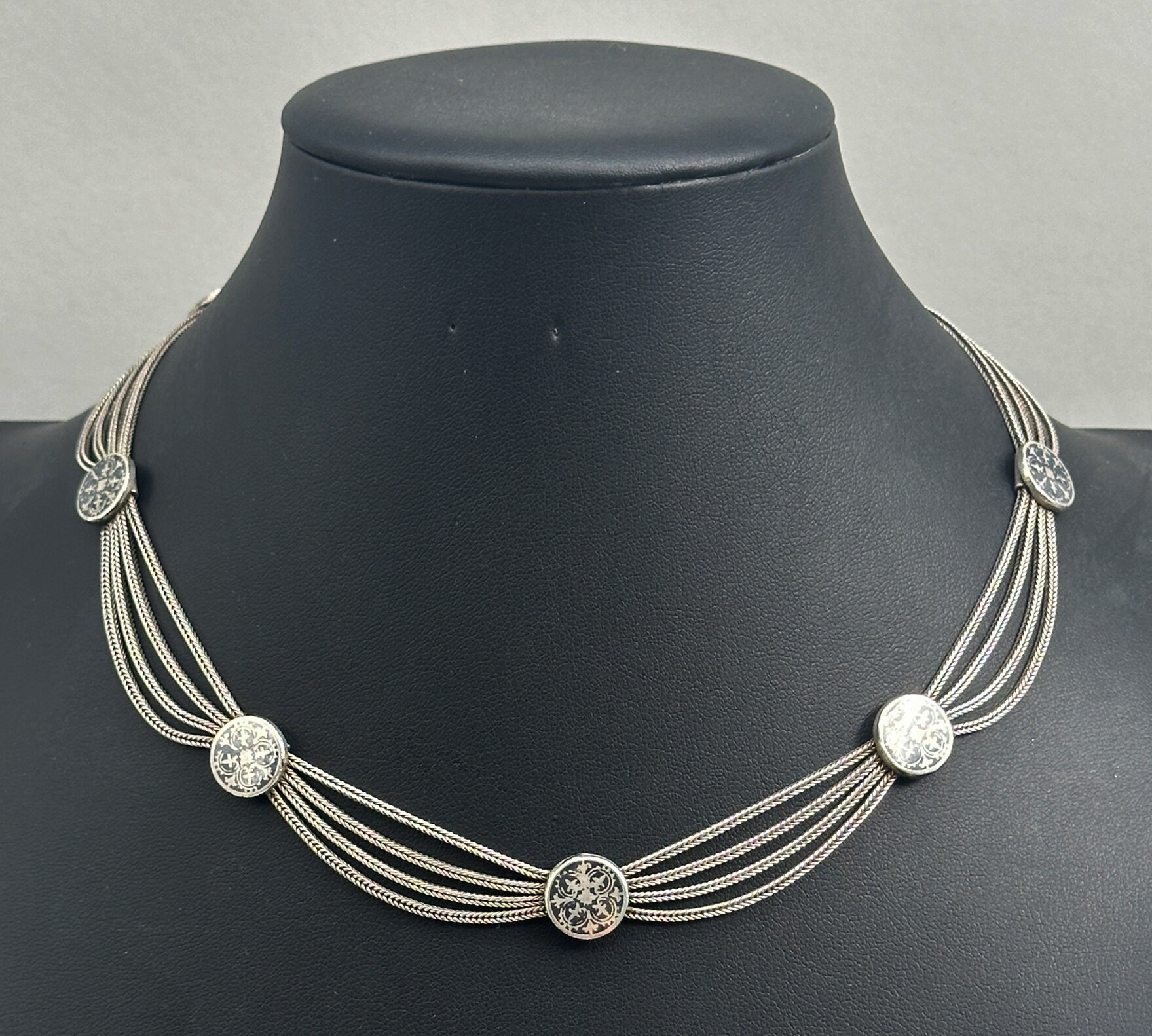
Islamic Silver Necklace with Niello work plaques, c1930
Price: £75The technique used is that of ‘niello’ work. (The word derives either from the classical Latin word ‘nigellum’ or the later mediaeval words ‘nigello’ or ‘neelo’.) Niello is a black mixture, usually of sulphur, copper, silver, and lead and used as an inlay on engraved or etched metal, especially silver. Added as a paste, it hardens to a black colour after firing and is then polished. Here it is the ground that formed from niello while the design shows though in silver, a less common version.
There is much skill in the craftsmanship here and the result is a piece of classic and timeless simplicity.

Victorian Black Watch iron doorstop c1890
Price: £25
Pair of Beige Opaline Glass Vases, enamelled decoration, probably French late C19th
Price: £75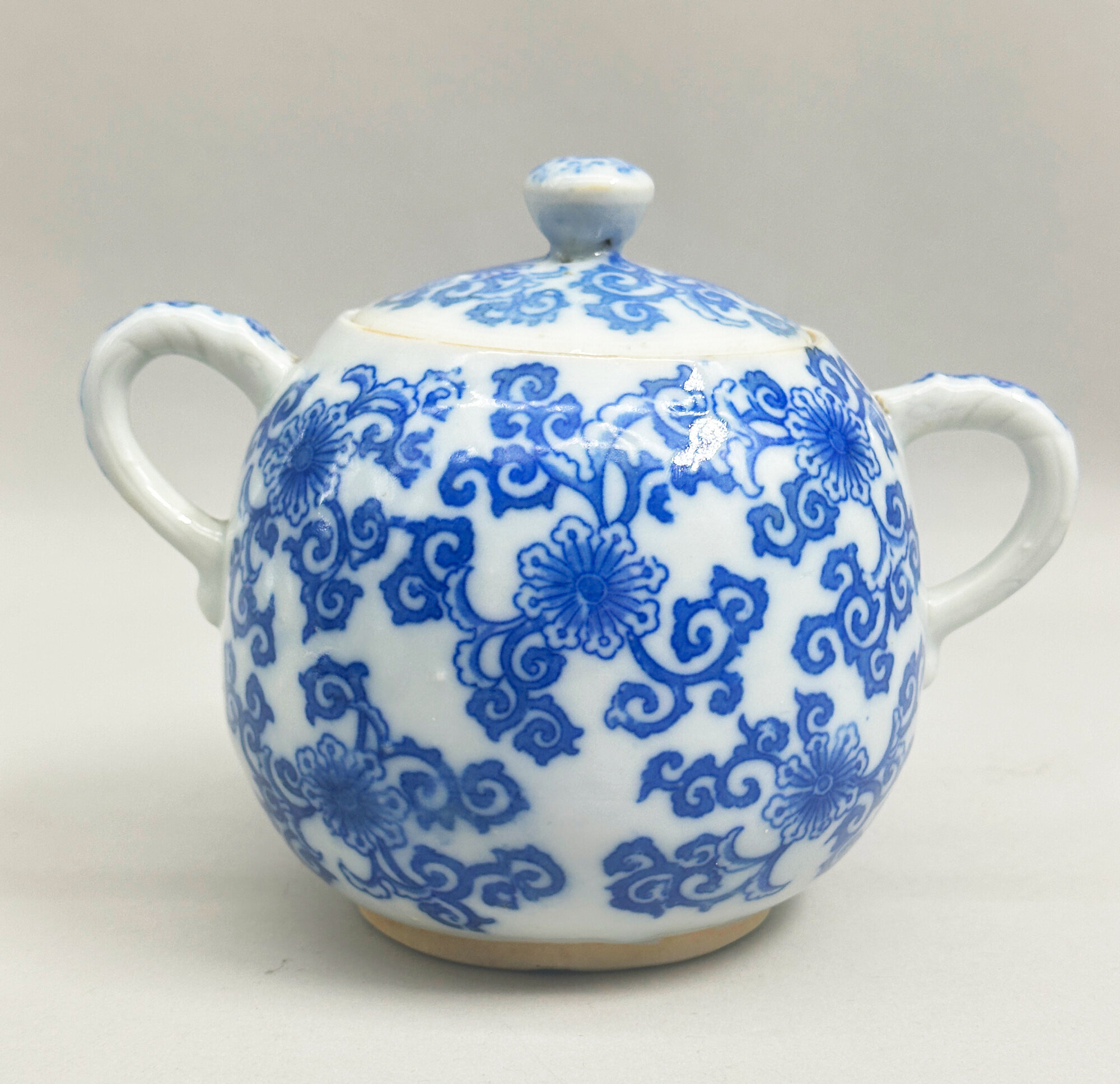
Japanese Blue and White Sugar Bowl and Cover, first half C20th
Price: £25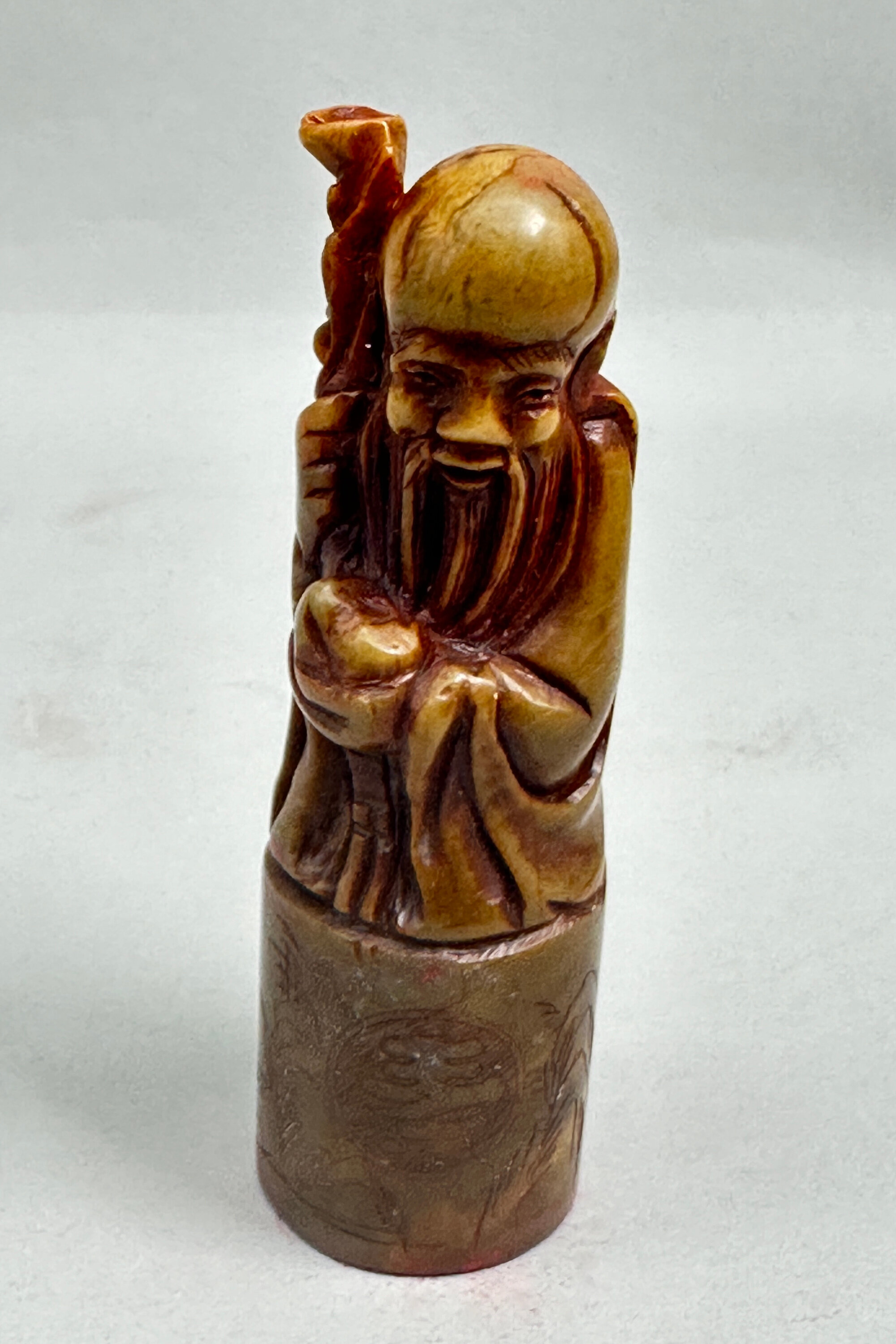
Chinese Soapstone Seal with Shou Lao, C20th
Price: £45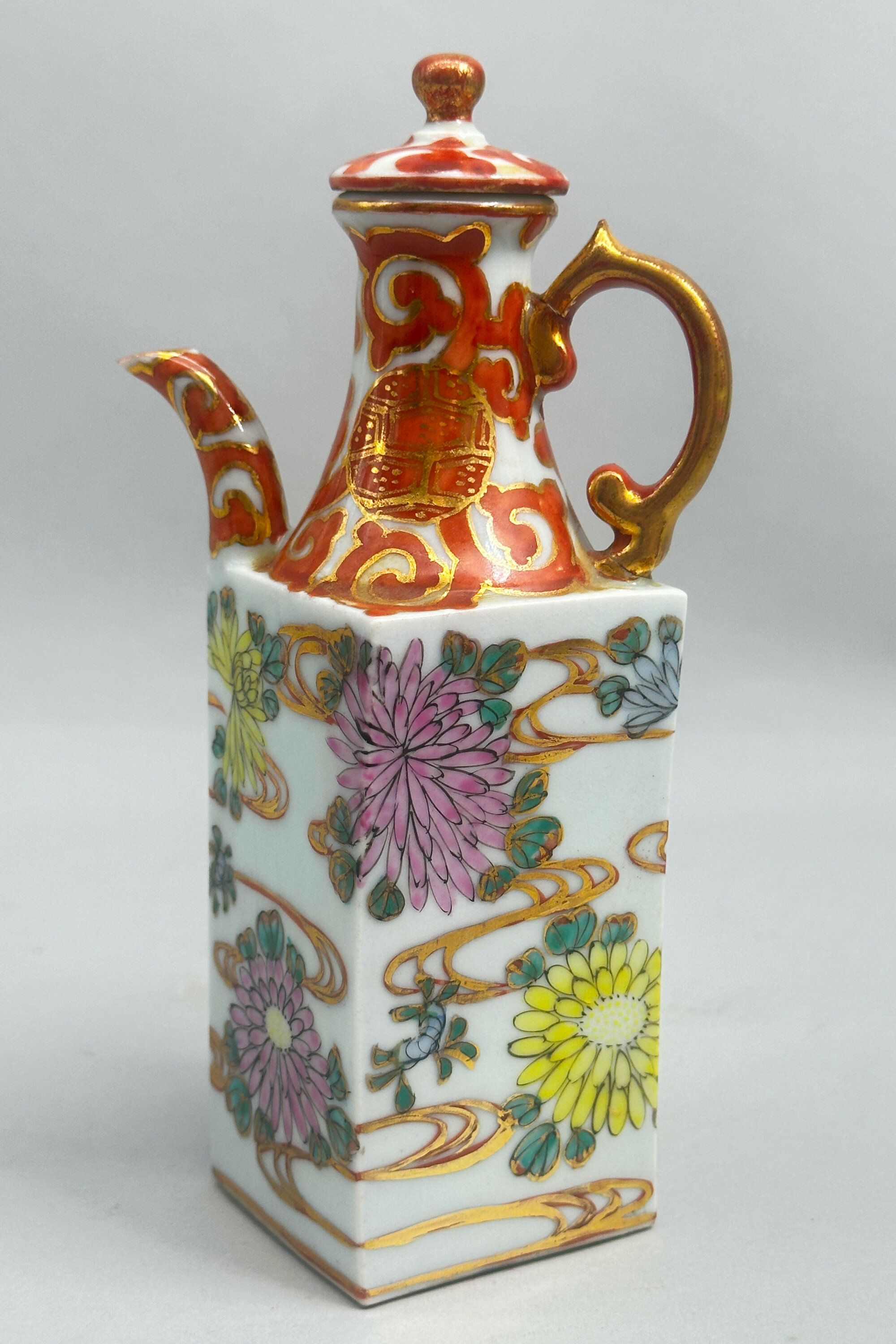
Japanese Arita Square Sake Flask and Cover decorated flowers, C20th
Price: £25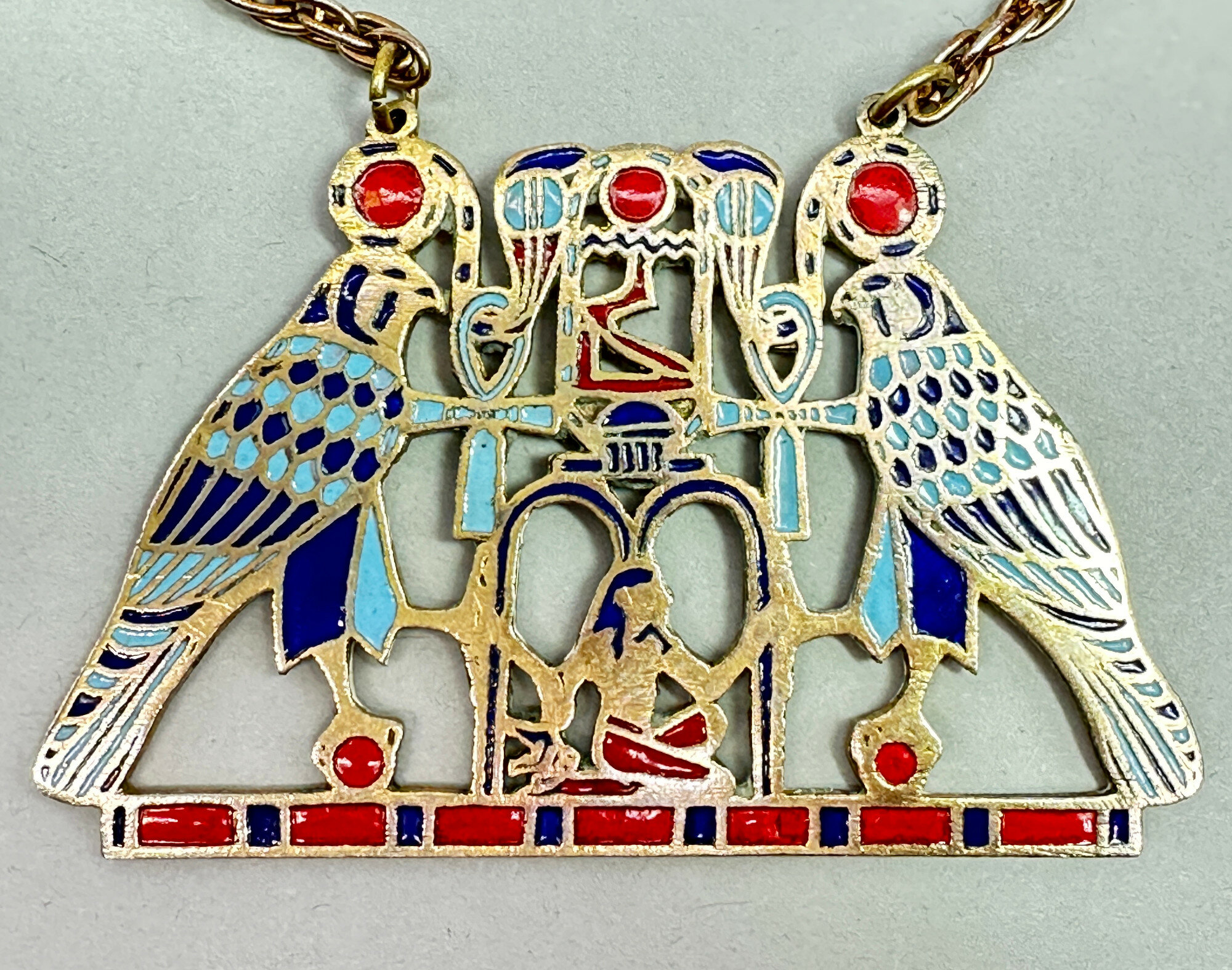
Outstanding Egyptian Revival necklace c1960
Price: £125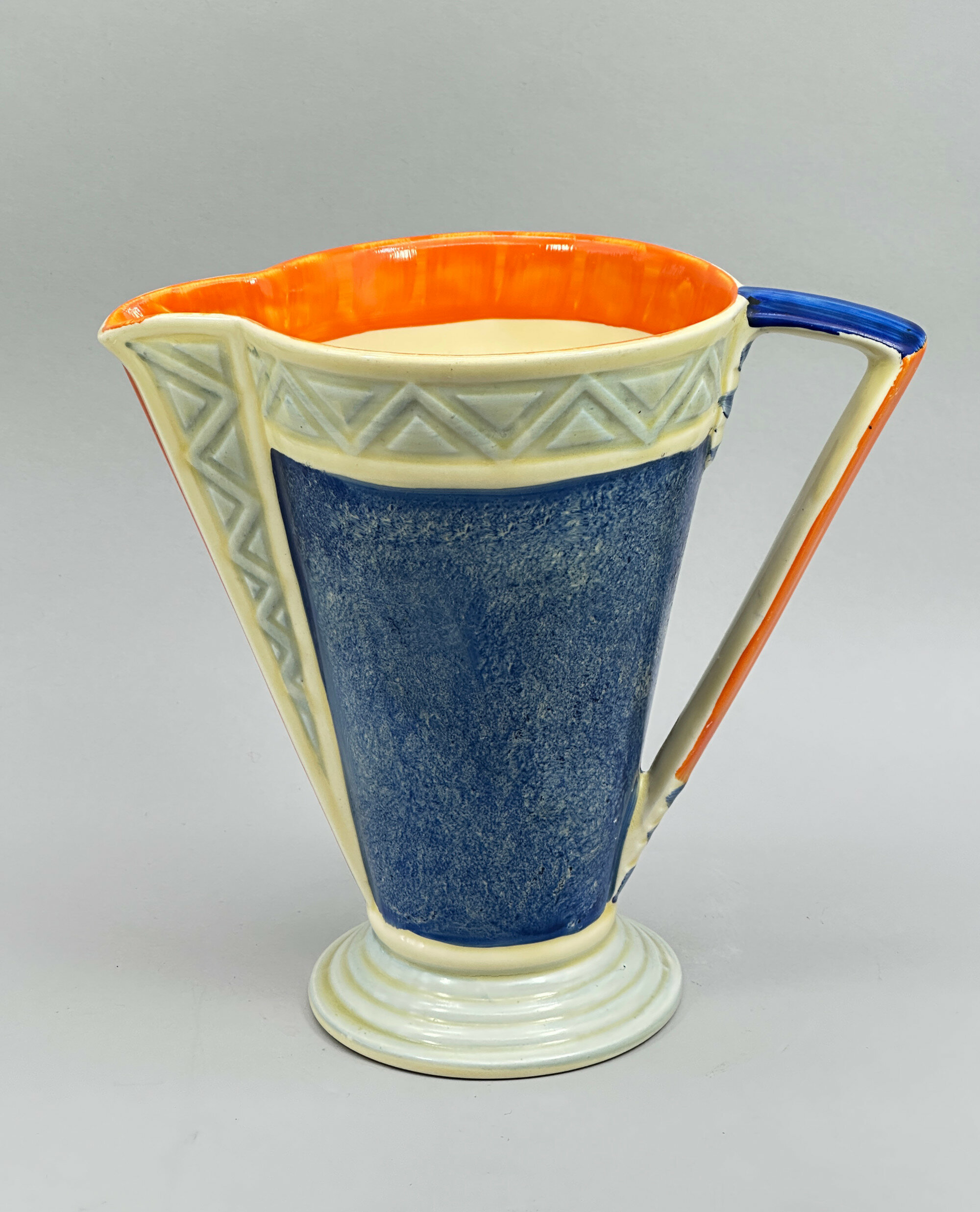
Myott Son & Co Art Deco style Jug, 1930s
Price: £75Myott Son & Co was one of famous the Staffordshire Potteries and traded for over 90 years. Founded in 1898, it began production in Stoke moving to Cobridge four years later. Its output was continuous but in 1949 the firm suffered a disastrous fire which reportedly destroyed the firm's records and pattern books and probably for this reason it relocated to Hanley. In 1969 it was bought by the American firm Interpace, but the Myott name was retained until 1976 when the company merged with Alfred Meakin Ltd, who were based in Tunstall, to form Myott-Meakin Ltd.
Myott now are best known for their Art Deco inspired designs from the 1930s. Following the success of their competitors, most notably the designs of Clarice Cliff, Myott established their own popular following and produced pieces which could rival the output of their celebrated competitors. This jug, with its clean lines and bold colours is an excellent example and like others of the same form bears the pattern umber ‘8498’. Some of their glazes were easily subject to wear and blue was less commonly used so both the condition and the colour range of this jug make it a highly desirable collector’s item.
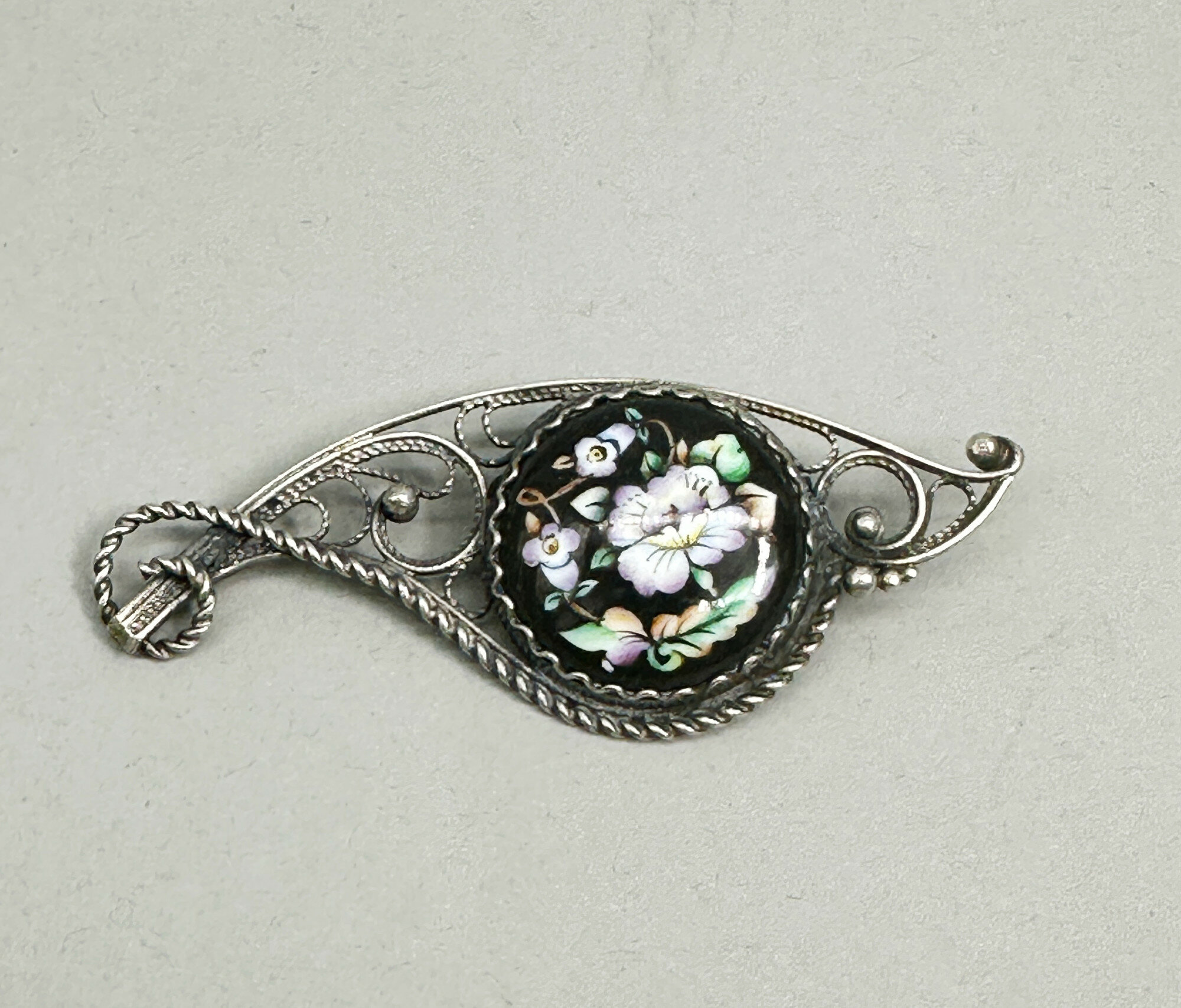
Russian Enamel Brooch, probably Rostov Finift, mid C20th
Price: £20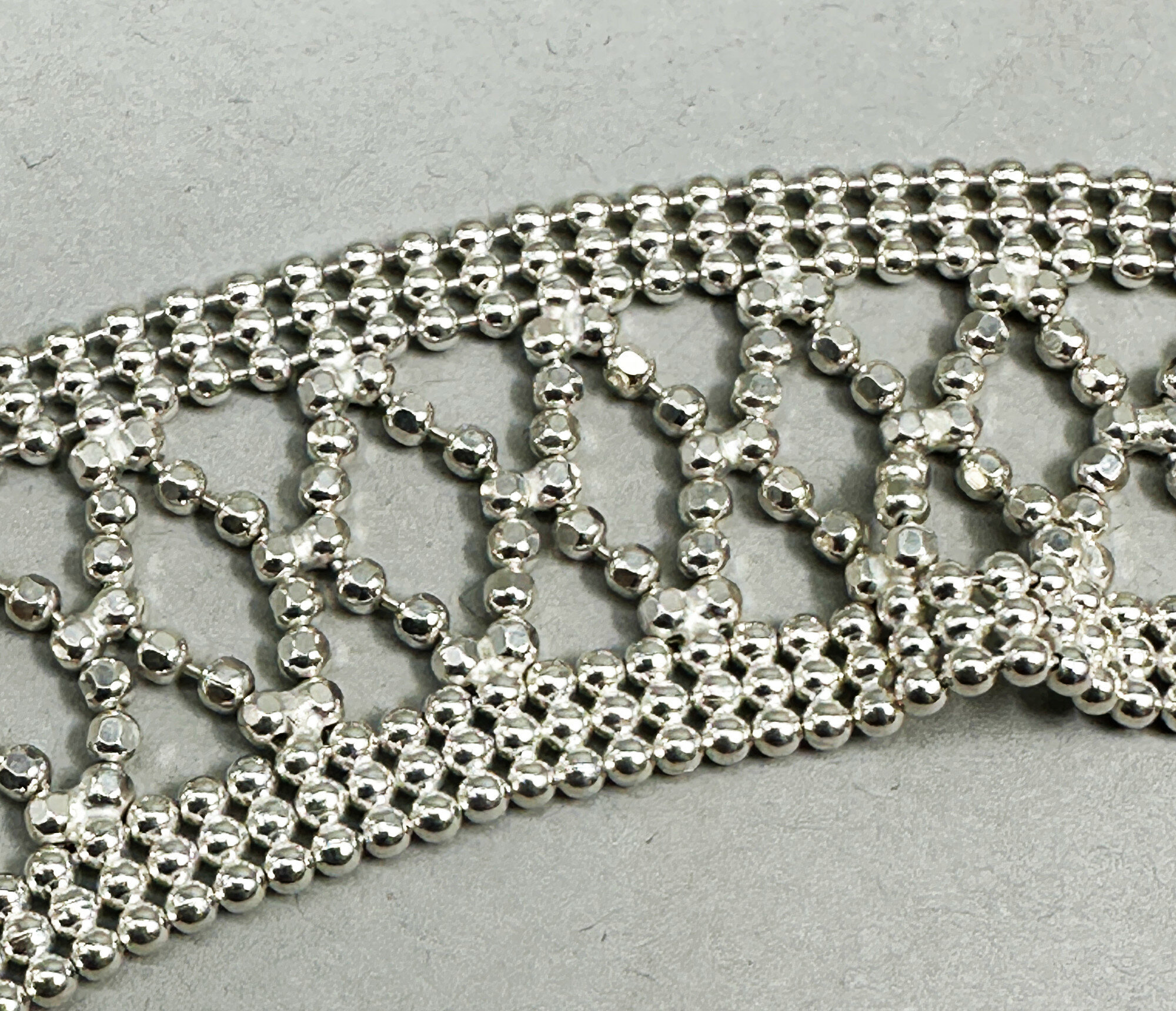
Diamond cut millegrain silver bracelet, 20th century
Price: £45
Two small metal perfume Flasks and Stoppers, 1920s
Price: £35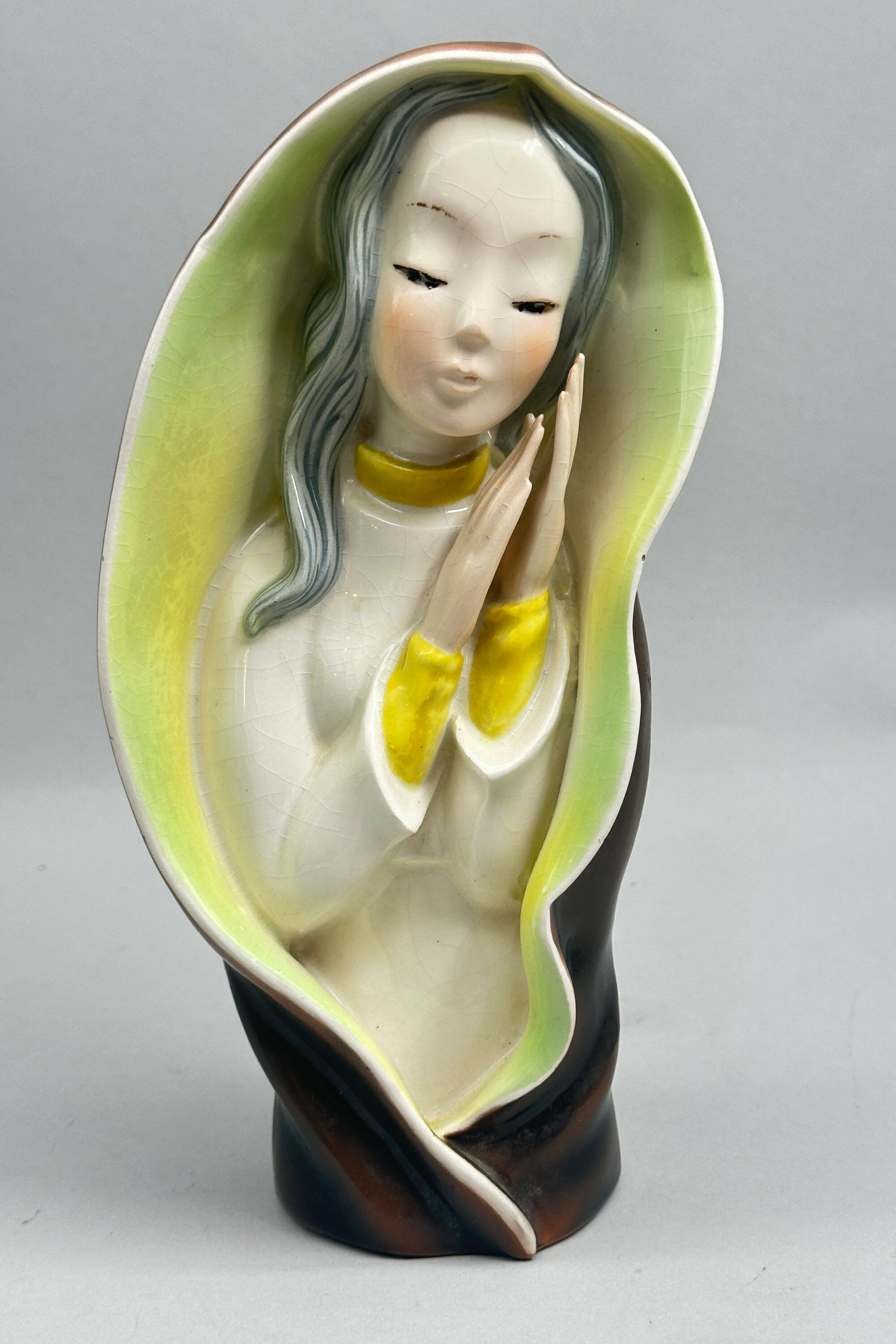
Figure of a Young Girl Praying, Continental, probably mid C20th
Price: £55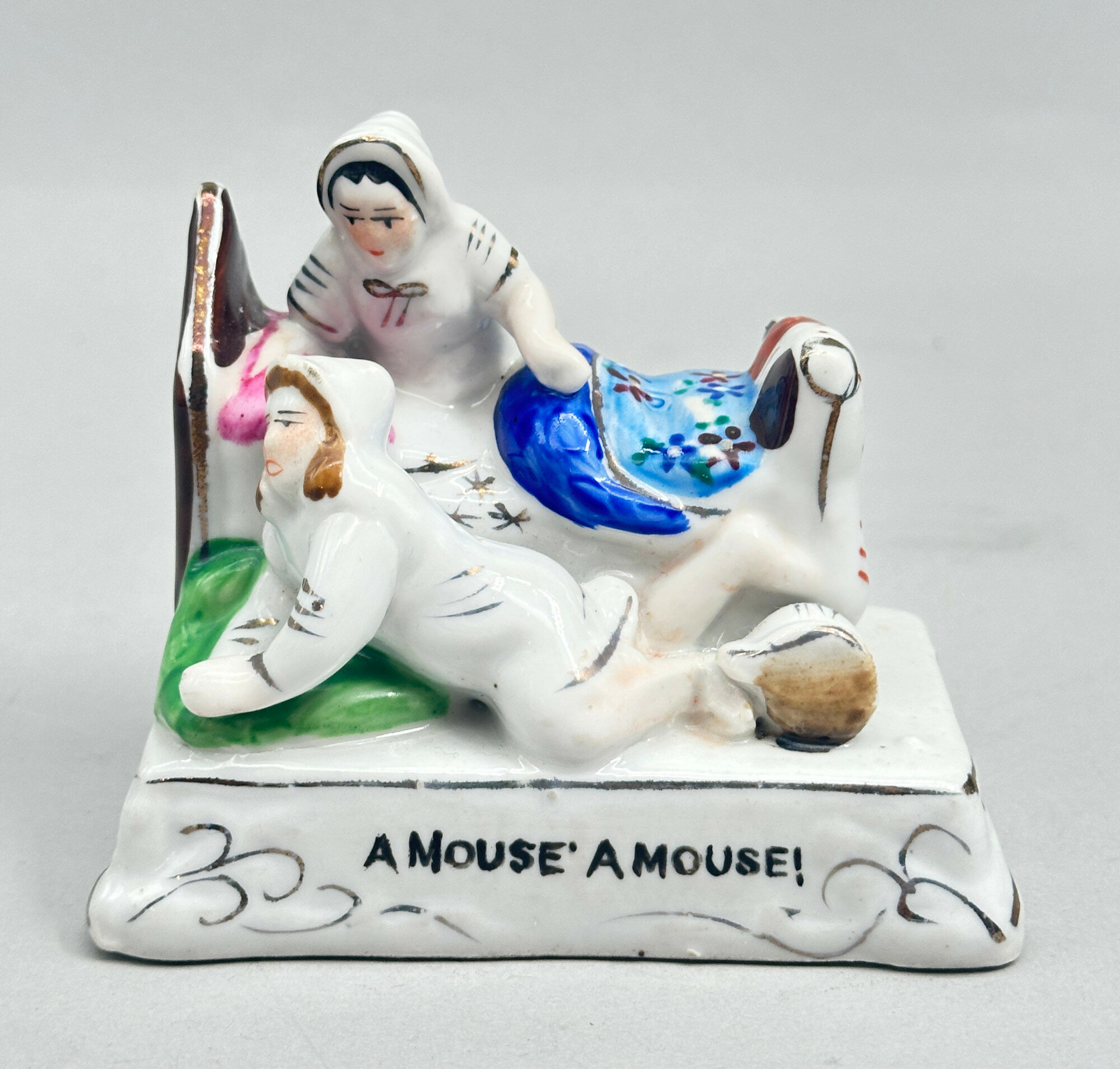
Fairing Figurine – A Mouse A Mouse, German, late C19th
Price: £25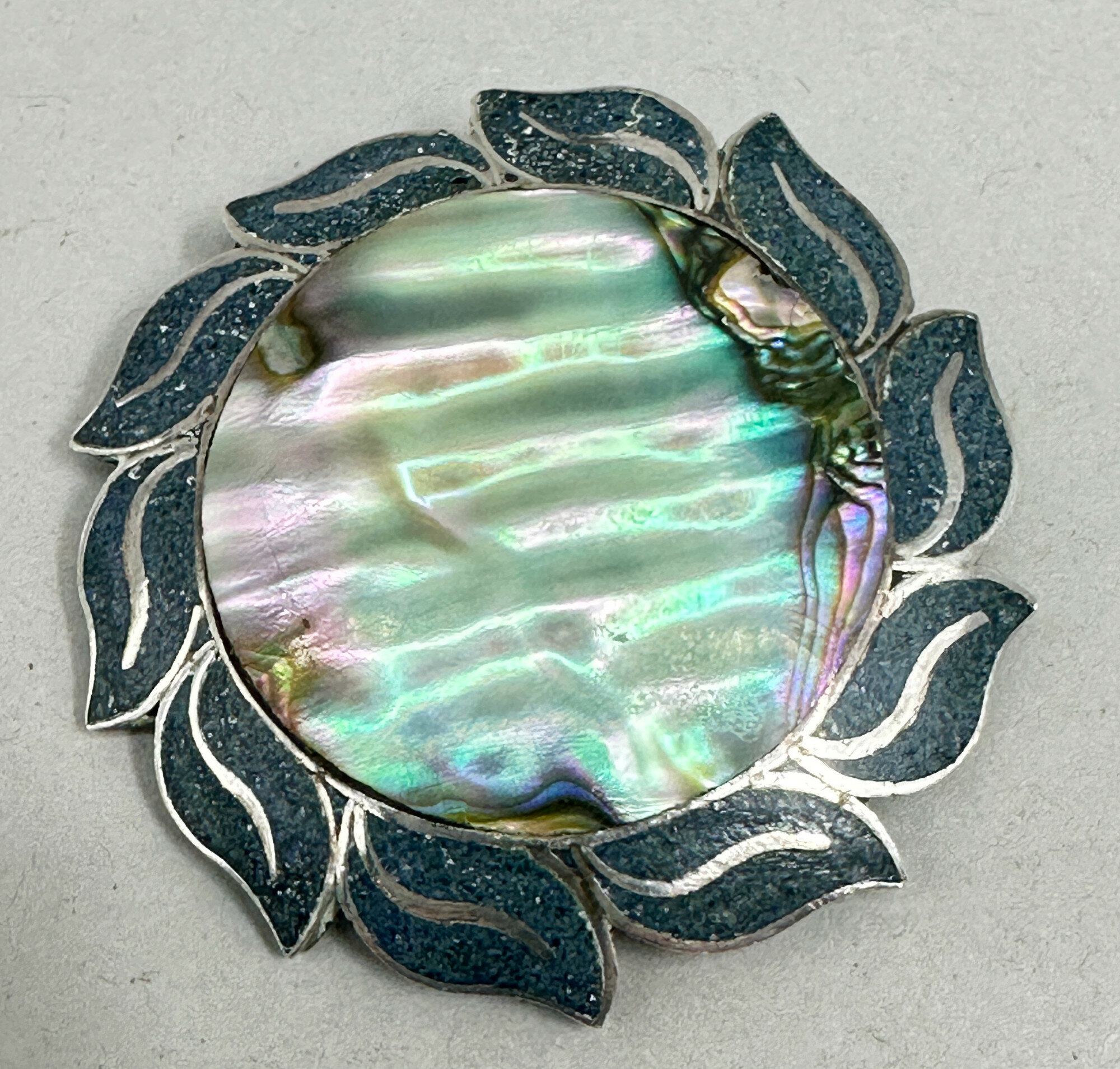
Taxco brooch with abalone shell c1950
Price: £20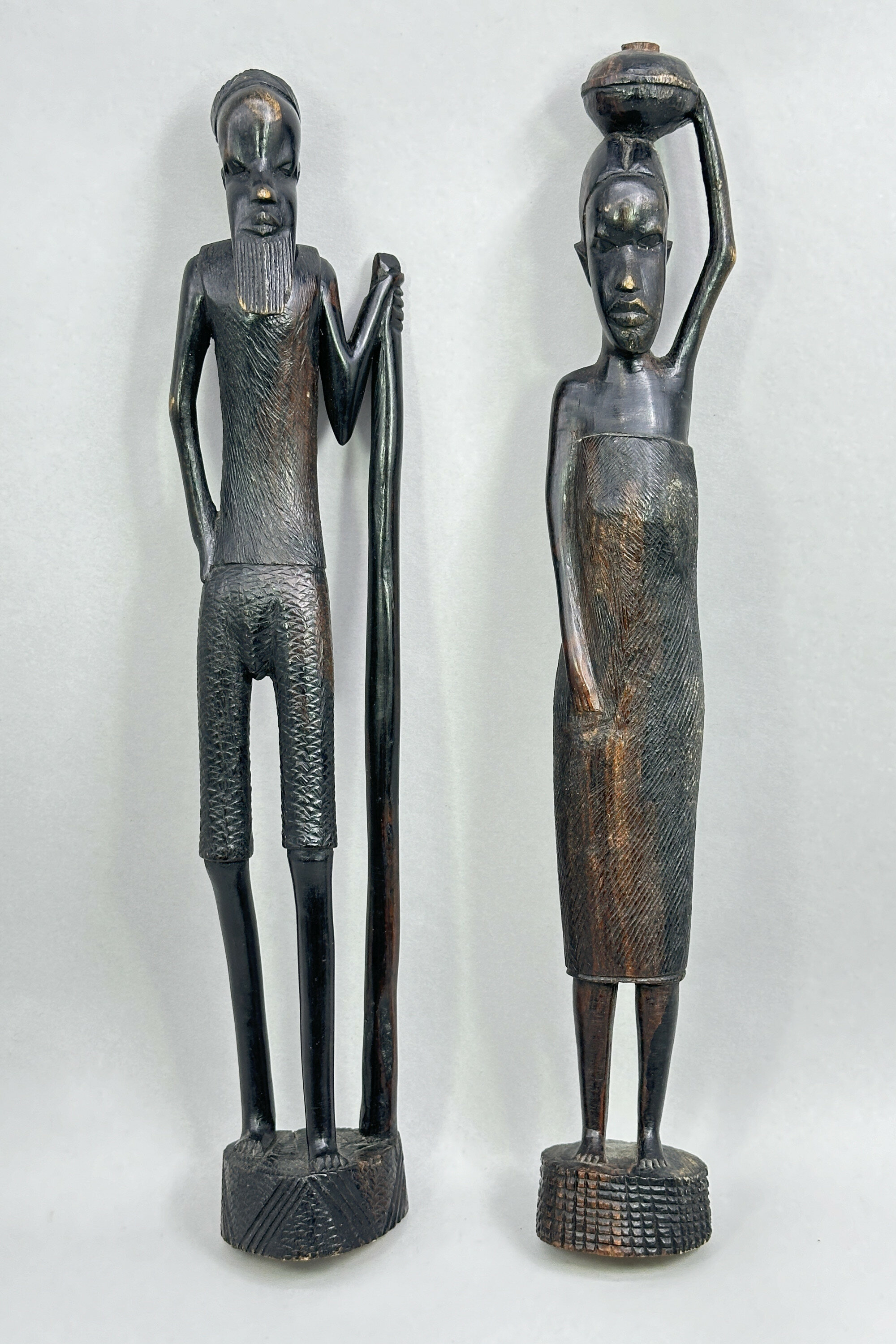
Pair of African Wood Figures of a Man and a Woman, probably mid C20th
Price: £25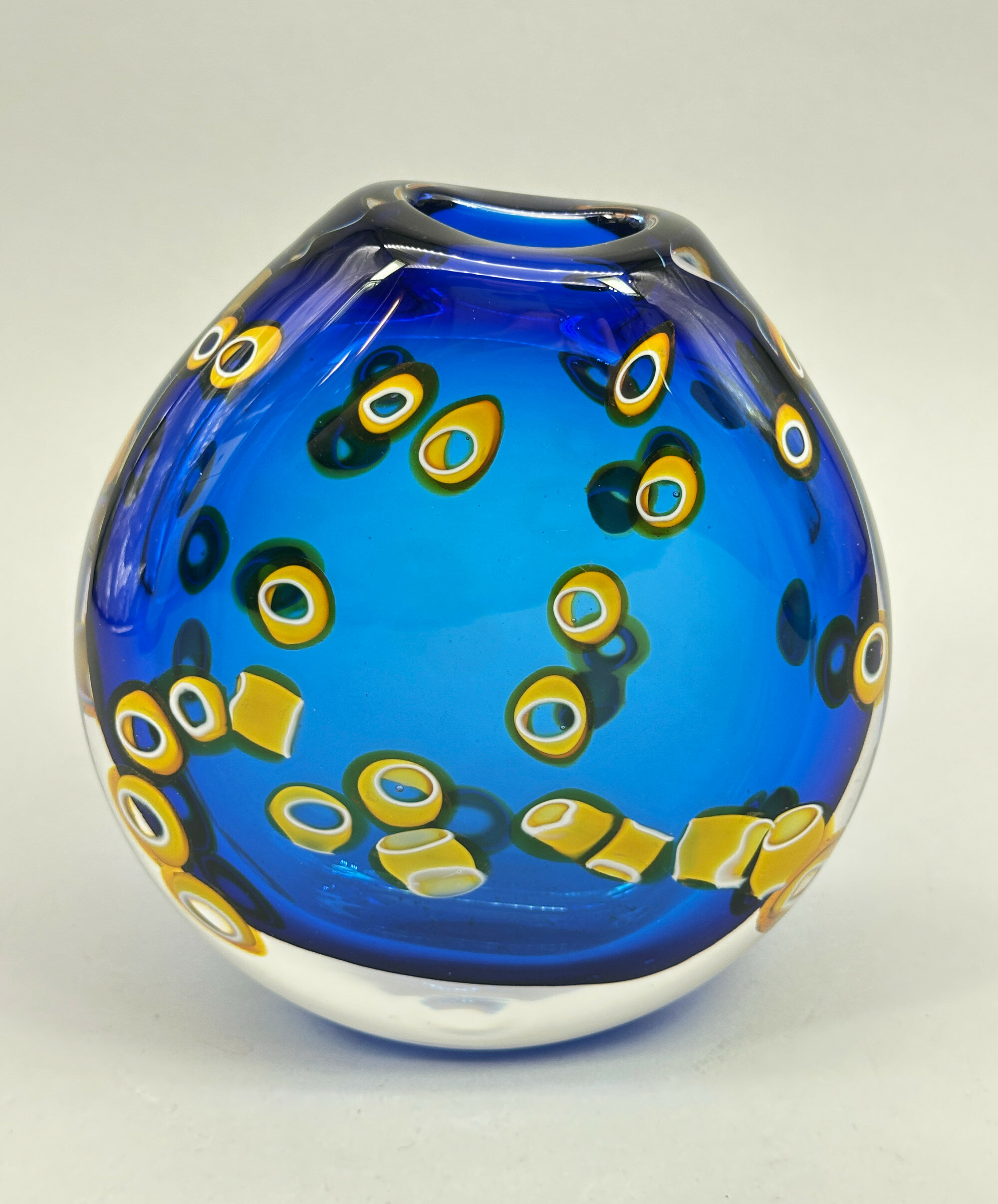
Hula Pattern glass Vase by Bob Crooks, signed by the artist, modern
Price: £110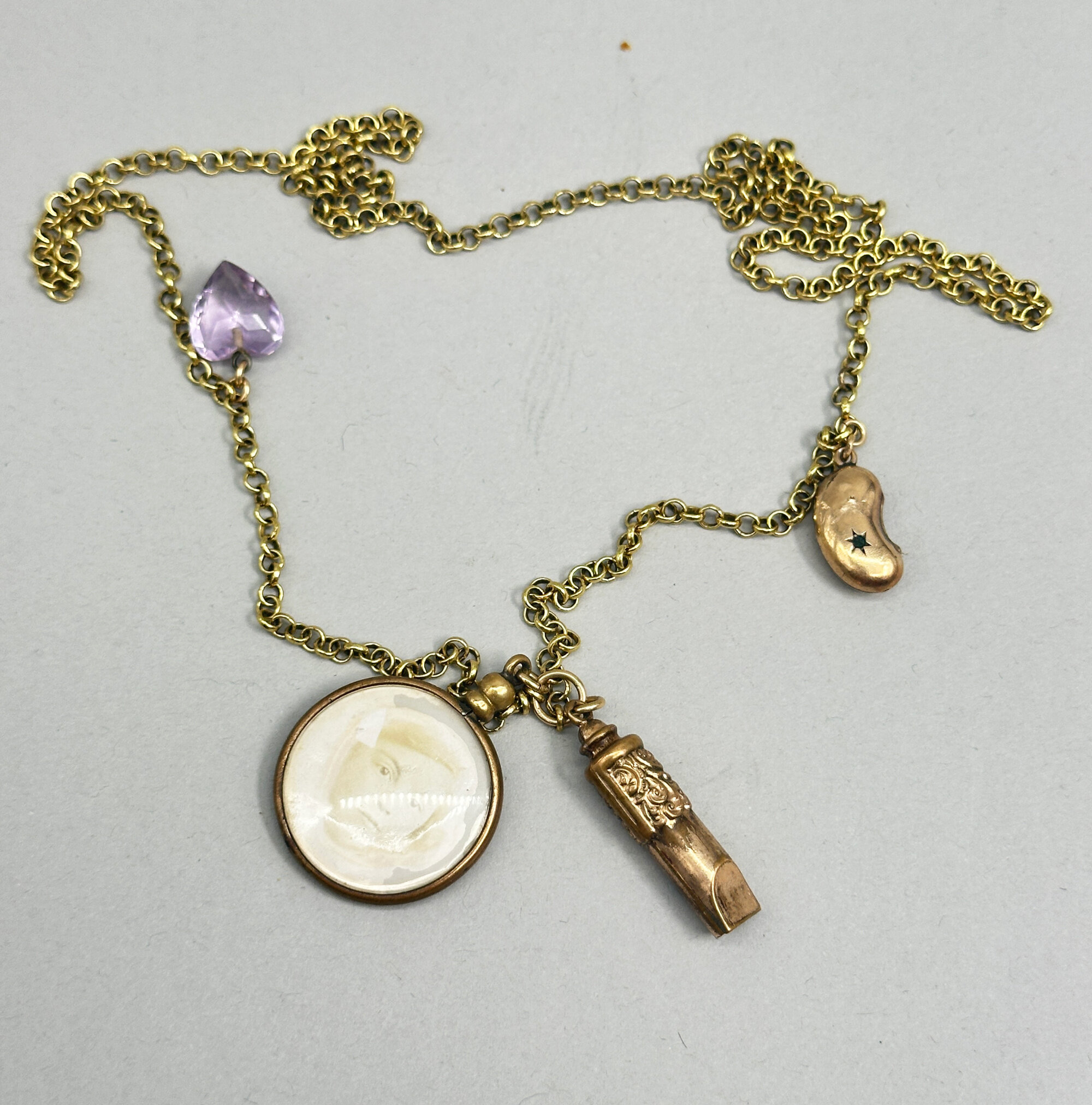
Victorian Rolled Gold Necklace with Pendants, late C19th
Price: £45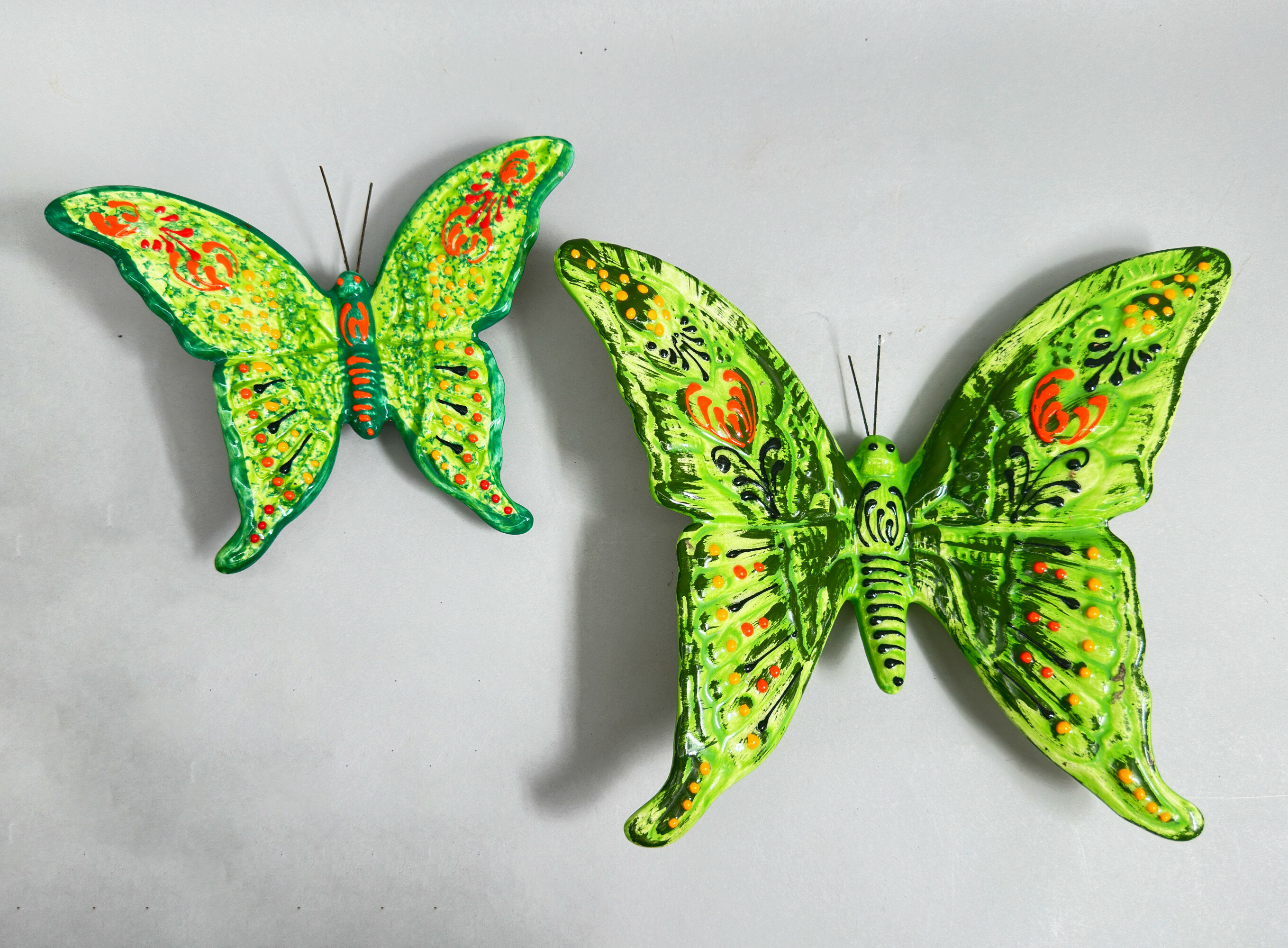
Pair of Ceramic Wall Hanging Plaques, Butterflies, probably continental 1960s
Price: £40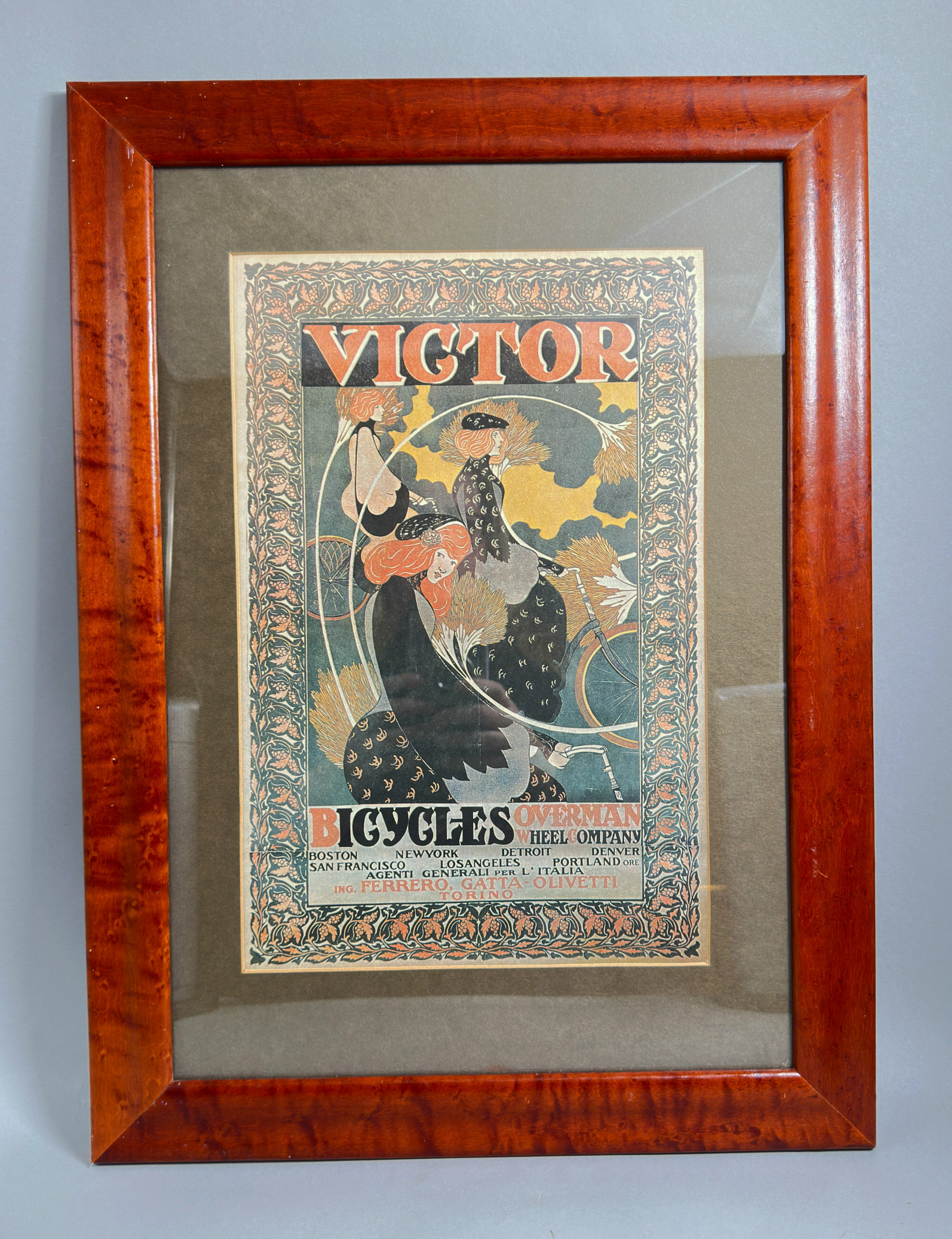
Framed poster for Victor Bicycles, Overman Wheel Company, C20th
Price: £55Will H. Bradley (1868-1962) was an American artist and illustrator whose work enjoyed enormous popularity in the late nineteenth and early twentieth centuries, indeed he became America’s highest paid artist. Some of his most elaborate and original poster and advertisement designs were produced in the last years of the nineteenth century and he was an apt choice for Albert Overman’s then thriving business. His style was quintessentially Art Nouveau and is often compared to that of the English artist, Aubrey Beardsley, indeed he was sometimes dubbed as the ‘American Beardsley'. This poster design for Overman has been much copied and reproduced over the years with original examples residing in museum collections. The dating of this particular printing is not wholly certain; the reproduction is certainly way superior to that of more modern versions and the accompanying frame also indicates some age, perhaps to the 1960s or through to the 1980s. We have, then, both an elegant decorative item and an excellent addition to a collection important poster art.

Japanese Imari Bottle Vase, circa 1900
Price: £30
Pair of Capodimonte ceramic Wall Hanging Plaques, boy and girl praying, Italian 1960s
Price: £25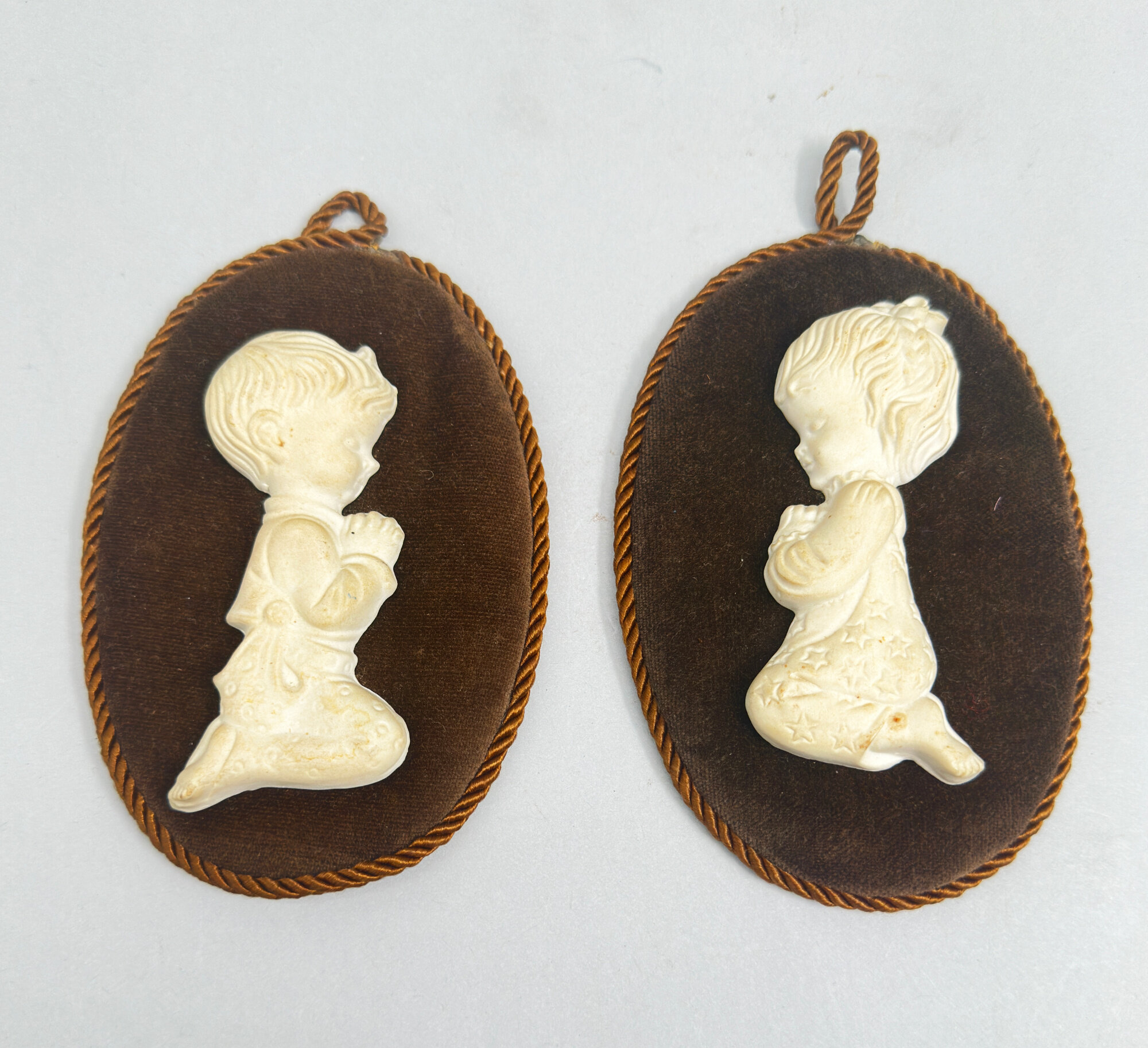
Pair of Capodimonte ceramic Wall Hanging Plaques, boy and girl praying, Italian 1960s
Price: £25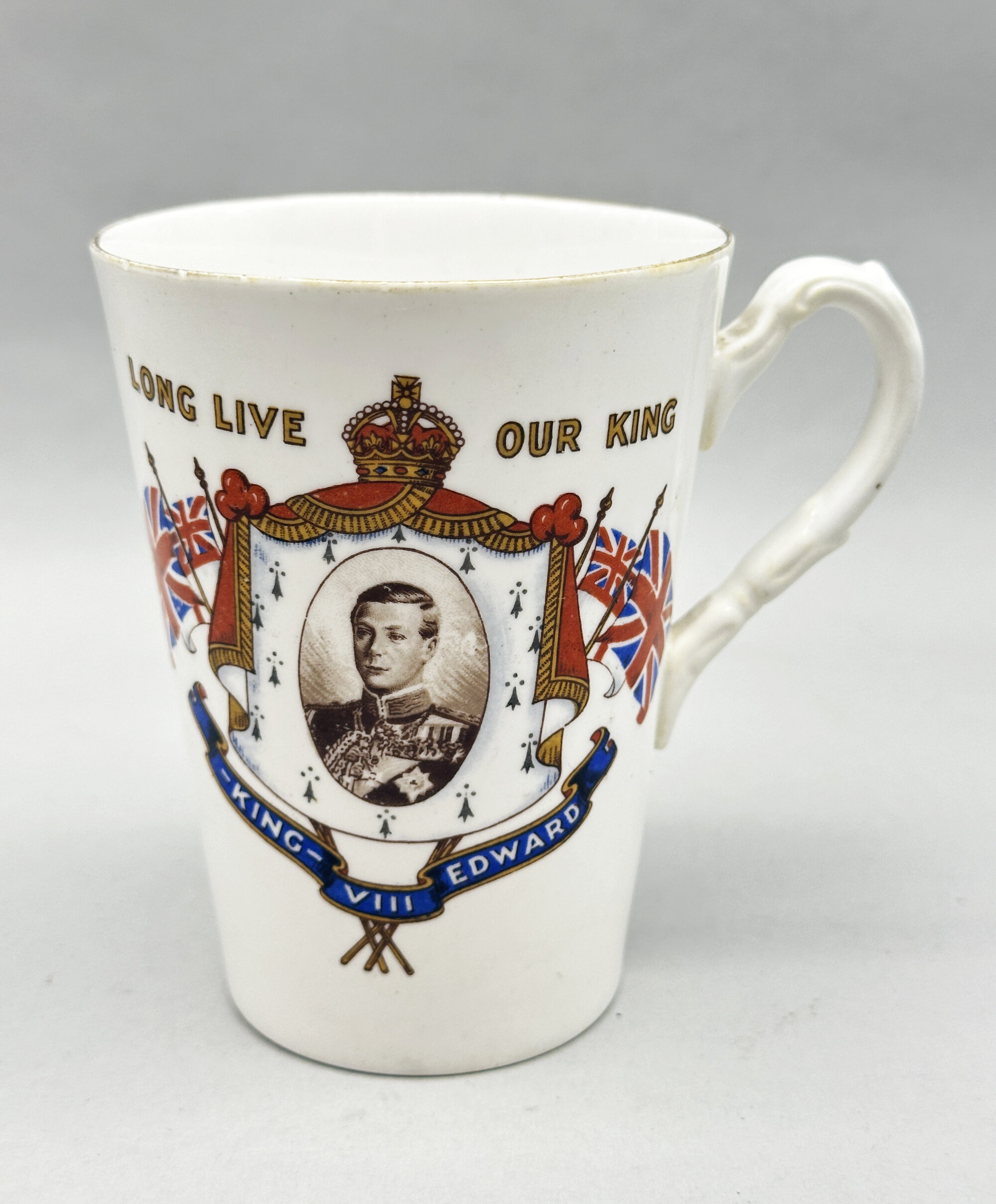
Mug Commemorating the Coronation of Edward VIII in 1937
Price: £25
Carlton Ware fruit Cruet Set, Australian Design, 1950s
Price: £35Carlton Ware was the trade mark used by the pottery manufacturer Wiltshaw and Robinson, whose premises were located in Stoke on Trent, four years after the firm’s establishment in 1890. The well known script mark was introduced in 1928. The firm mostly concentrated on decorative giftware and new methods of production introduced in the 1920s put it at the forefront of the earliest Art Deco pottery pieces produced, firstly with designs originating from Tutankhamun’s tomb and then with pieces with an Oriental chinoiserie influence. Tablewares were also produced and this cruet set is an example of the imaginative designs made after the second world war and most likely dates to the 1950s. The appeal is obvious and today this set, complete with the original stoppers for the salt and pepper, can fulfil both a practical and decorative function.
Some examples appear to have an original matching spoon for the mustard pot; if that is the case, then it is absent here, but the spoon often illustrated looks quite generic and may not necessarily have been an integral component.
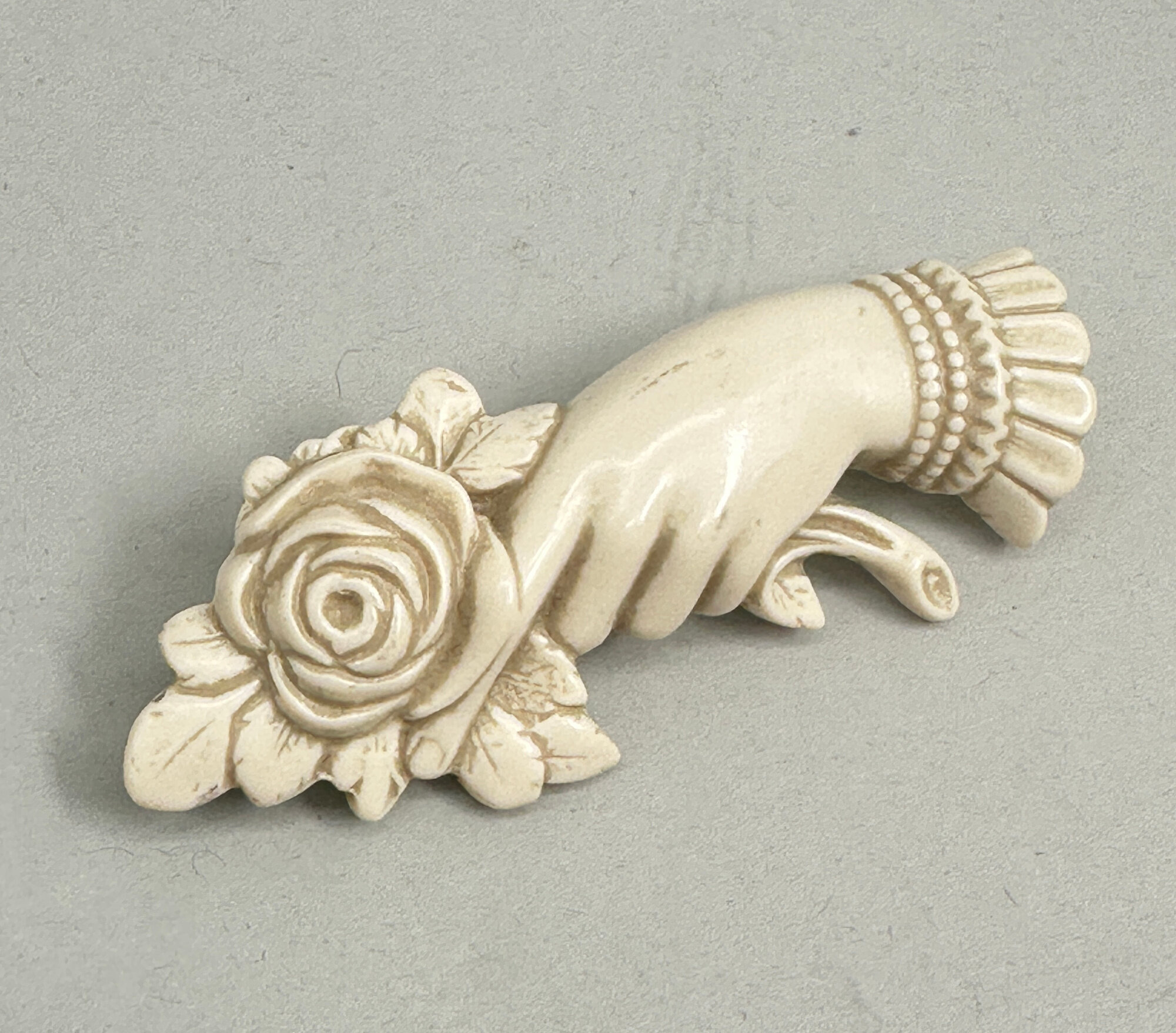
Bakelite Ivorine Mourning Brooch, British c1930
Price: £25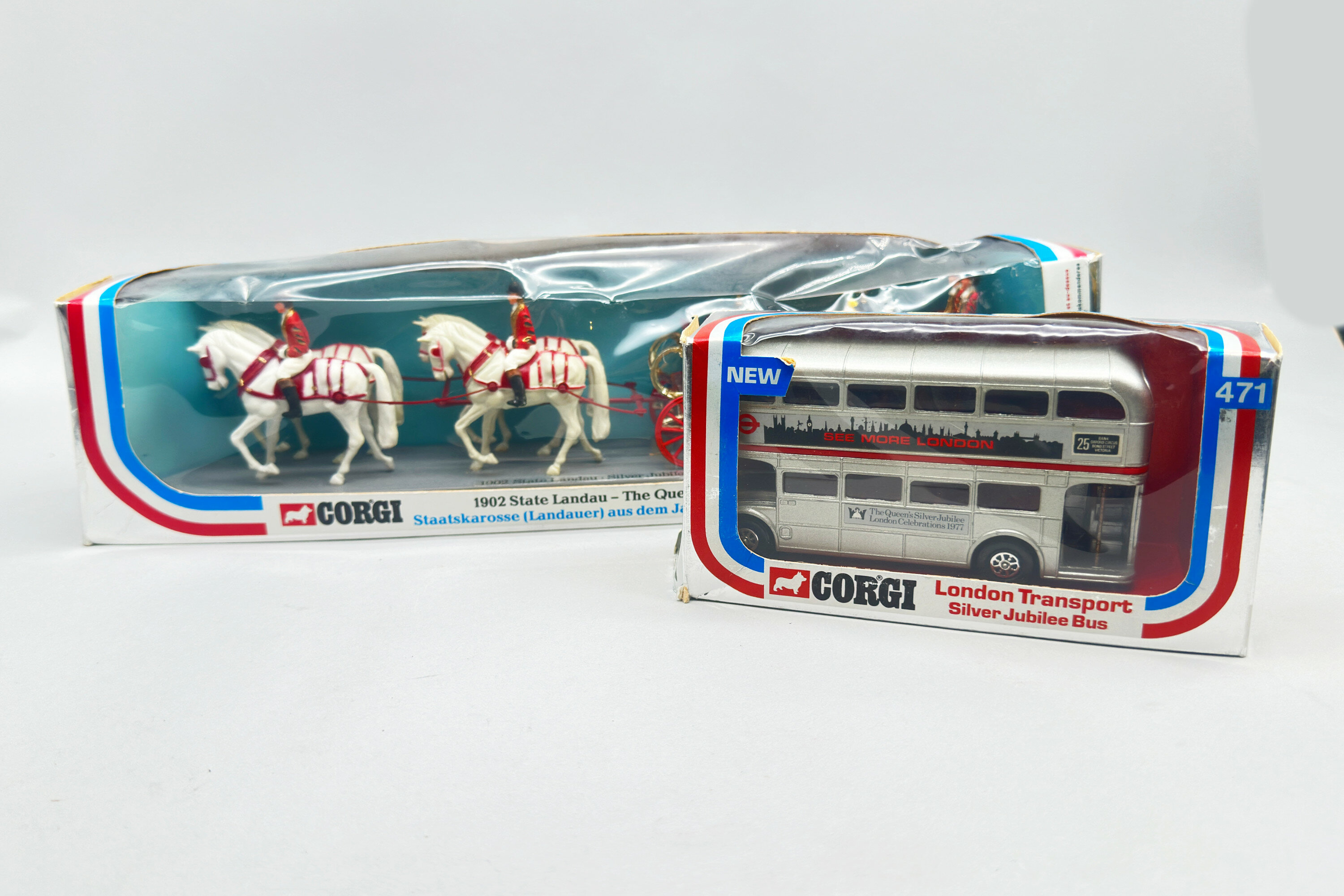
Two Corgi Silver Jubilee Toys Boxed, (41) State Landau, (417) London Bus, 1977
Price: £45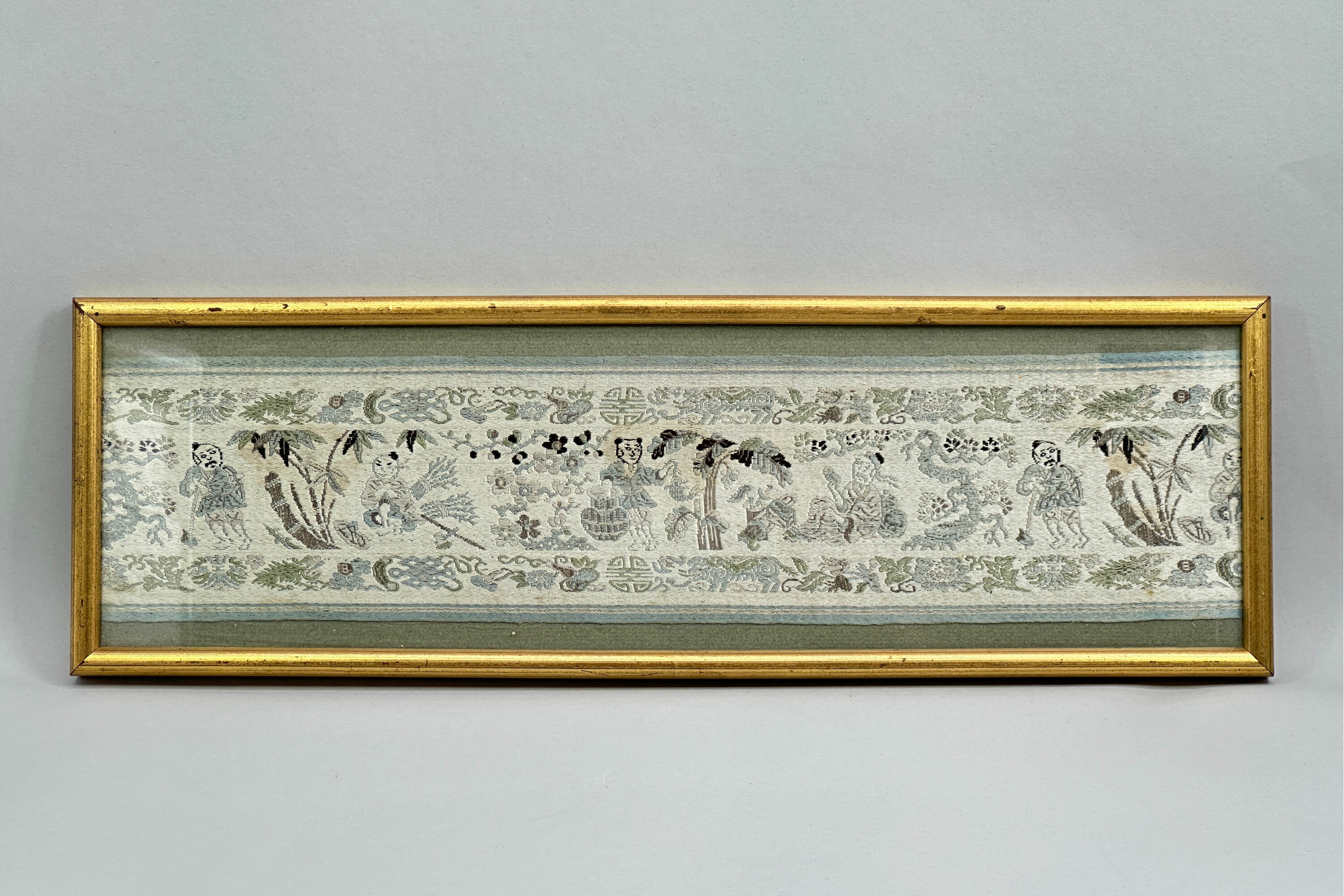
Framed Chinese Silk Embroidered Runner Panel, garden scenes, C20th
Price: £15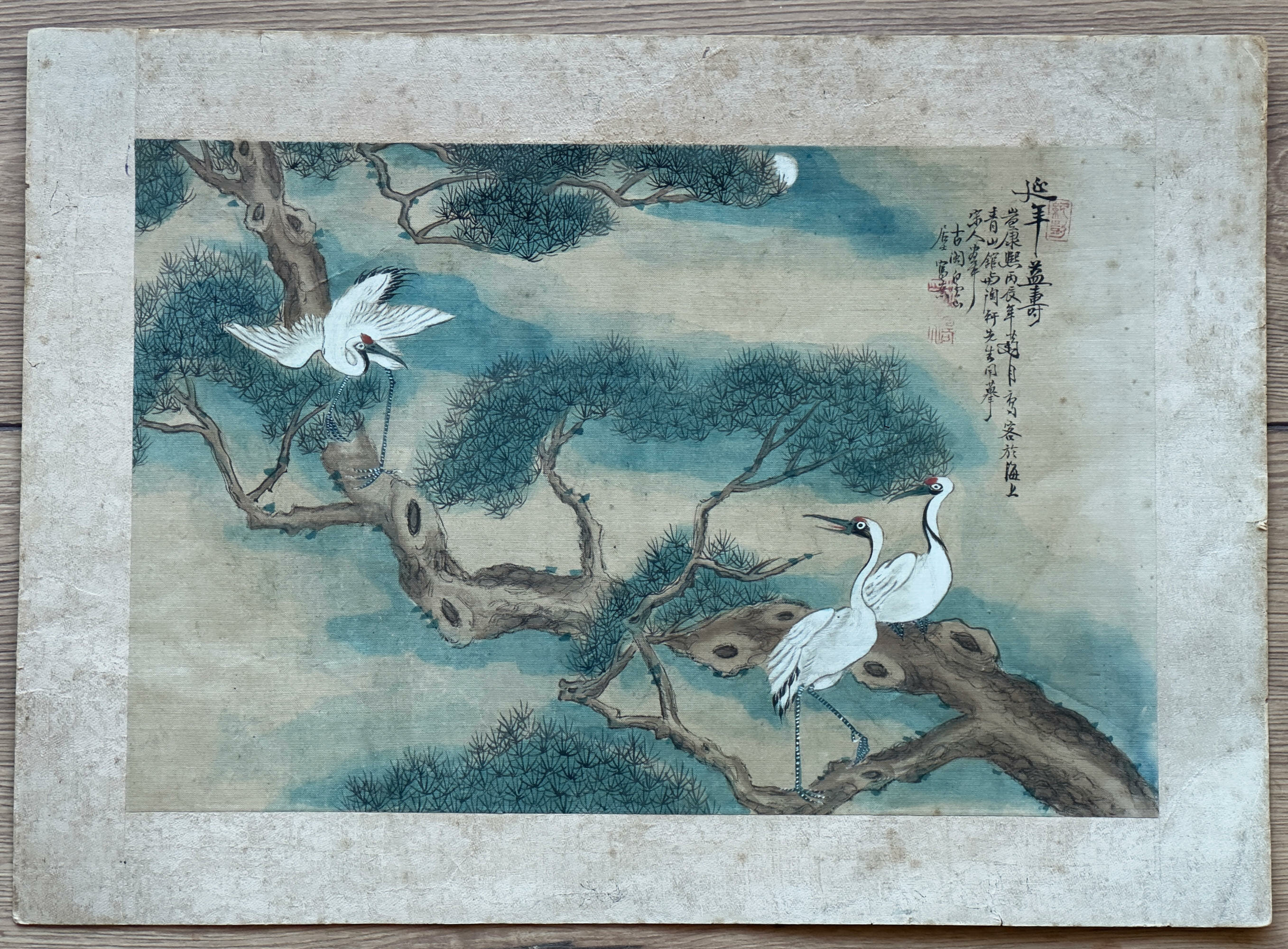
Chinese painting on Silk, Storks and Pine, circa 1900
Price: £25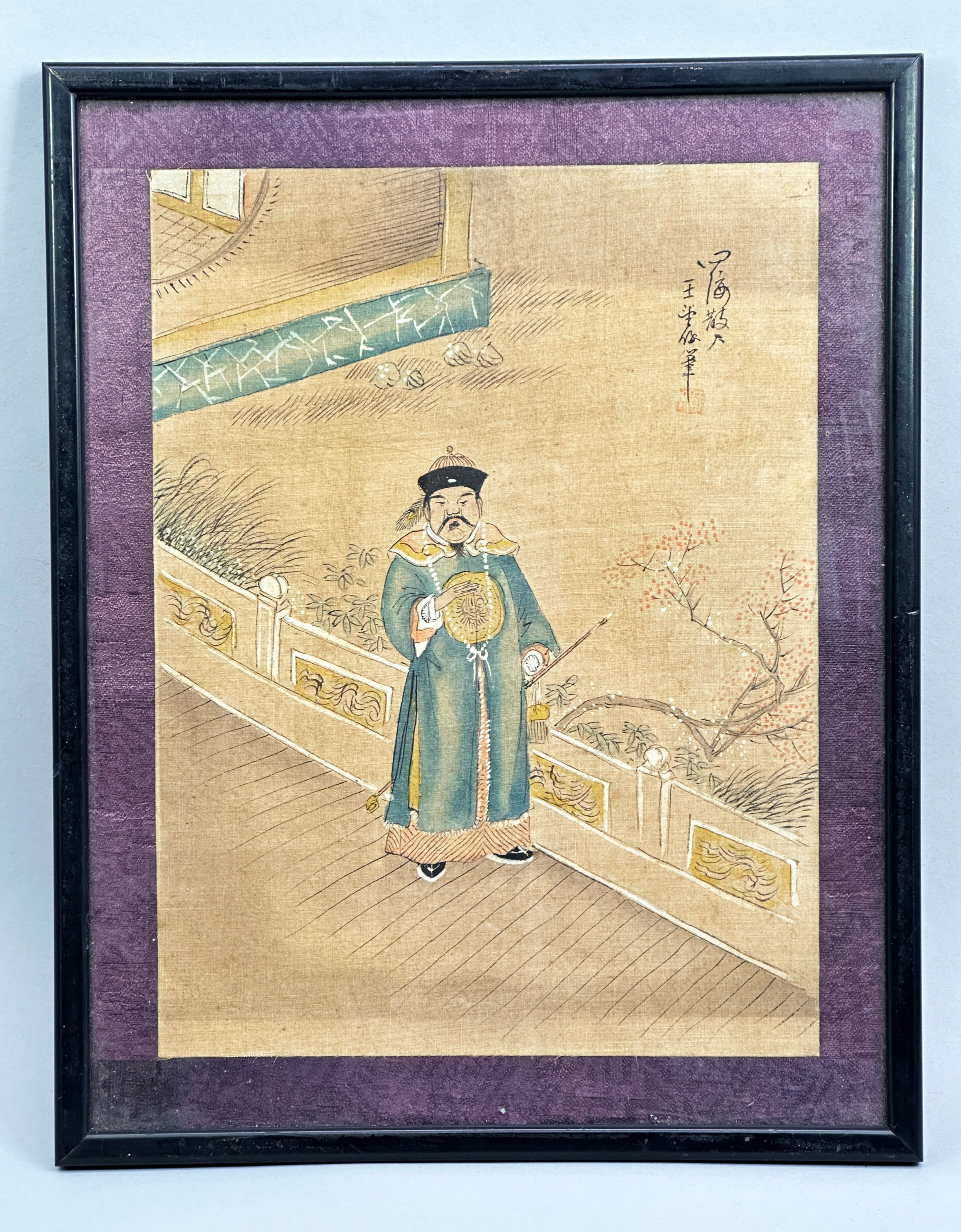
Framed Chinese Painting of a Court Official, C20th
Price: £45
Chinese Calligraphy Scroll, Qing Dynasty (1636-1912)
Price: £25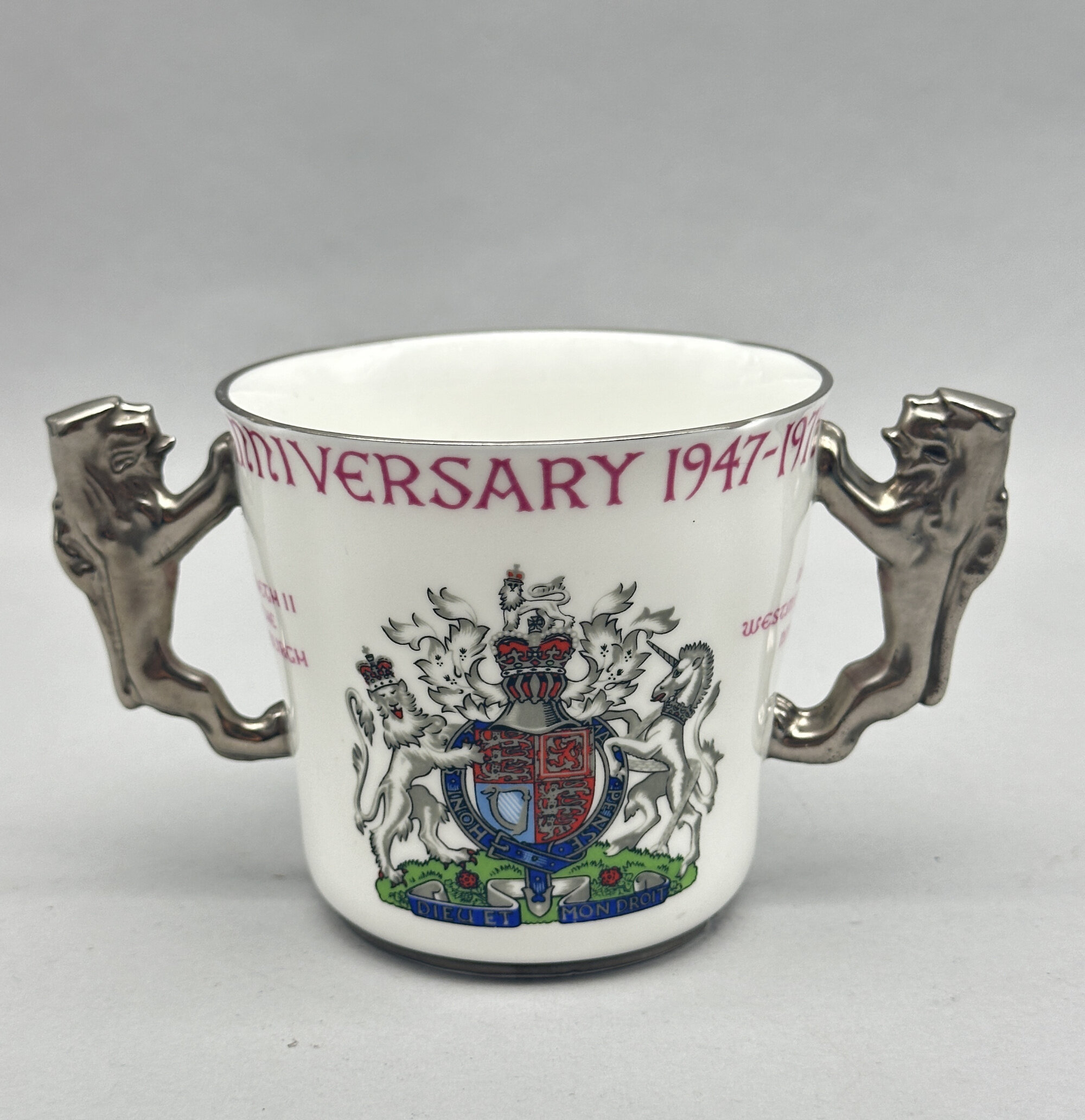
Cup : the Silver Wedding Anniversary of Queen Elizabeth II and Prince Philip in 1972
Price: £25The Paragon China Company, formerly the Star China Company (see Lot XX), produced high quality gift items from 1920 to 1971, at first independently and then in alliance with other companies, finally being absorbed by Royal Doulton in 1972 who kept the ‘Paragon’ name until 1991. Commemorative wares were a speciality and this cup is a fine and typical example.
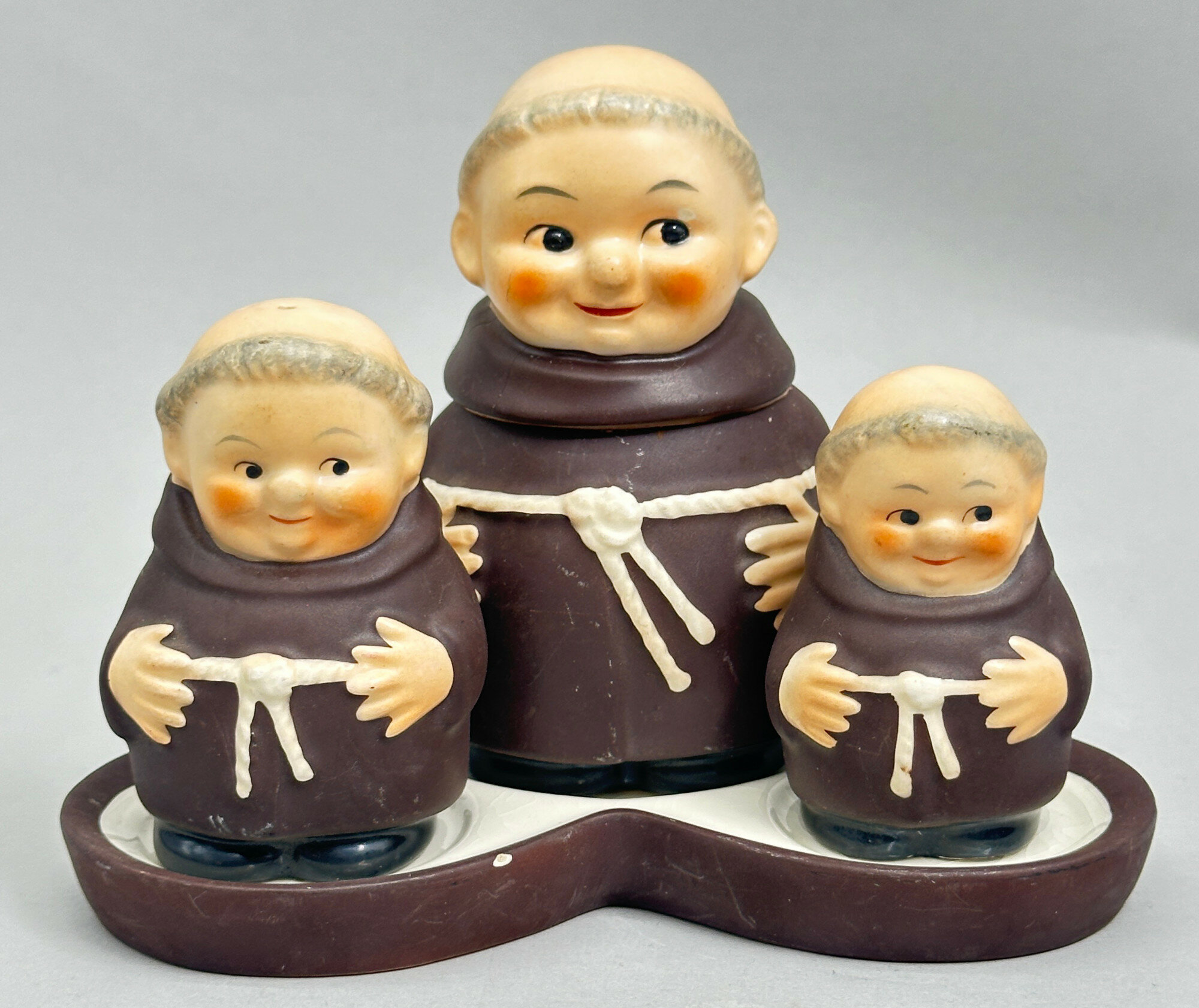
Cruet set in the form of three Friar Tuck Monks on a Tray, Hummel, West Germany, 1960s
Price: £55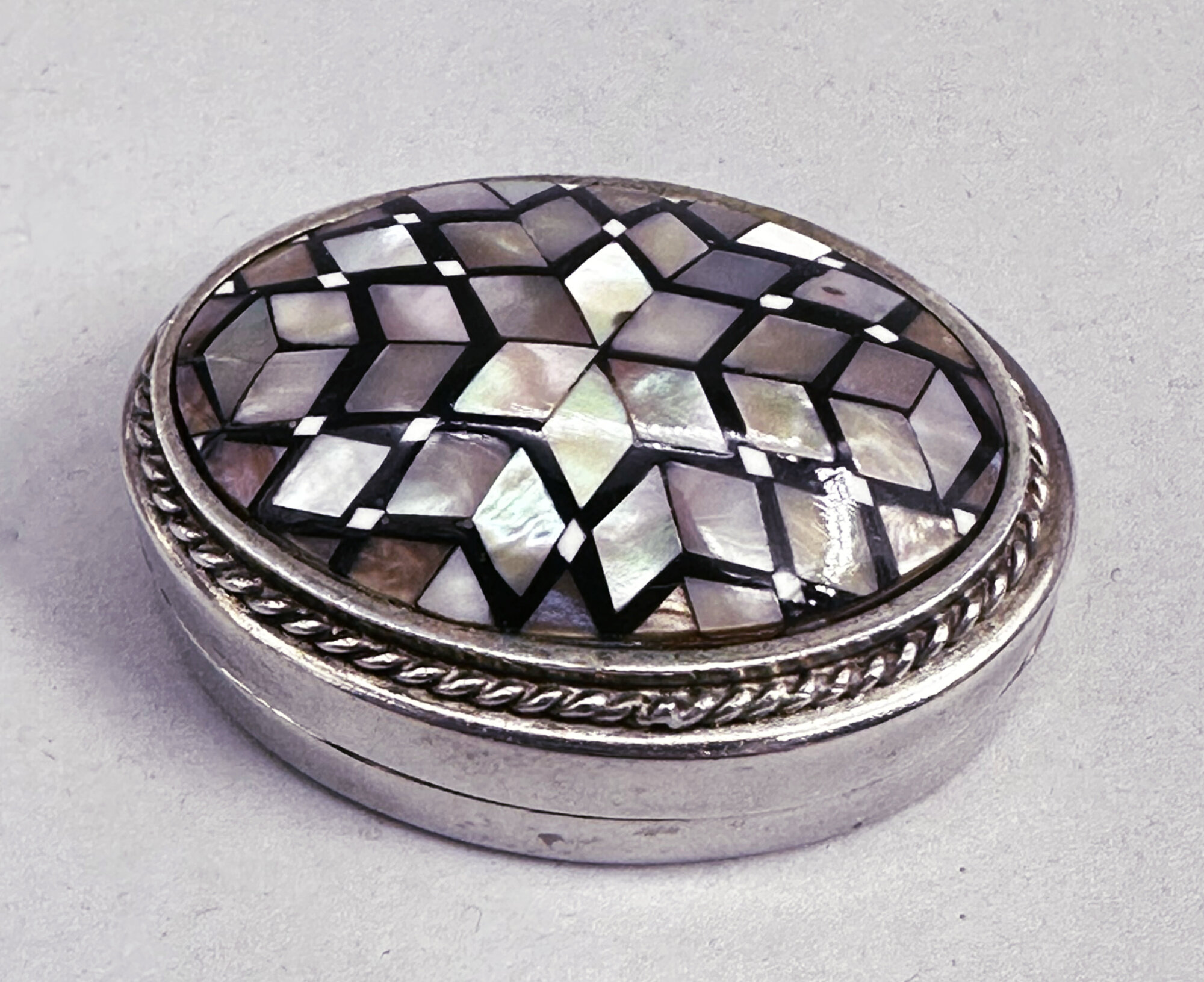
Egyptian Silver Pill Box with Mother of Pearl Inlay, marked, second half C20th
Price: £45
Continental Figure of a Cellist, Conta and Bohme, Germany late C19th
Price: £55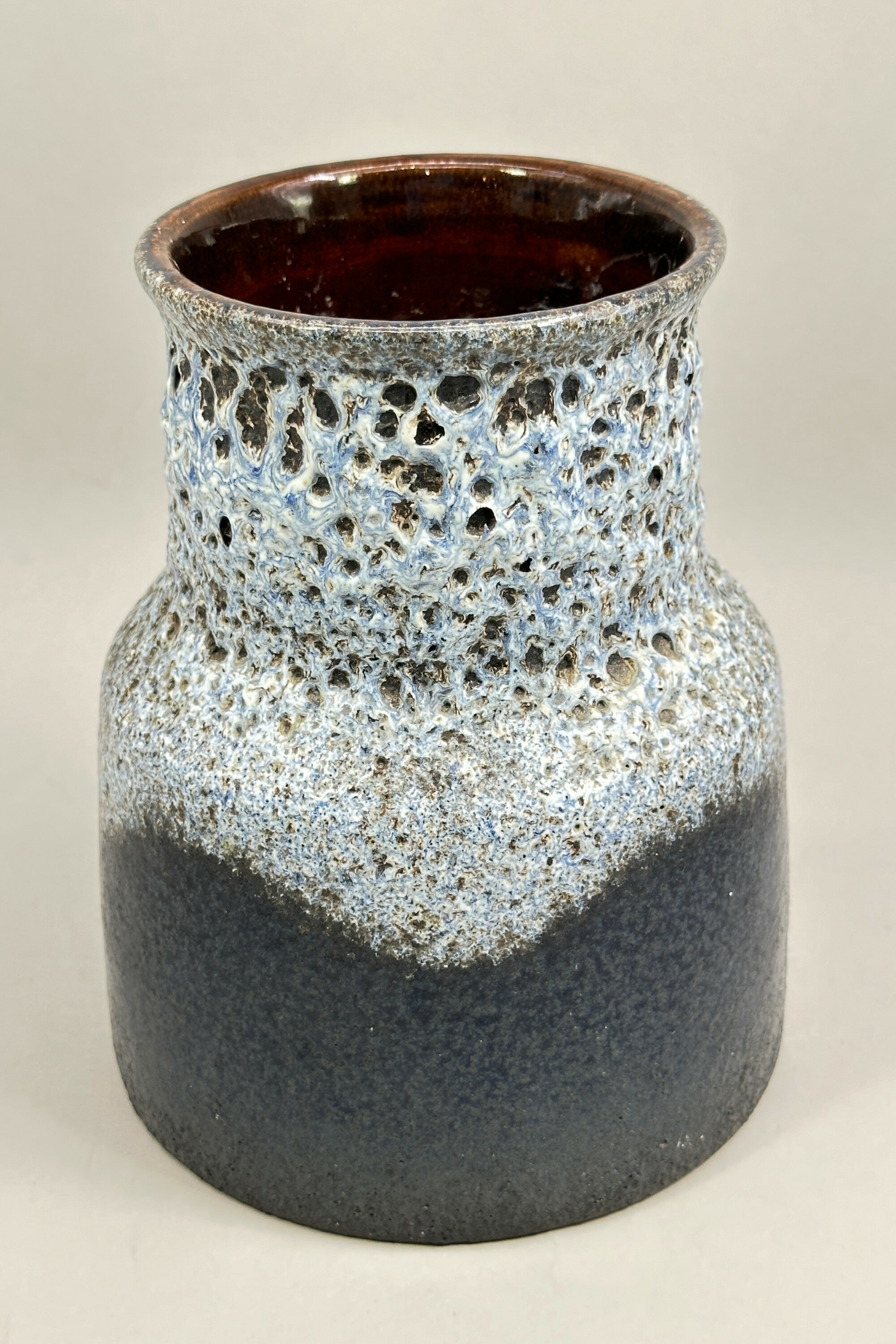
West German Pottery Lava Glaze Vase, Scheurich, 1960s
Price: £45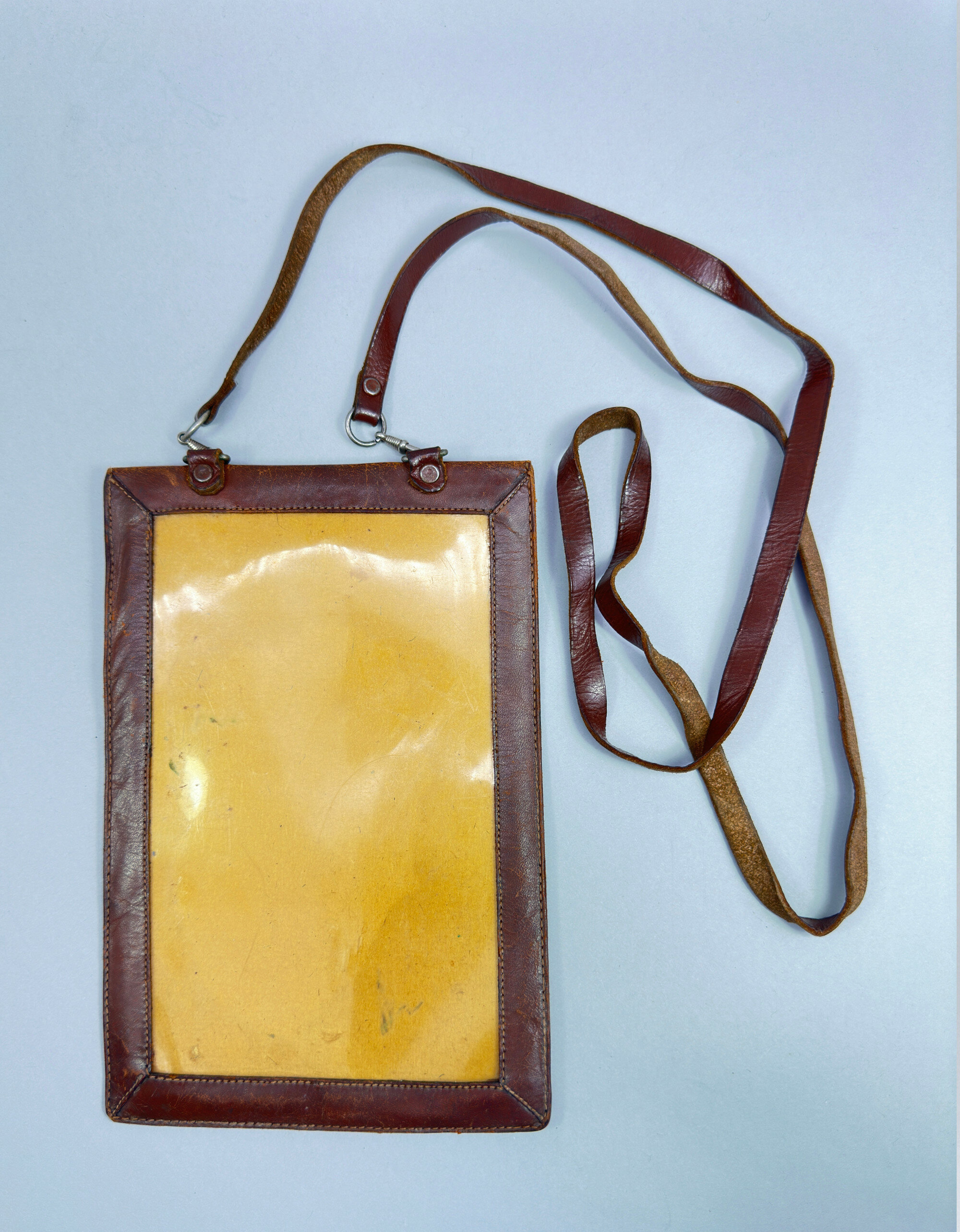
Vintage Leather Map Case, probably 1940s
Price: £45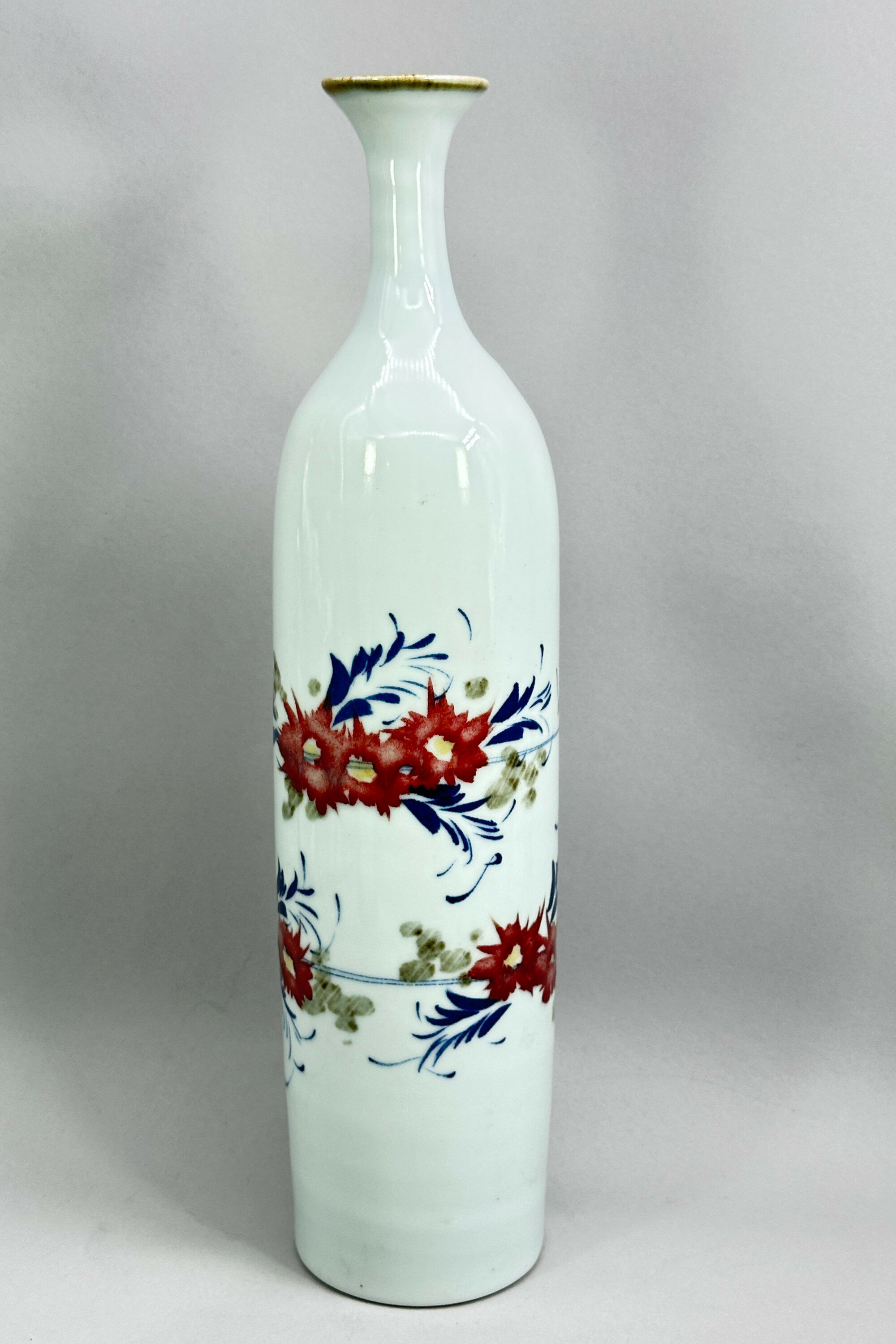
Japanese Studio Pottery Vase, signed, C20th
Price: £75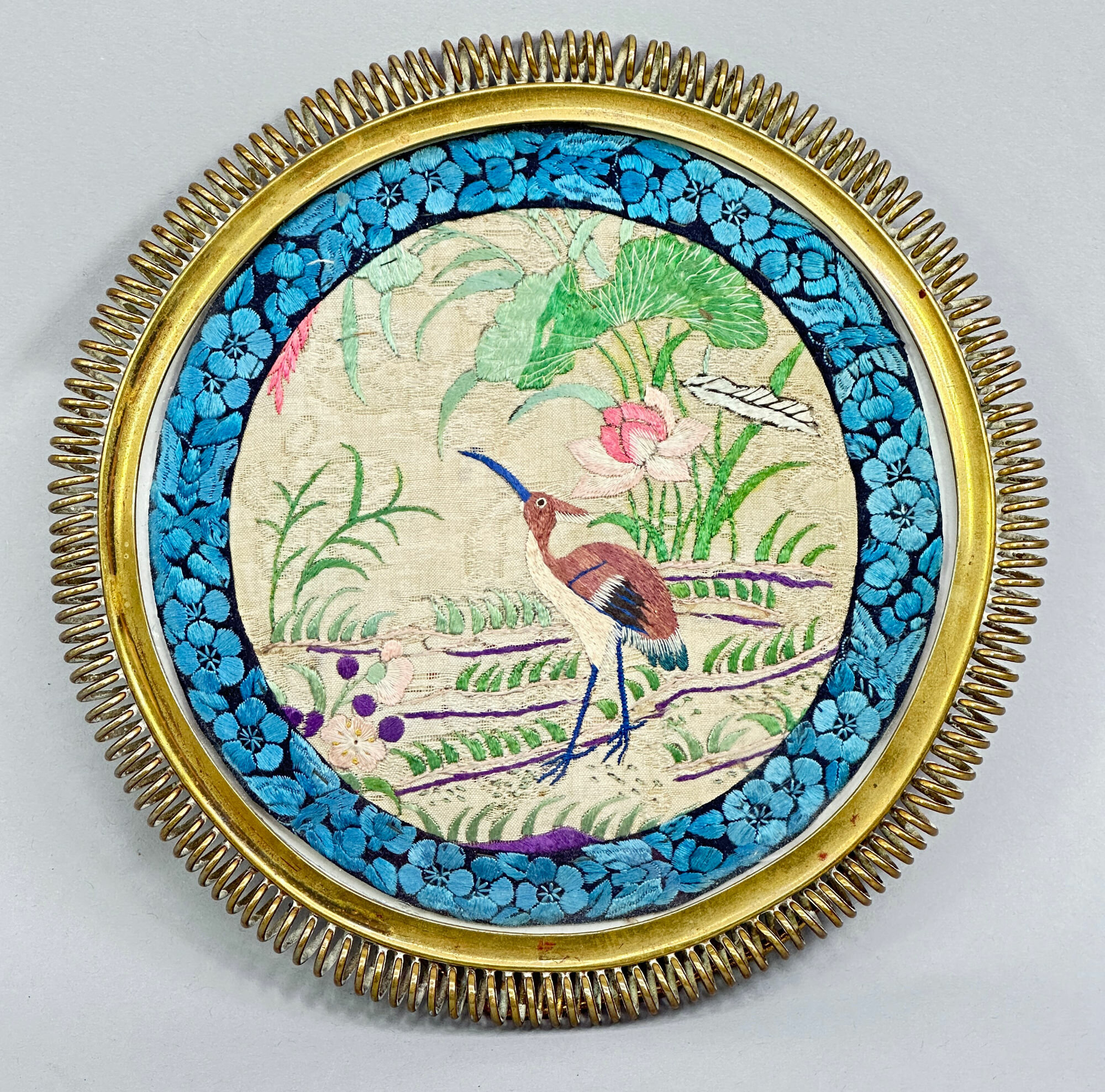
Chinese circular silk textile Panel in later European brass metal Frame, C19th/C20th
Price: £55
Queen Elizabeth II Silver Jubilee China Mug, 1977
Price: £10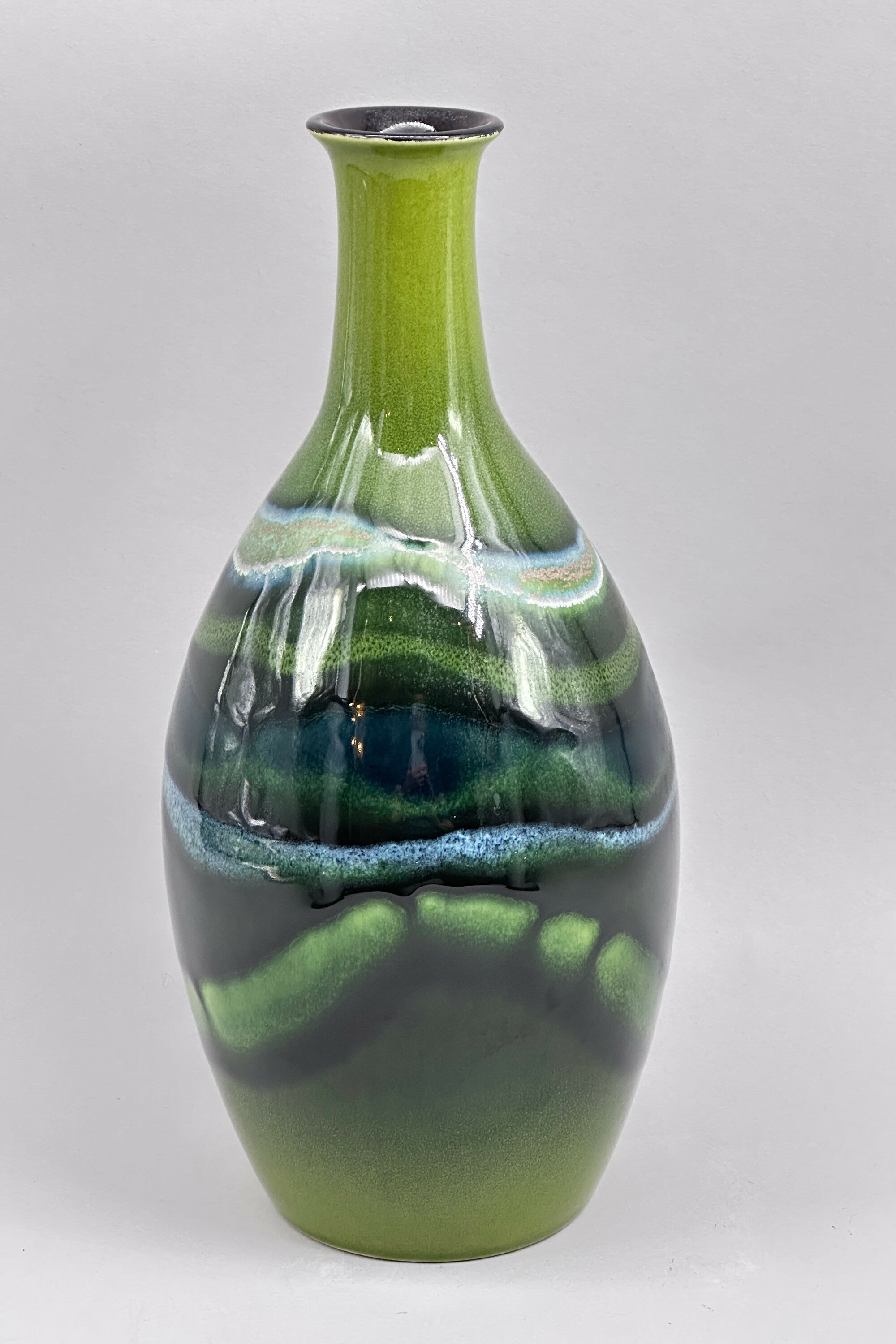
Poole Pottery Maya Pattern Bottle Vase, early C21st
Price: £85This fine quality vase is from the Maya range made by Poole Pottery, some of the pieces still being in production today and described in the maker’s catalogue as follows “Poole Pottery’s Maya collection is inspired by British landscapes and earthy tones. The greens and blues in this stunning range represent the earth meeting the sky in a natural yet bold design. Here at Poole Pottery, all our Maya ceramics are hand-cast and made using our signature reactive glaze in the famous Middleport Pottery in Staffordshire. The distinctive pieces you see here are created via our Living Glaze technique, where layers of colourful glazes react with one another to create a unique, glossy and dynamic finish.” But this particular form does not appear in the current catalogue and does not seem to be otherwise available. The form of the mark appears on other Poole pieces of more recent manufacture and dating is probably to around twenty years ago. The initials are for the artist’s signature and Poole write “Items are personalised with the artist's own individual mark, adding value to the collectability of each piece.” Given its scarcity, this vase would make an interesting addition to a collection of Poole Pottery aside from being a highly decorative item in its own right.
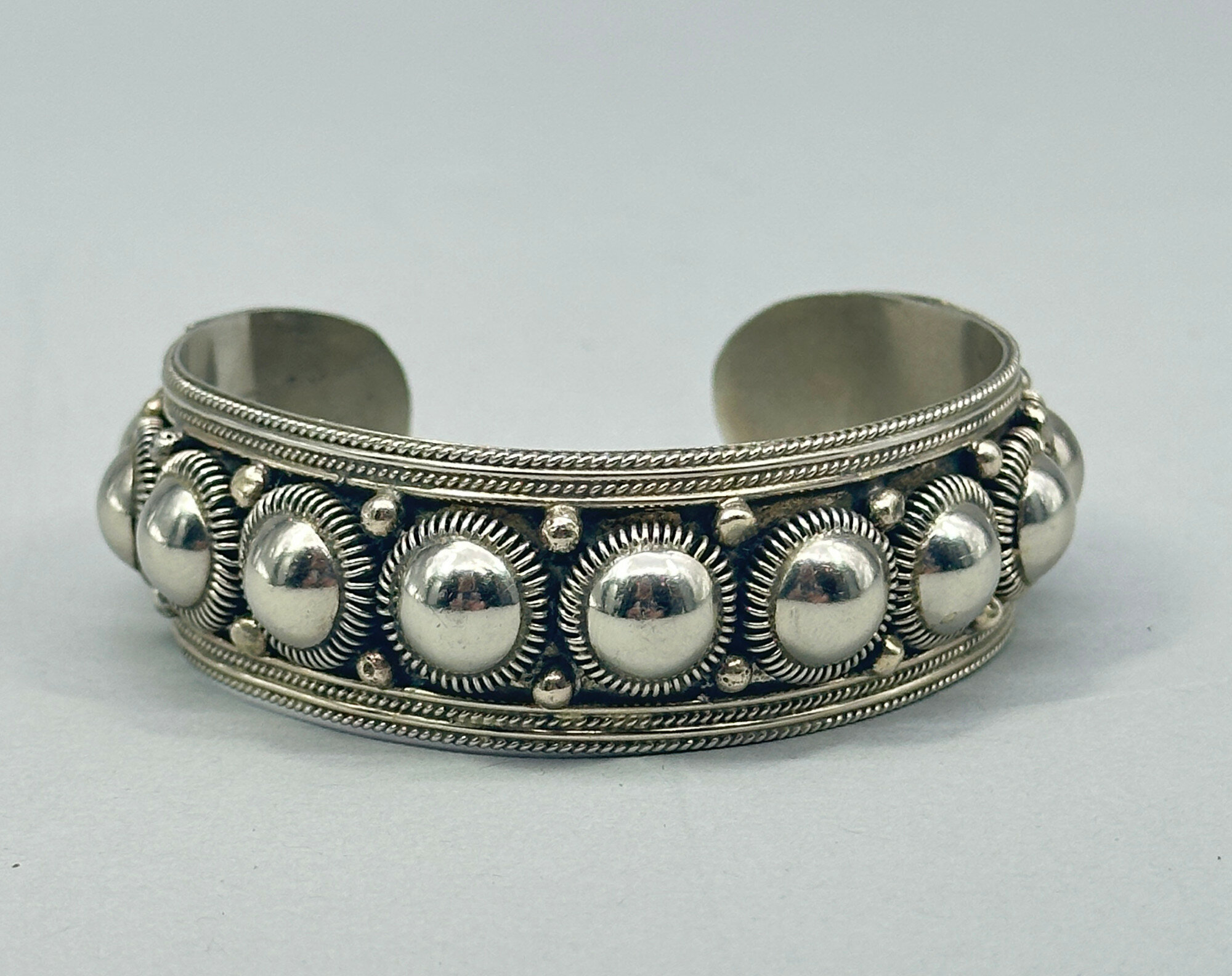
Siam silver cuff bracelet c1950
Price: £85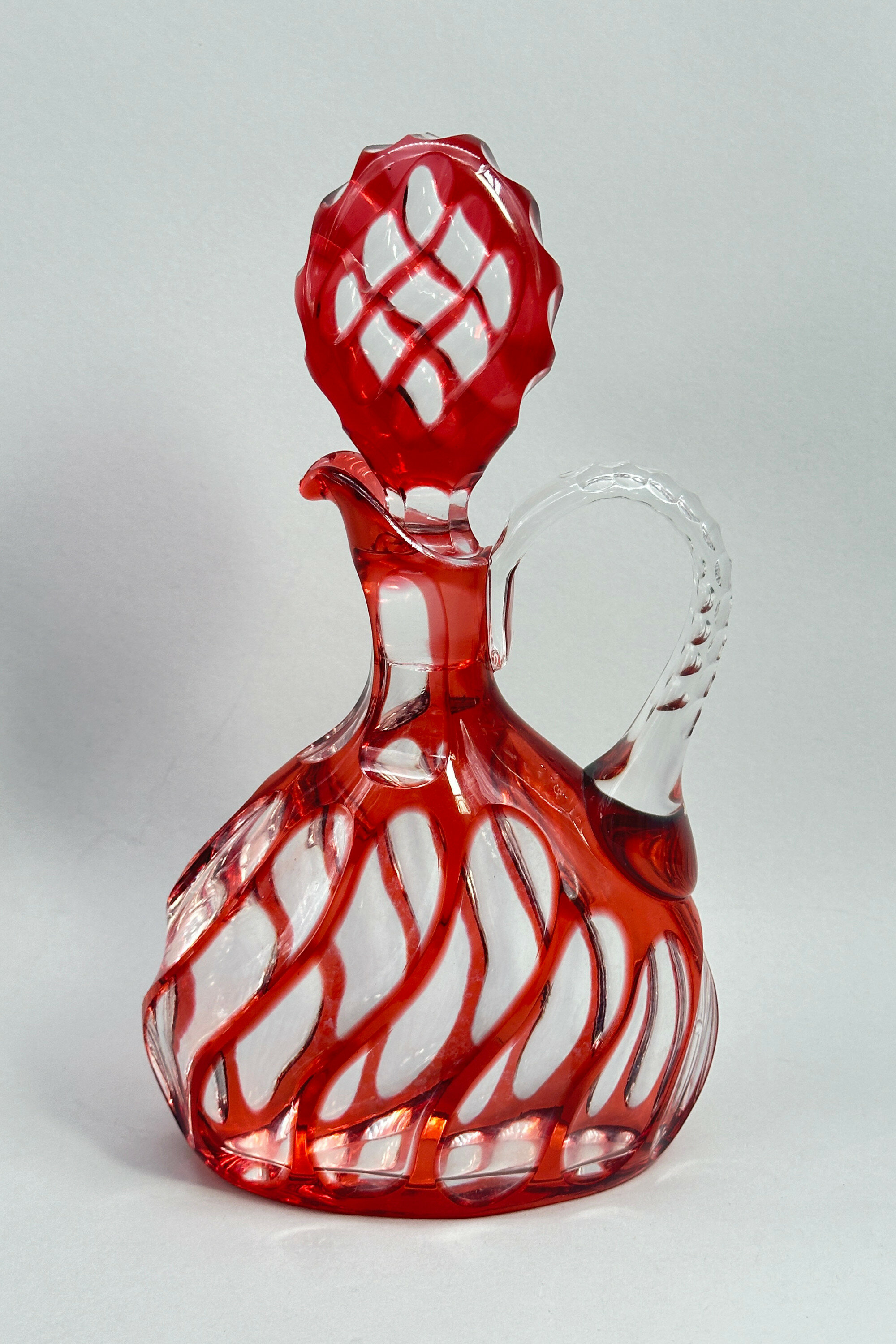
Swirl design Cranberry glass Decanter and Stopper, probably Italian mid C20th
Price: £45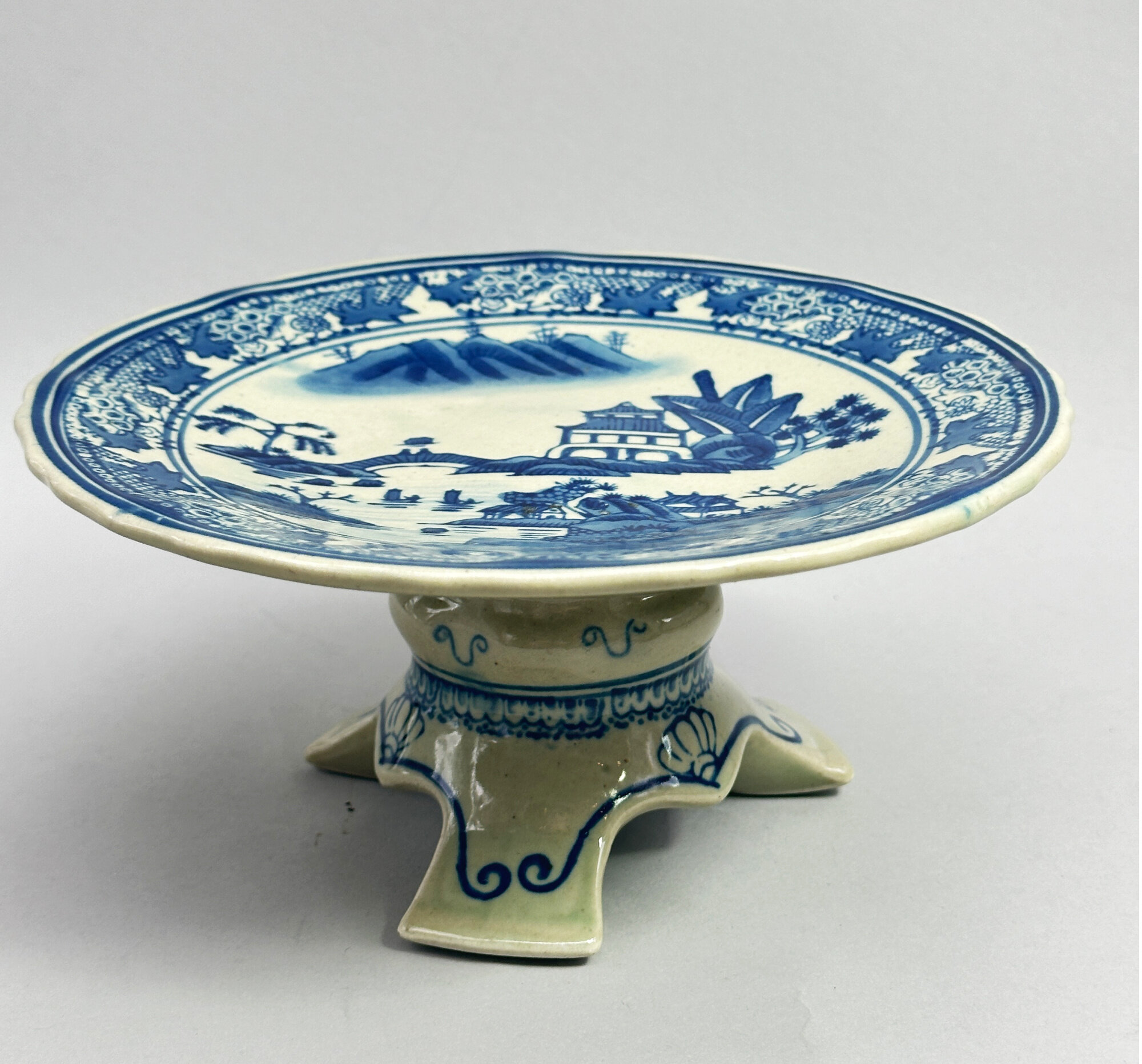
Japanese Celadon Ground Tazza with Chinese Nanking decoration, late C19th
Price: £25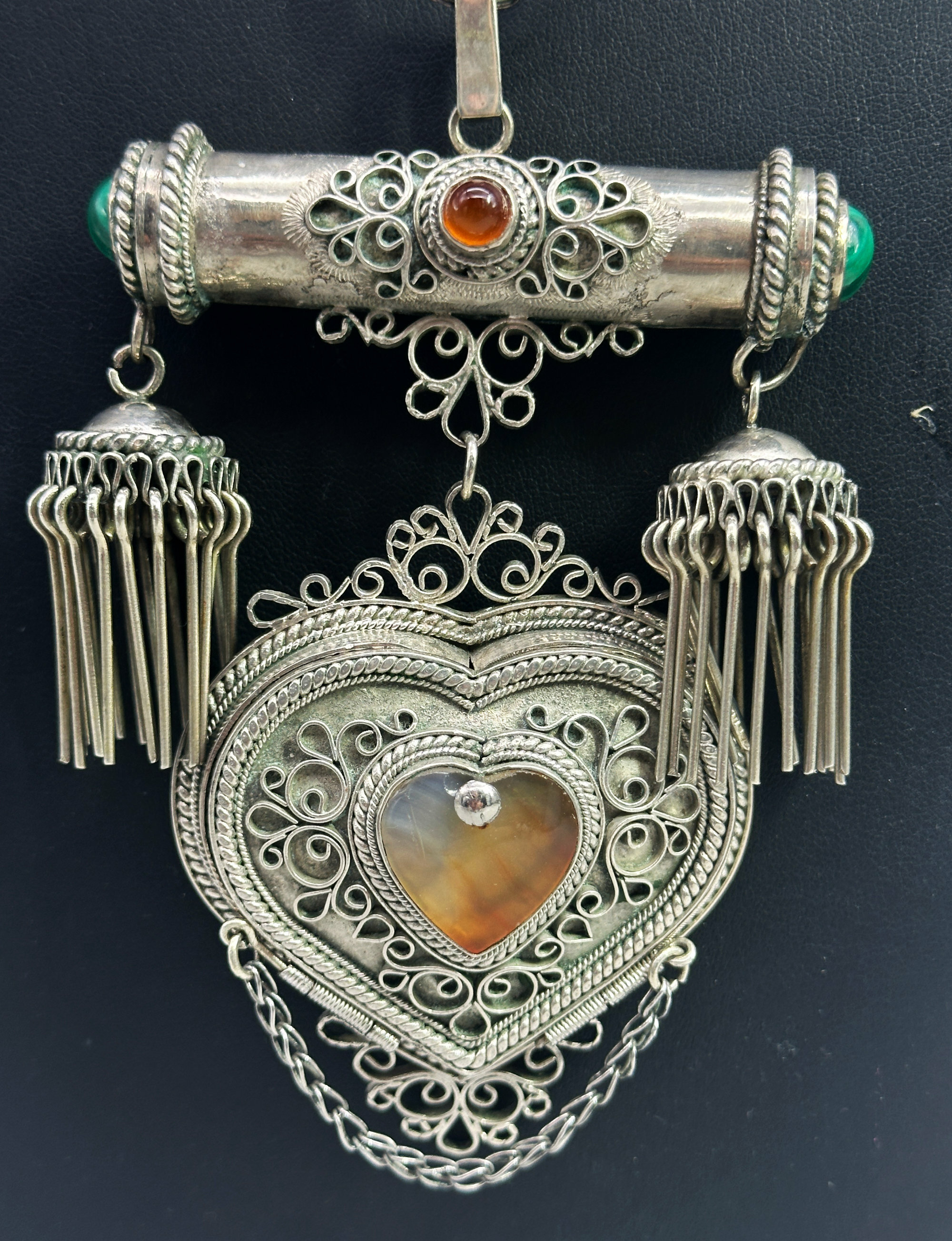
Large Islamic silver necklace with heart shaped box c1920
Price: £85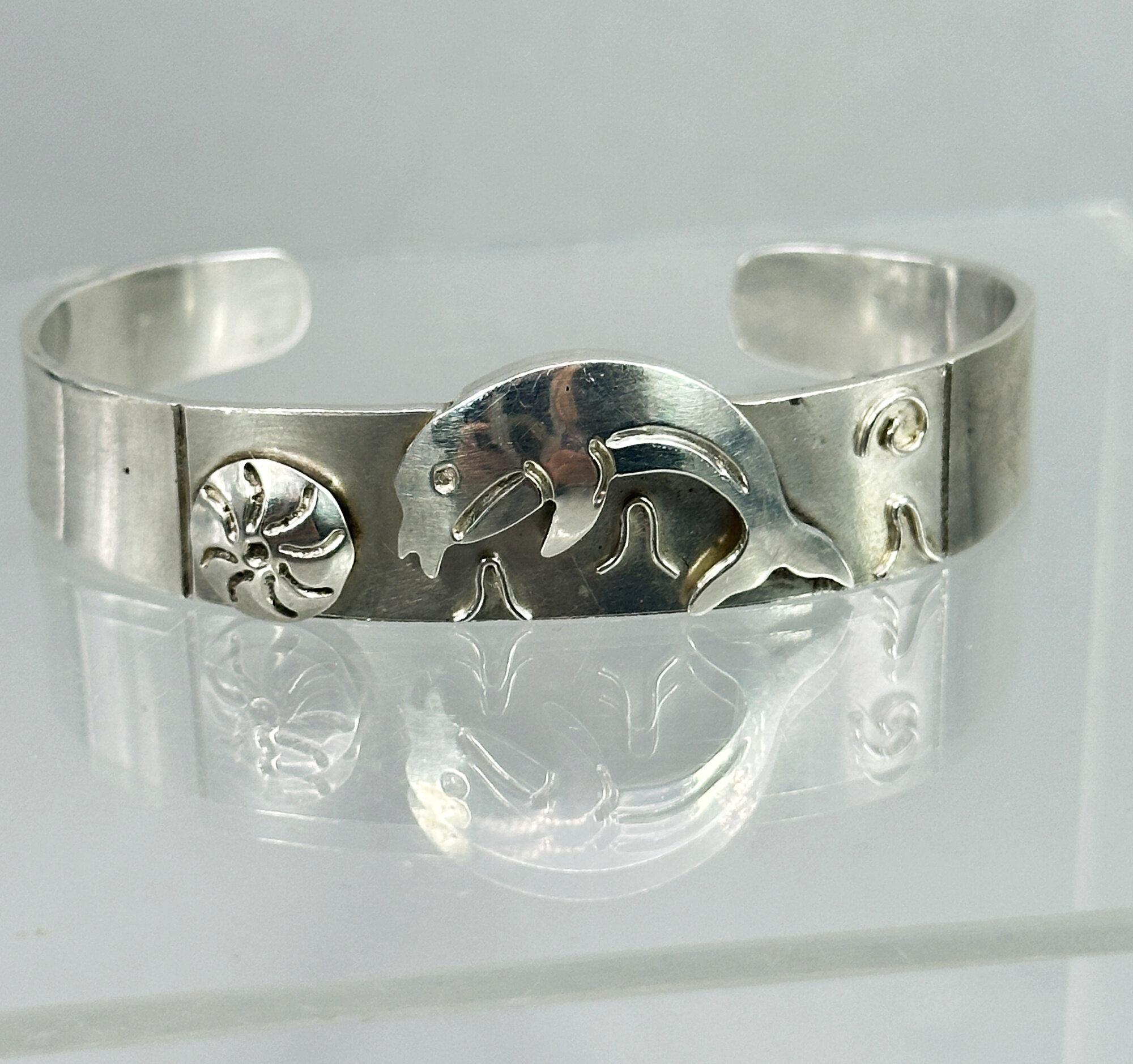
Mexican silver dolphin bangle bracelet c1990
Price: £65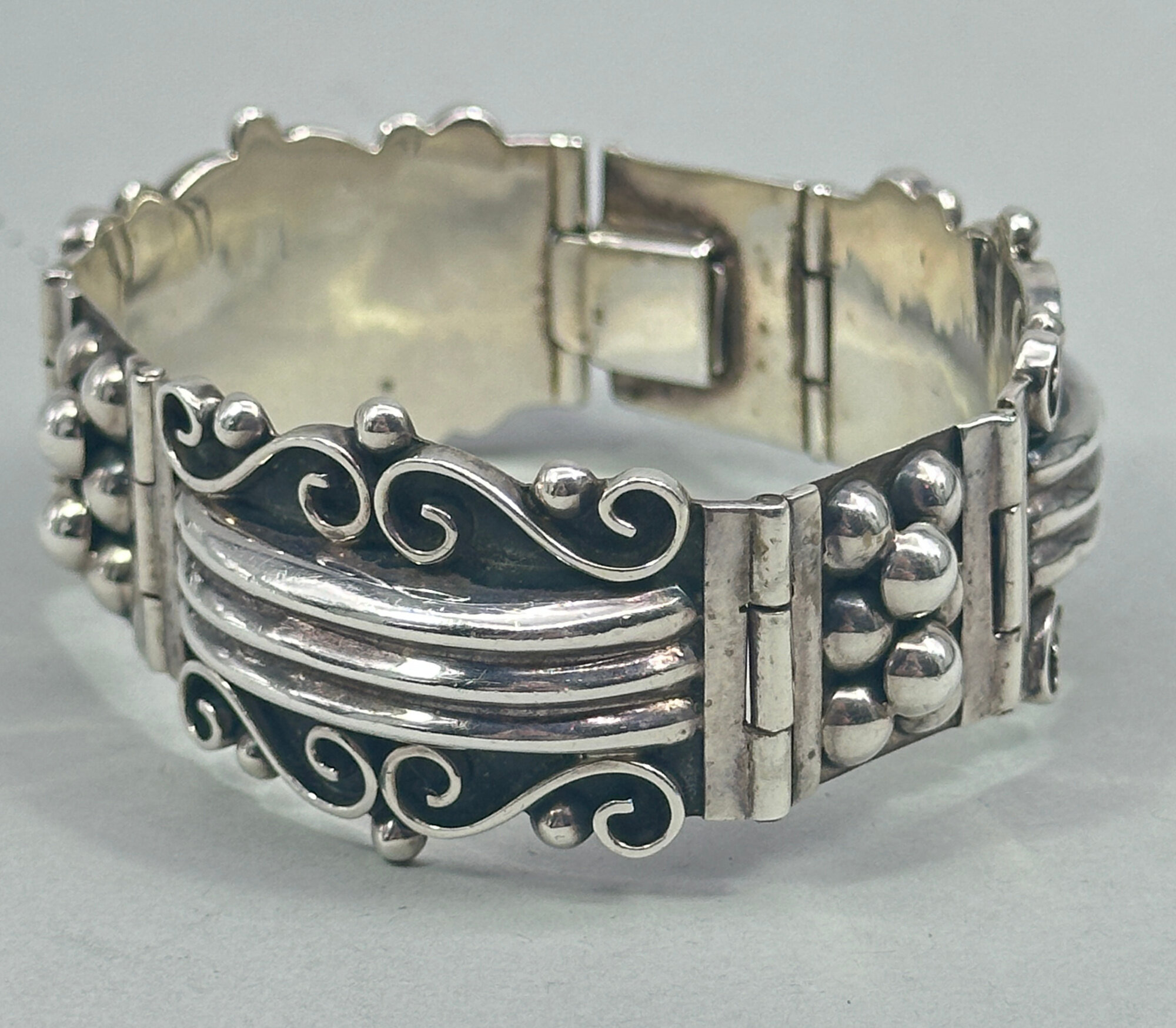
Outstanding Taxco silver bracelet c1960
Price: £295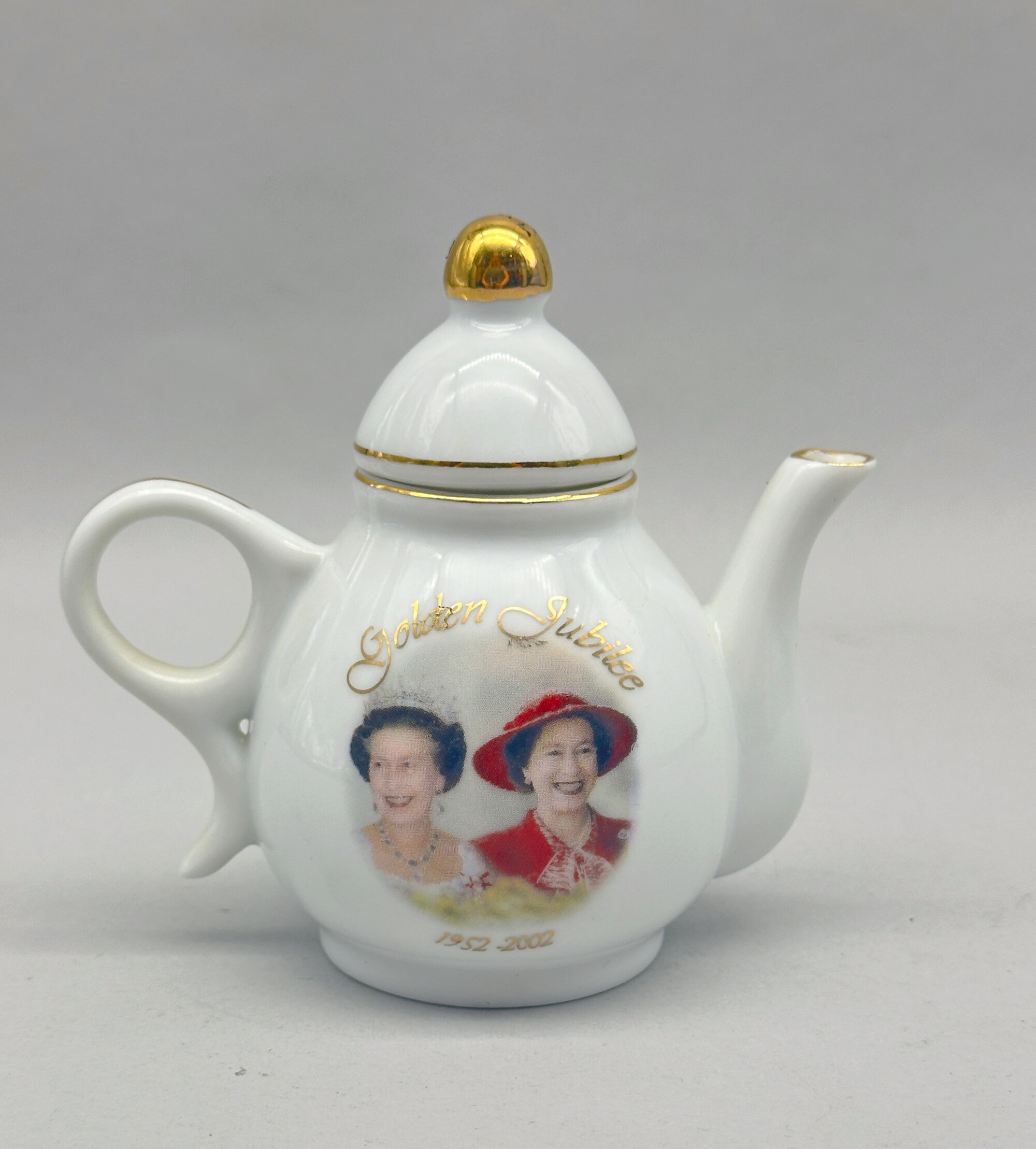
Teapot and Cover : Golden Jubilee Queen Elizabeth II, 2002
Price: £10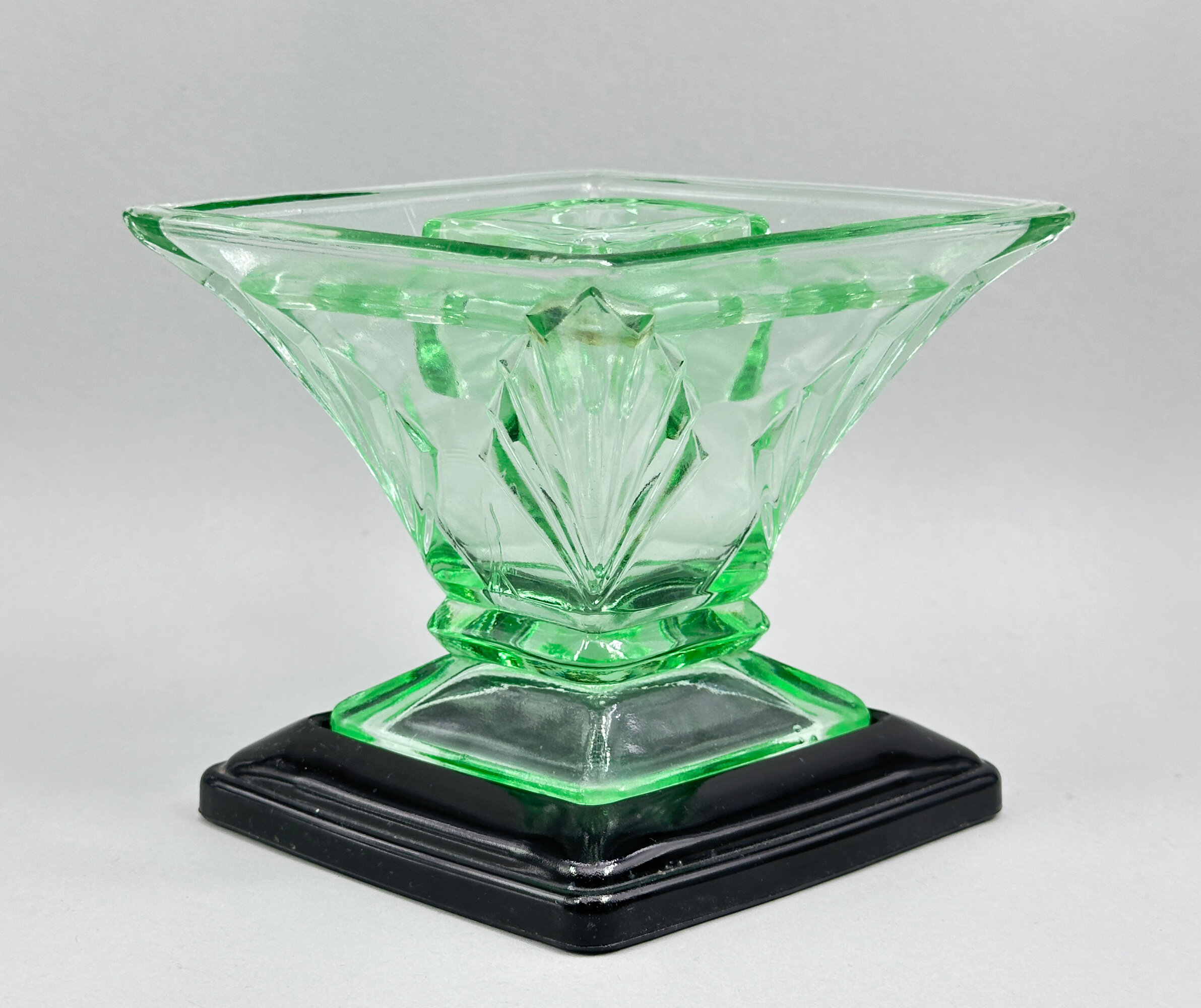
Art Deco Flower Vase, Frog and Stand, Bagley Glass, Spinette Range, 1930s
Price: £45Bagley Glass was established in Knottingly, England (south east of Leeds) in 1871. Bottle makers at first they branched out in 1912 and opened a department 'The Crystal Glass company' which made crystal and pressed glass. But it was for the latter that Bagley were to become famous and they became the biggest manufacturer of pressed glass in England in the years before and after the war. Many of their designs were influenced by the Art Nouveau styles and this flower vase, unusually presented complete with its frog and stand, is a classic example of their range.
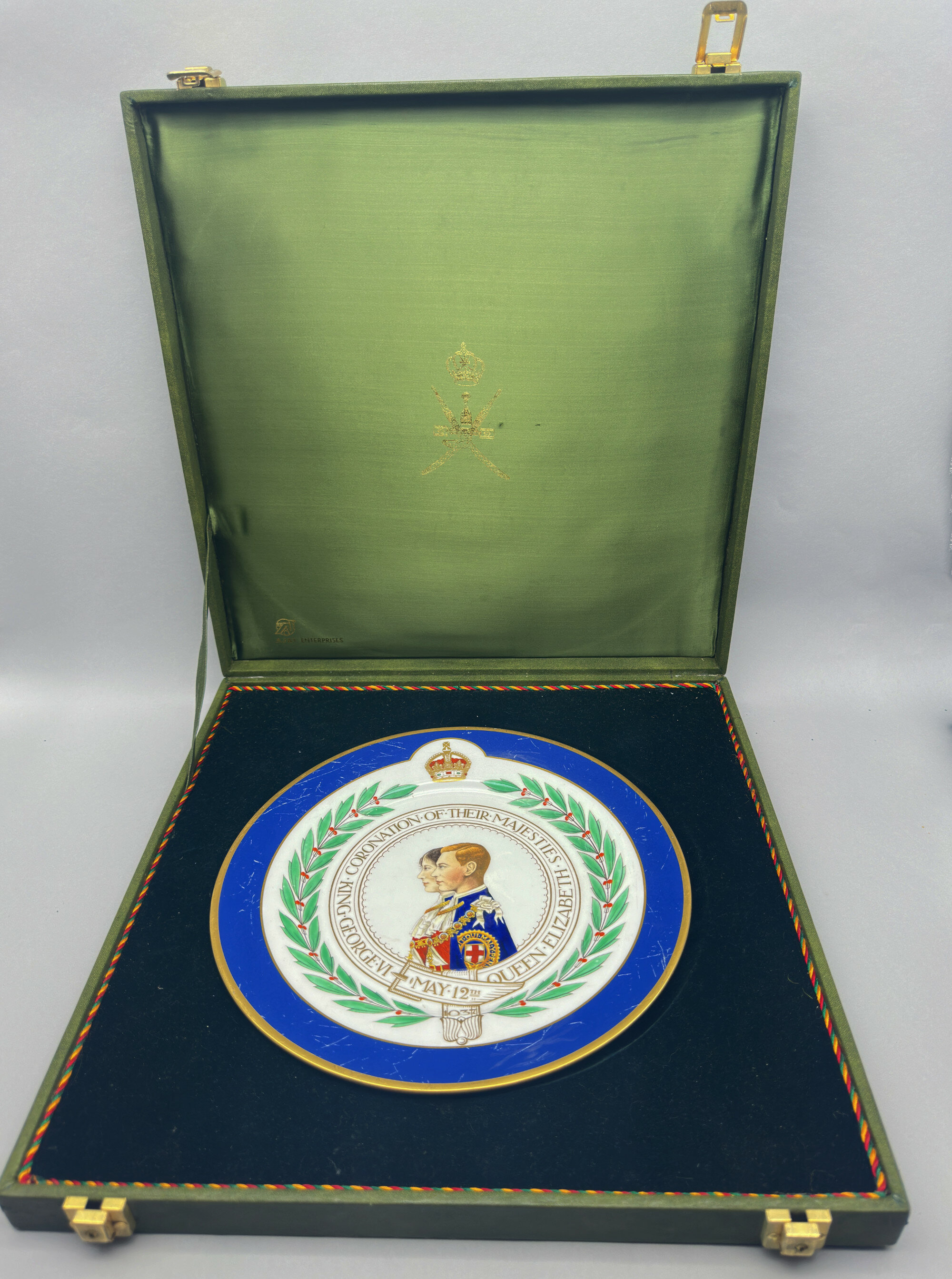
Mintons Coronation Plate, King George VI and Queen Elizabeth 1937, boxed
Price: £25
Suite of Taxco - necklace, bracelet and earrings c1960
Price: £475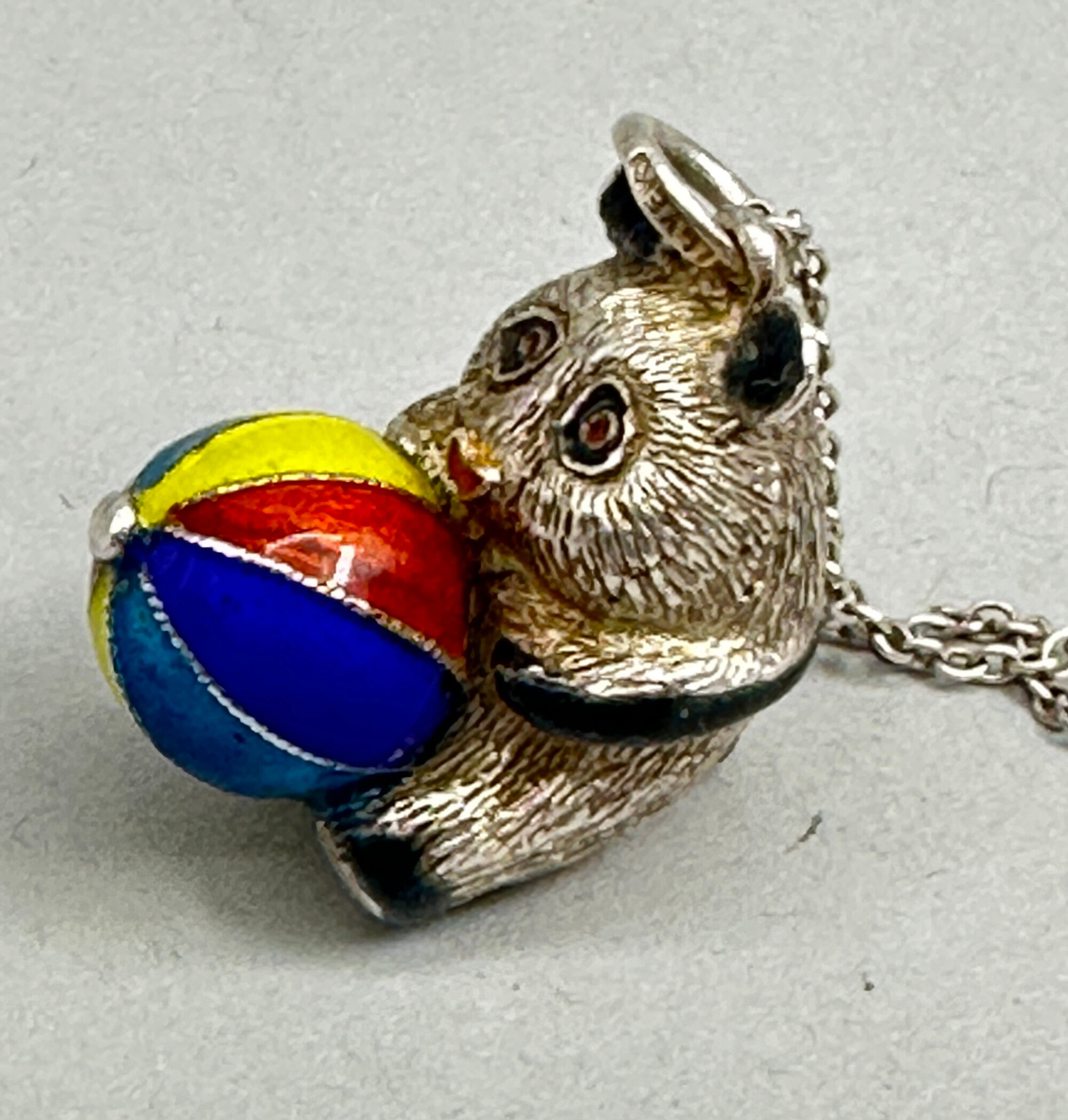
Sold silver and enamel Panda pendant necklace c1980
Price: £55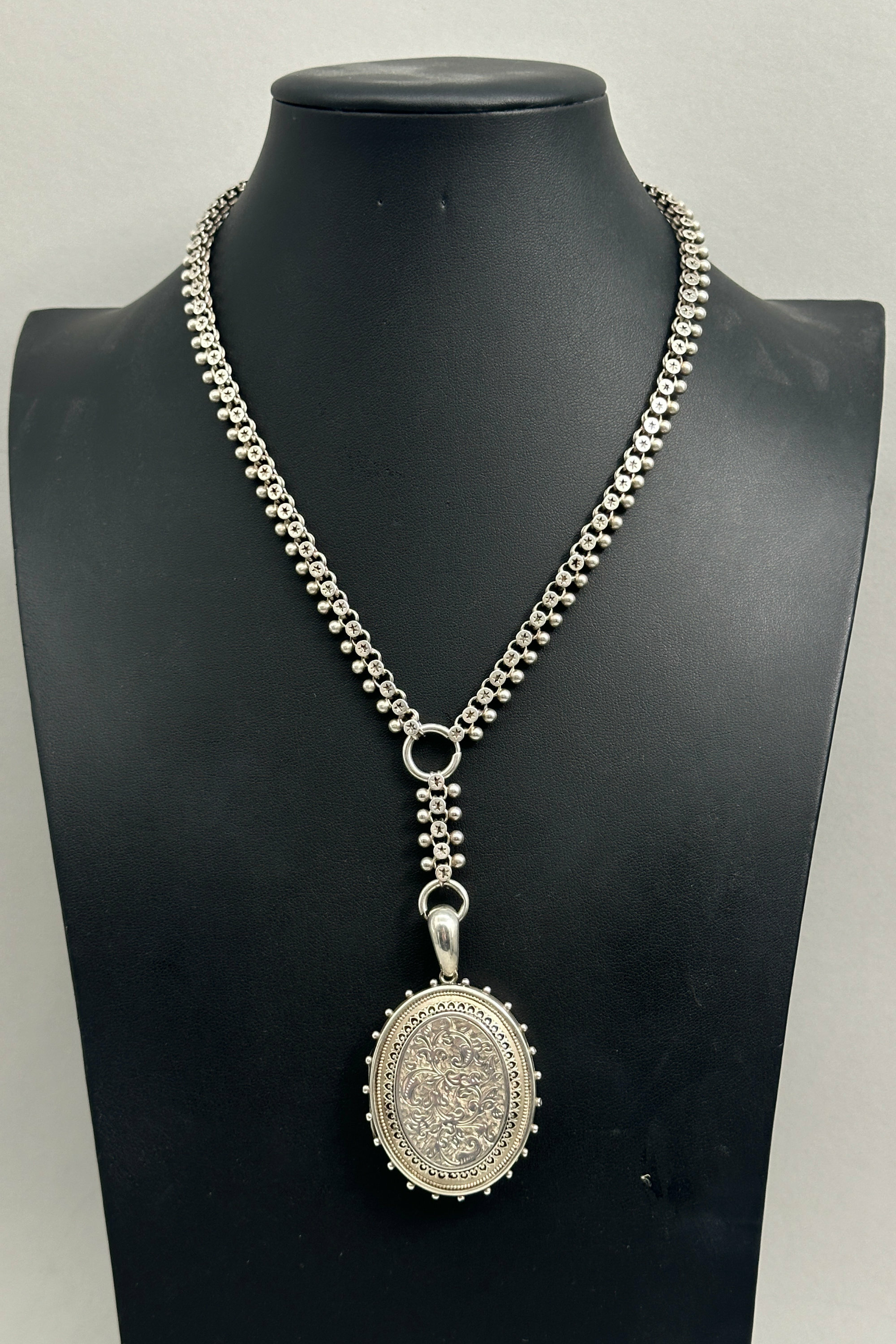
Victorian book chain with locket c1900
Price: £350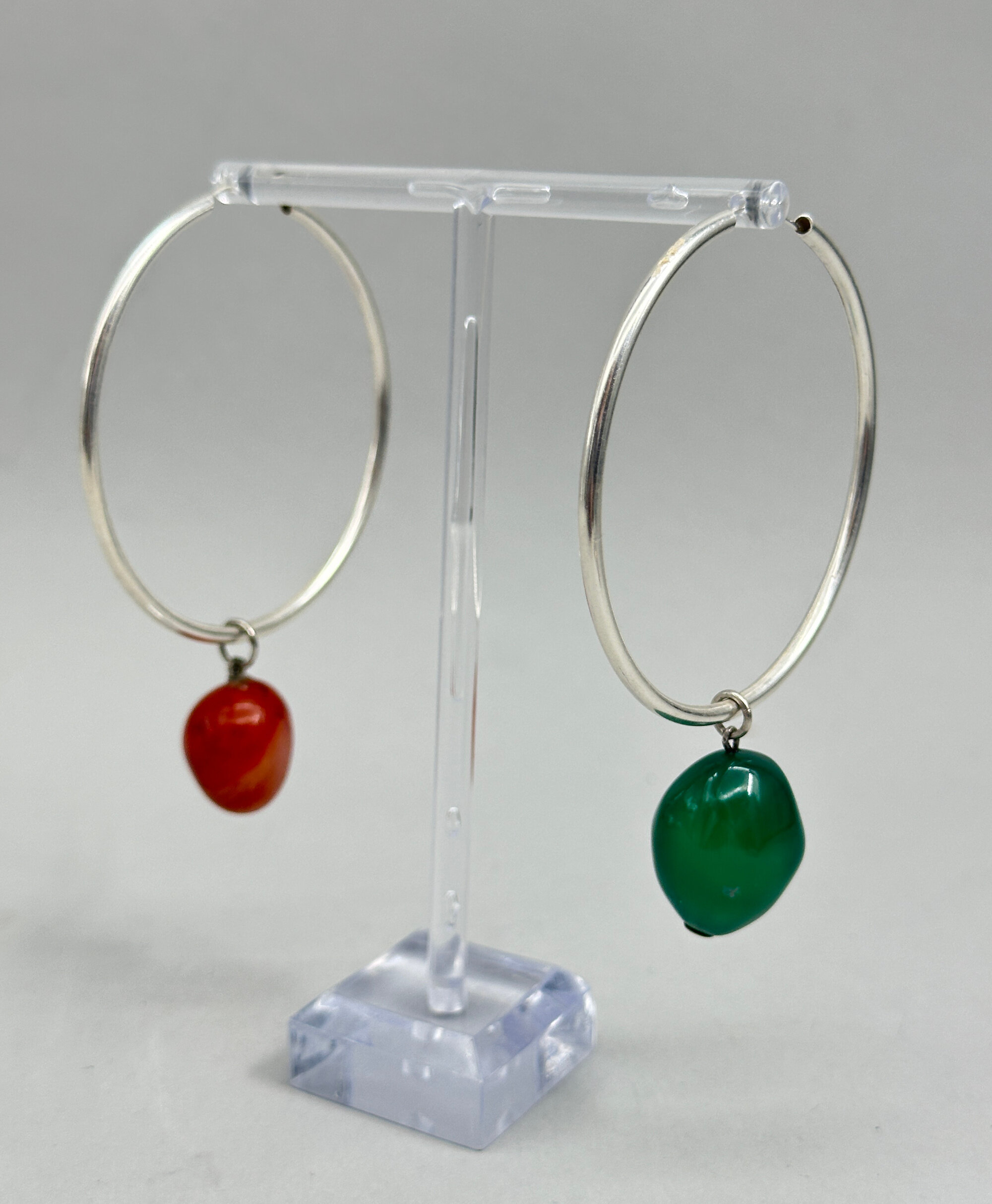
Pair of large hoop earrings with stone drops
Price: £45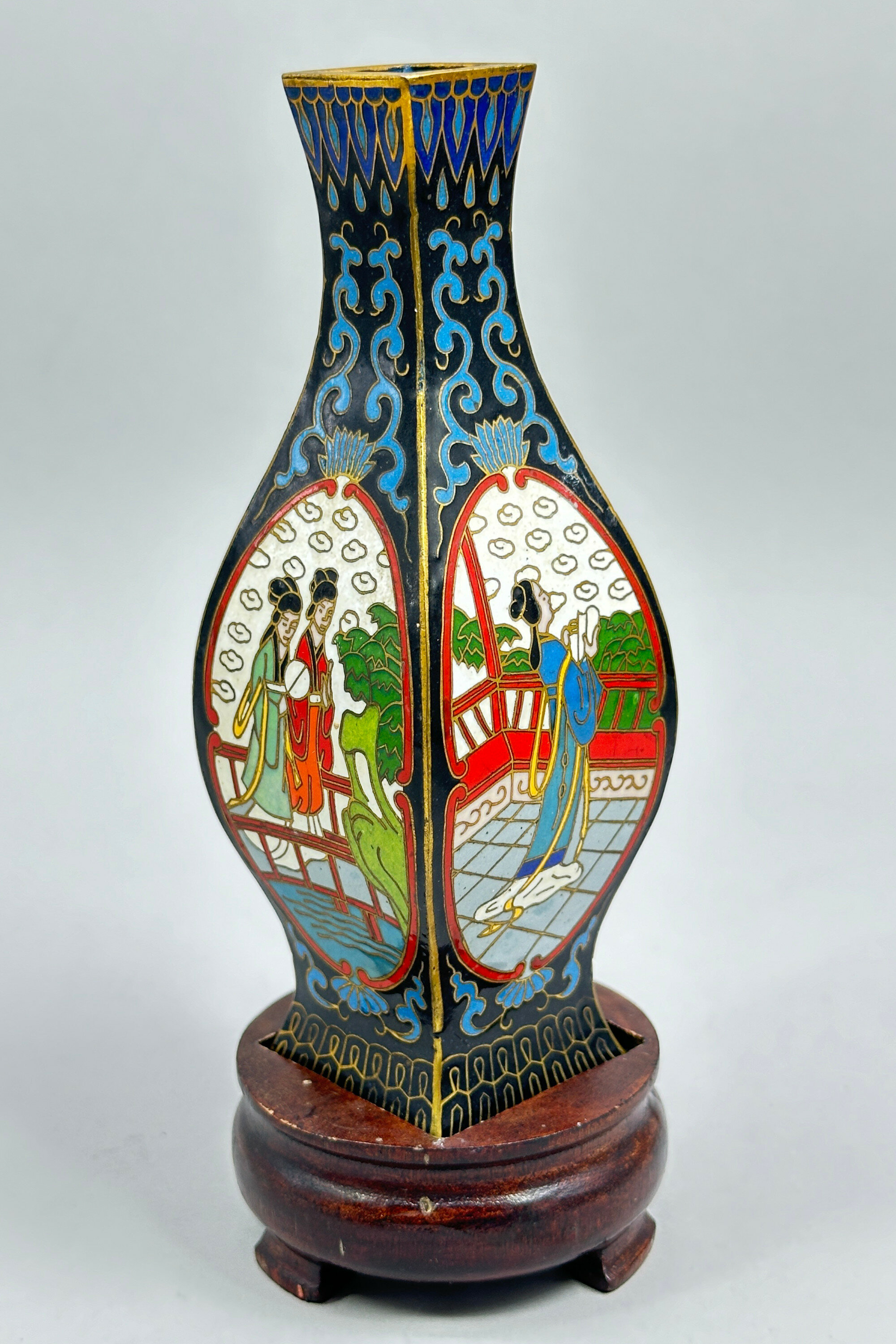
Chinese Cloisonné Square Vase on Stand, C20th
Price: £25The cloisonné technique, in which glass derived enamels were set in wire outlines (the so called ‘cloisons’ from the French word), was developed in China in the early Ming dynasty (1368-1644) and then used throughout, right up until the C20th, indeed pieces are still produced today. The style of enamelling here with fairly bold outlines to the decoration and the use of bright enamel colours suggests a dating here to the mid twentieth century which corresponds to the probable date of the accompanying wood stand. Perhaps intended as a desk ornament or possibly a flower vase, this piece could certainly find a home in a contemporary setting.
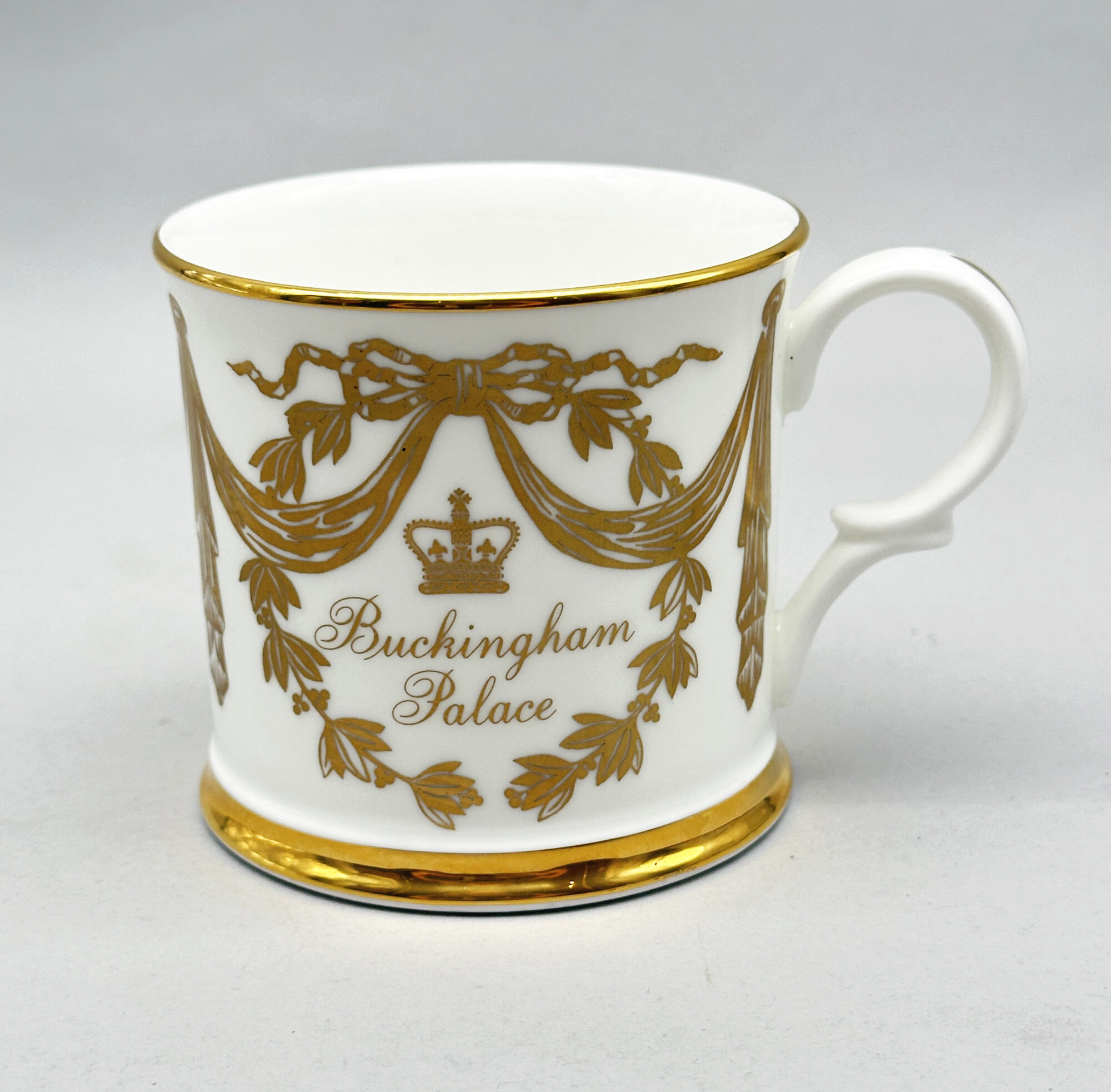
Porcelain Mug : Buckingham Palace 1997
Price: £10
Two Amelia Art Glass Vases, Apple and Pear
Price: £30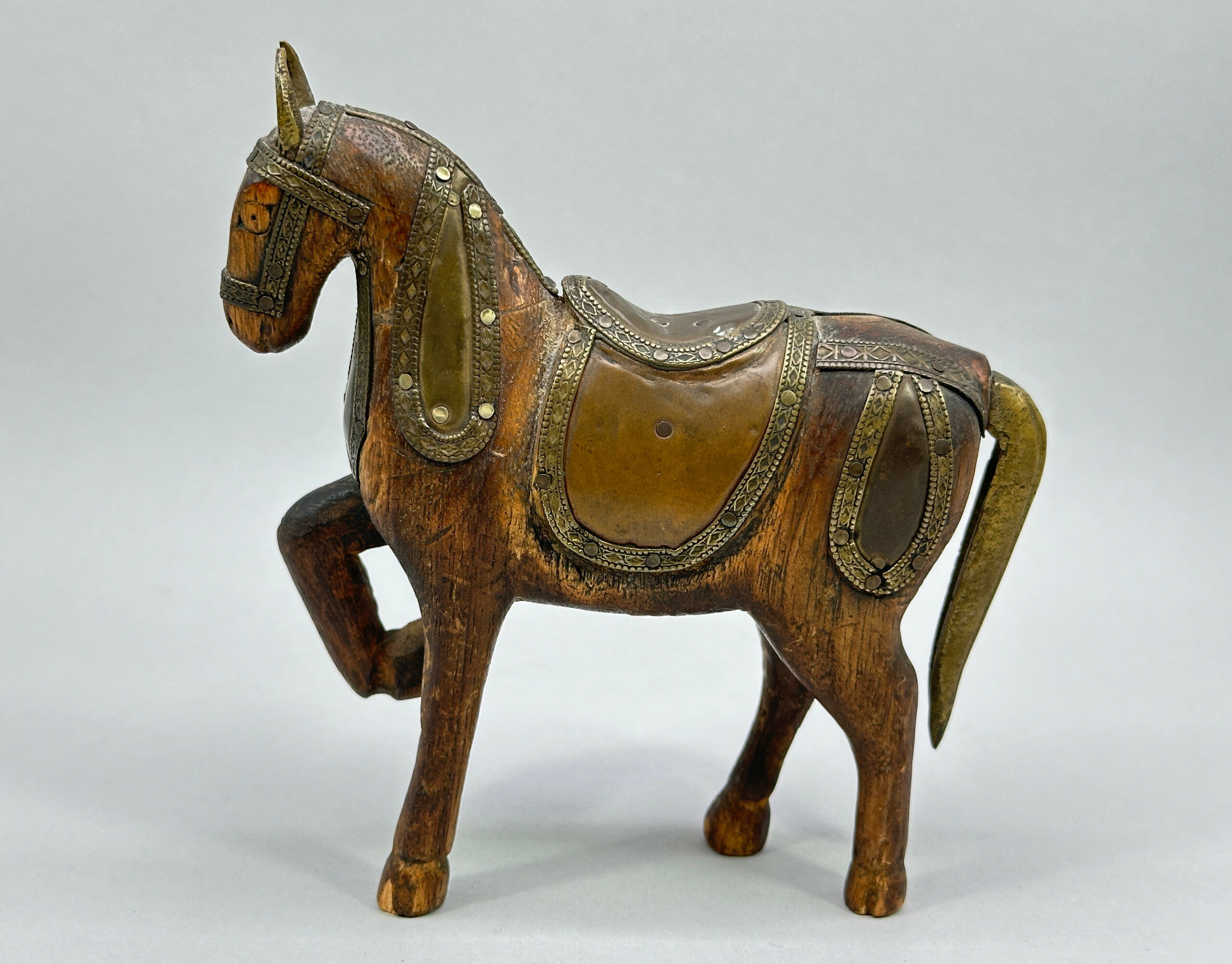
Indian wooden toy model of a Horse with metal fitments, early C20th
Price: £25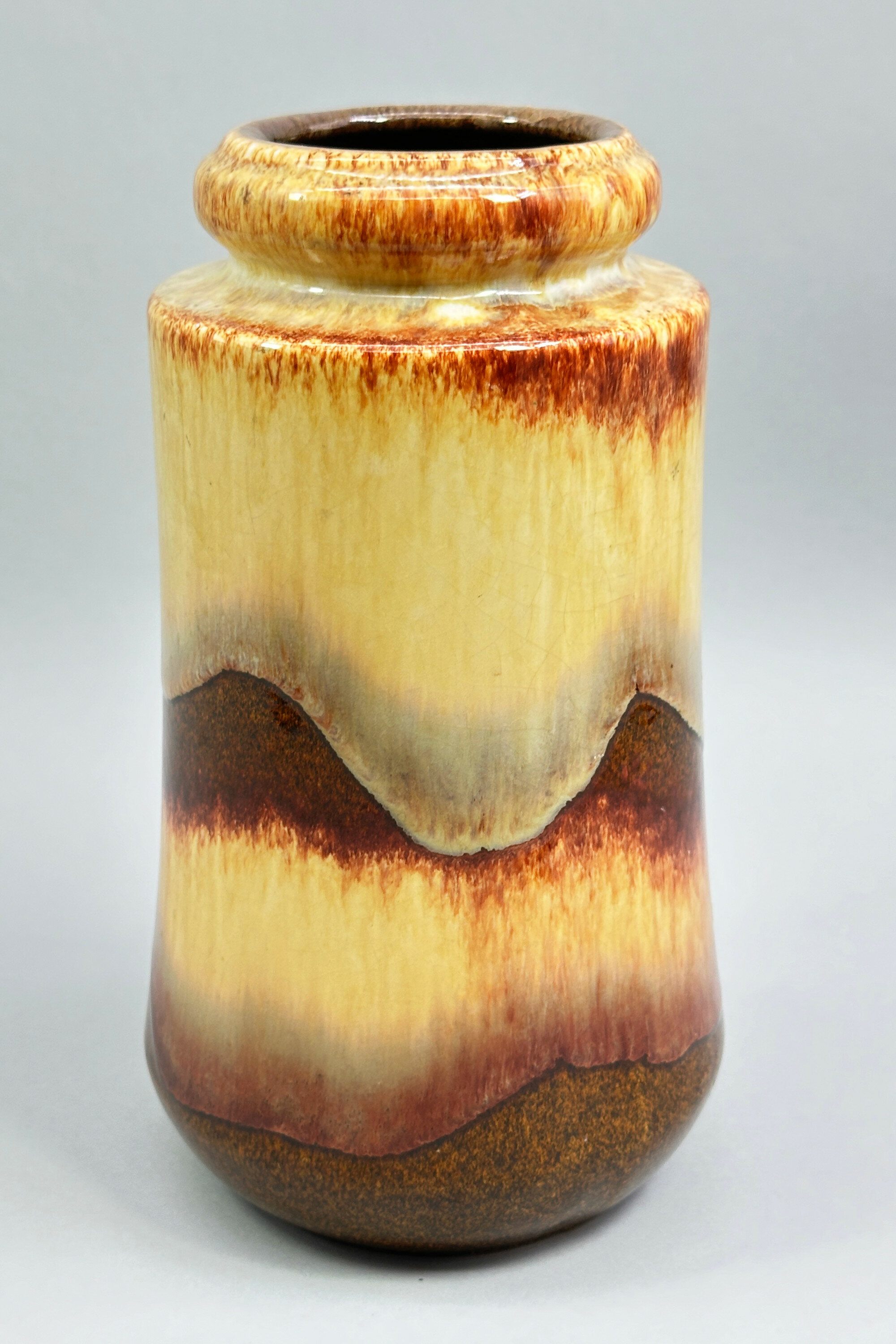
West German Studio Pottery Vase, Scheurich, 1960s
Price: £35
Pair of Brass Wall Plaques of Jousting Knights, Peerage Brass, mid C20th
Price: £45
Pair of Art Deco style Wall Pocket Vases, Poole Pottery, mid C20th
Price: £55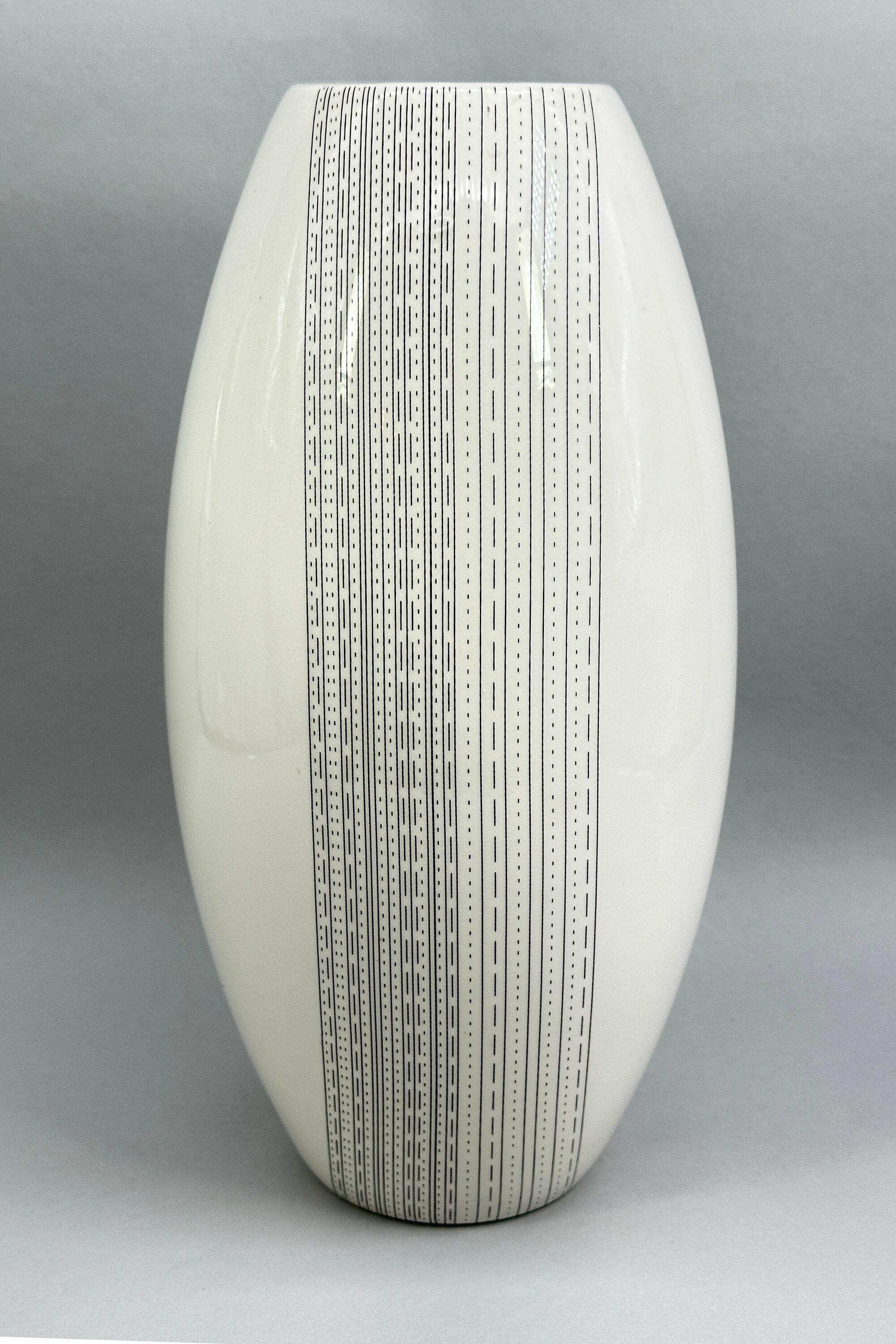
Abstract Design White Glaze Vase, probably British mid C20th
Price: £25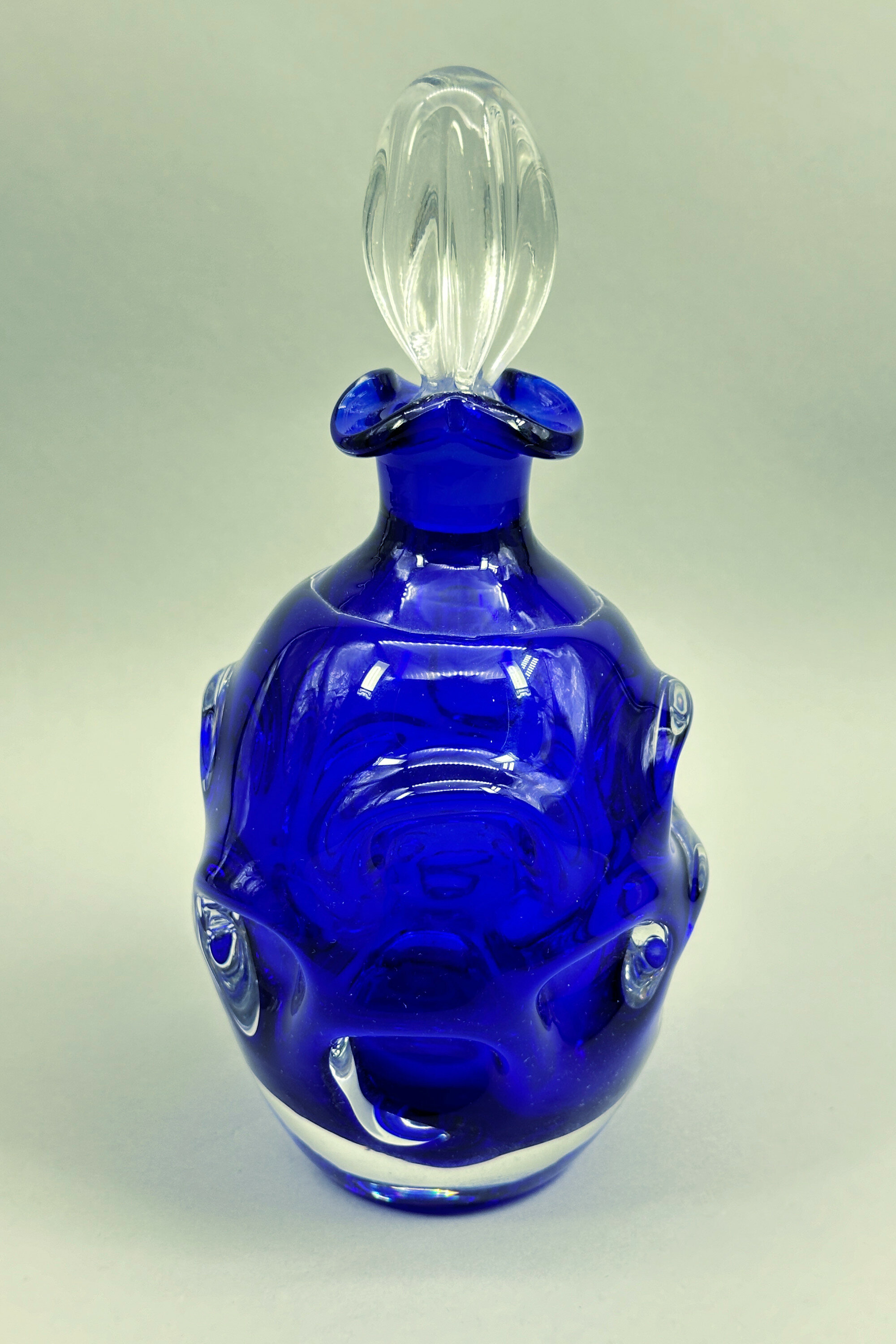
Aseda Glasbruk Blue Glass Bottle and Stopper by Bo Borgstrom, 1960s
Price: £55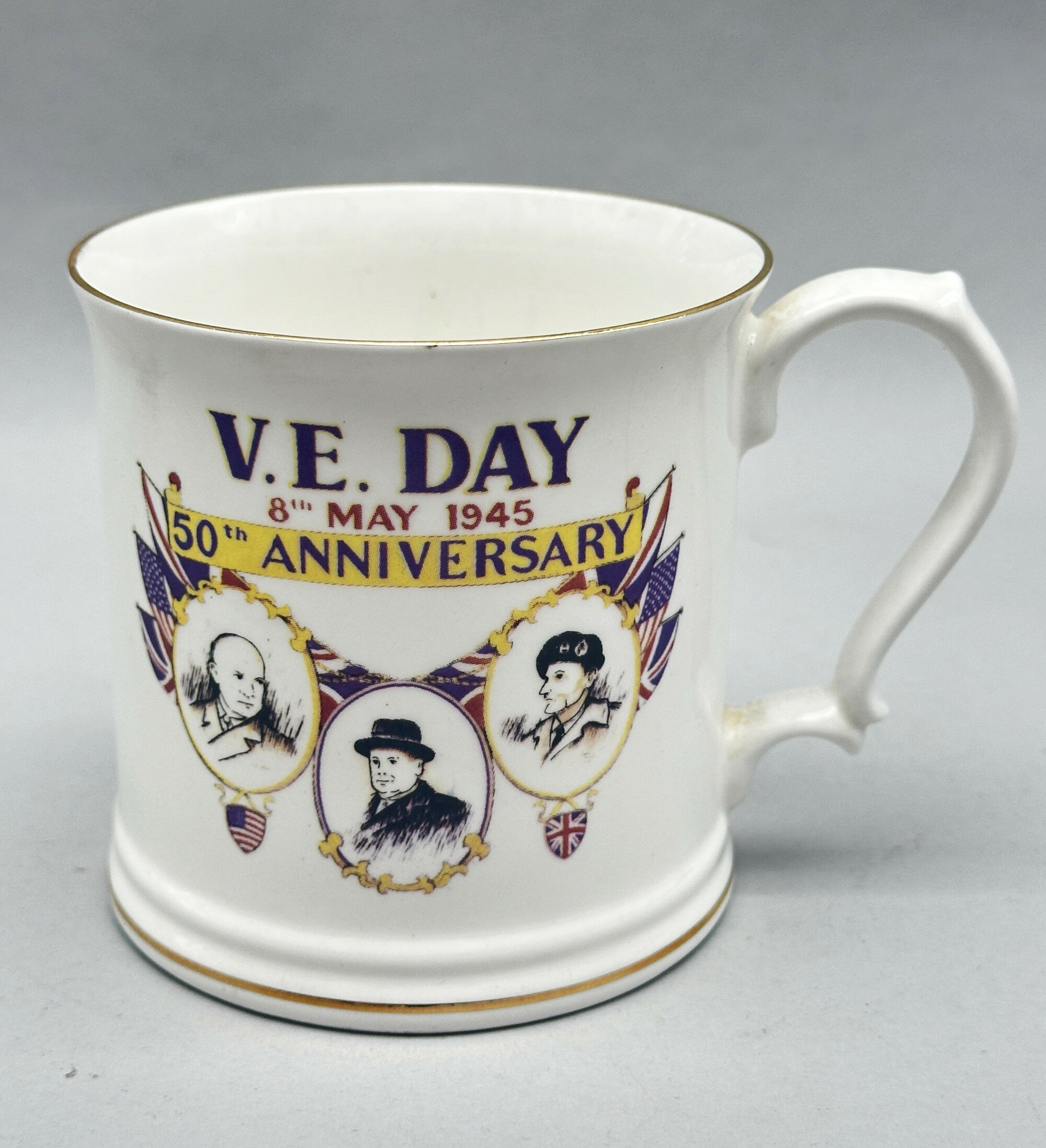
VE Day, 50th Anniversary Commemorative Mug, 1995
Price: £10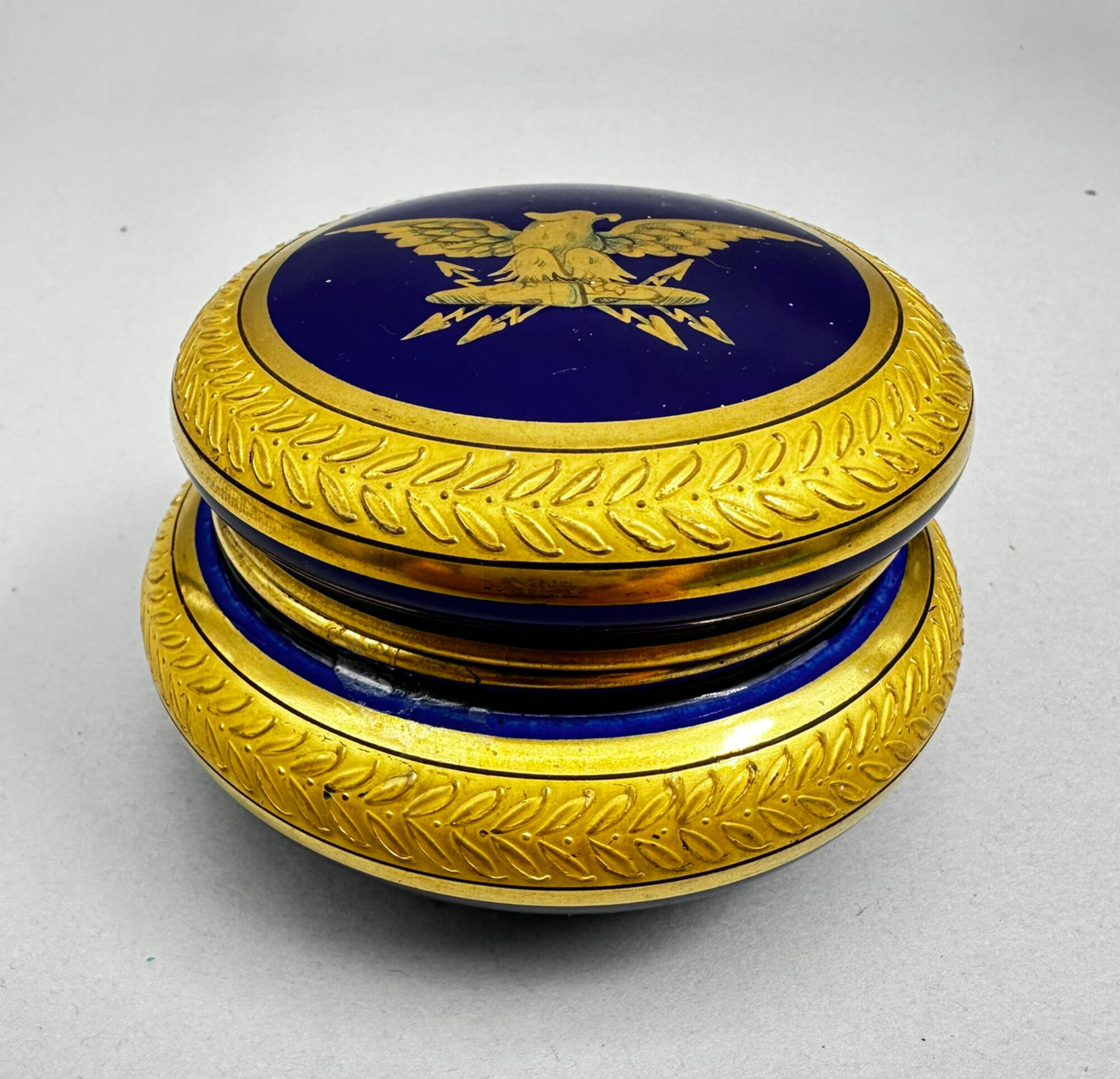
Blue Ground Empire Style Powder Box and Cover, Jean Pouyat, Limoges circa 1900
Price: £75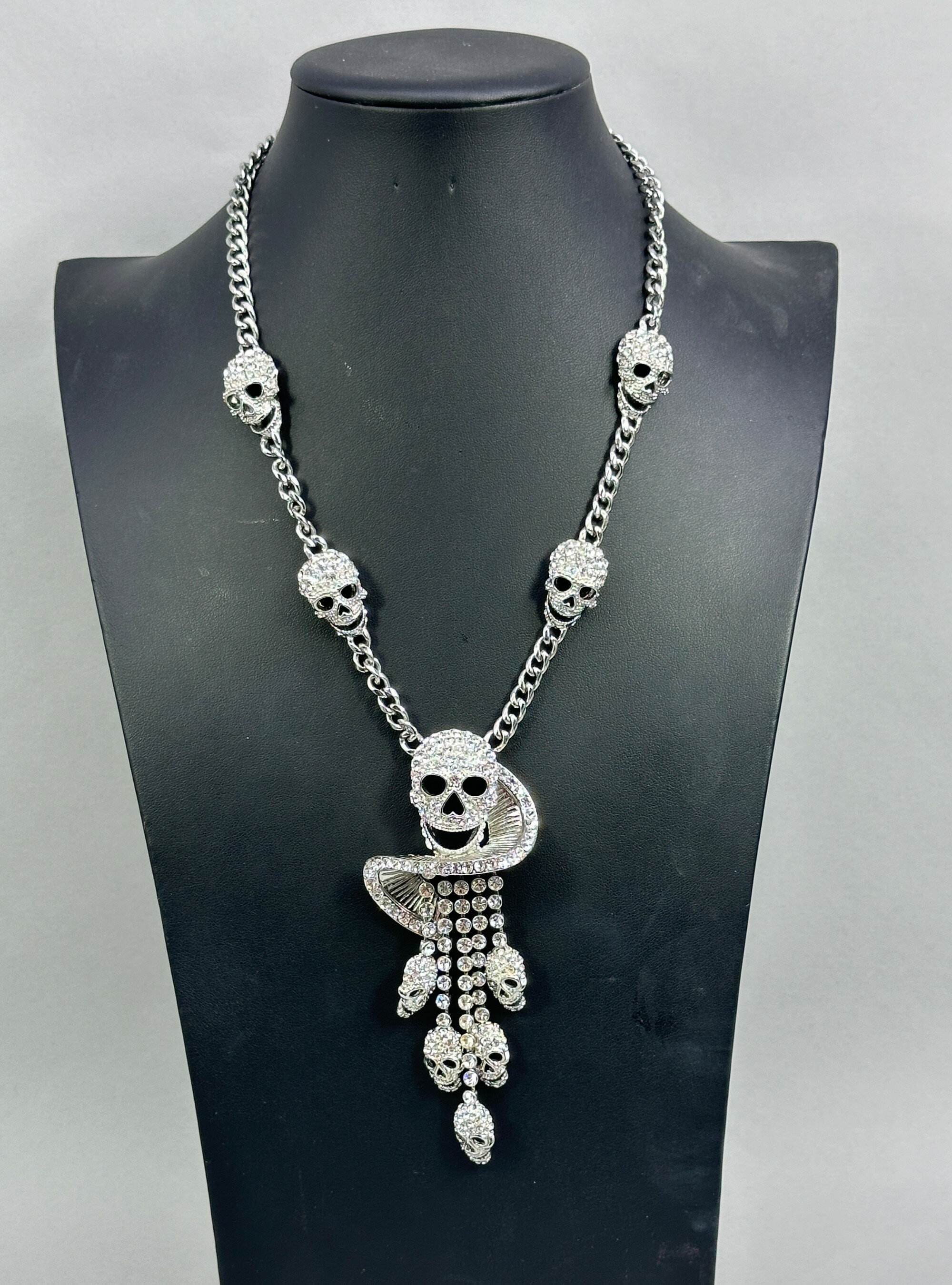
Butler and Wilson Skull Necklace, boxed, modern
Price: £125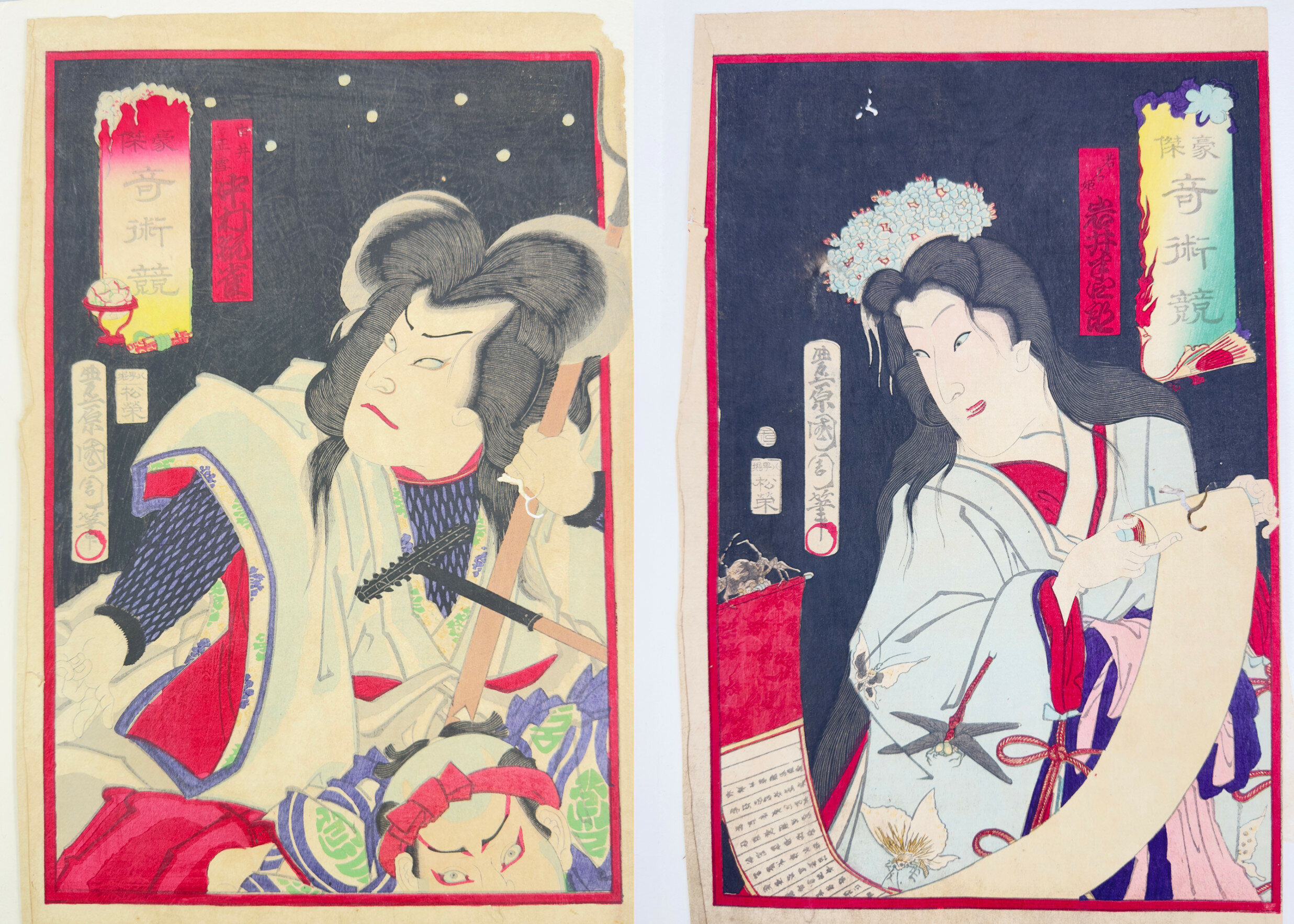
Two Japanese Woodblock Prints by Toyohara Kunichika, second half C19th
Price: £75Toyohara Kunichika achieved great fame and distinction a Japanese print artist. Born in 1835 he studied under Toyohara Chikanobu and then Utagawa Kunisada (also known as Utagawa Toyokuni III) eventually using a combination of both his teacher’s names to create his own professional one. At first he worked within Kunisada’s studio and when his teacher died in 1865 was asked to design two memorial portraits of him. The beginning of the Meiji era (1868-1912) saw Kunichika issuing his own prints, often in themed series and he became known in particular for his portrayals of kabuki actors, indeed he regarded the theatre as almost his second home. A contemporary once wrote ‘"Print designing, theatre and drinking were his life and for him that was enough.’ He achieved great fame and was rated as one of the masters of woodblock printing. Contemporary observers noted Kunichika's skilful use of colour in his actor prints, but he was also criticized for some of his choices for unlike most artists of the period, he made use of strong reds and dark purples rather than the softer colours used previously, exploiting the recent import of new dyes from Germany. Red, for the Japanese, meant progress and enlightenment so there was probably hidden meaning here. Eventually Kunichika’s lifestyle took its toll and he died in poor health, aged 65. It had been a Japanese custom for people of high cultural standing to write a poem before death. Kunichika's own, inscribed on his grave, reads ‘Since I am tired of painting portraits of people of this world, I will paint portraits of the King of hell and the devils.’ For many years his prints fell out of favour but interest has now revived and Kunichika is regarded as one of the eminently collectible Japanese artists in the field and these two prints are an excellent example of his work.
Each print is accompanied by a printed text on fine paper which presumably describes the character represented. The second of them is accompanied by two sheets one of which has become attached in one small place to the print itself but could probably fairly easily be detached by a restorer. In general there are some typical signs of age with minor losses (illustrated), tears and folding but the colours remain bright and fresh.

Framed Oil Painting on Board of a Winter Landscape Scene, C20th
Price: £55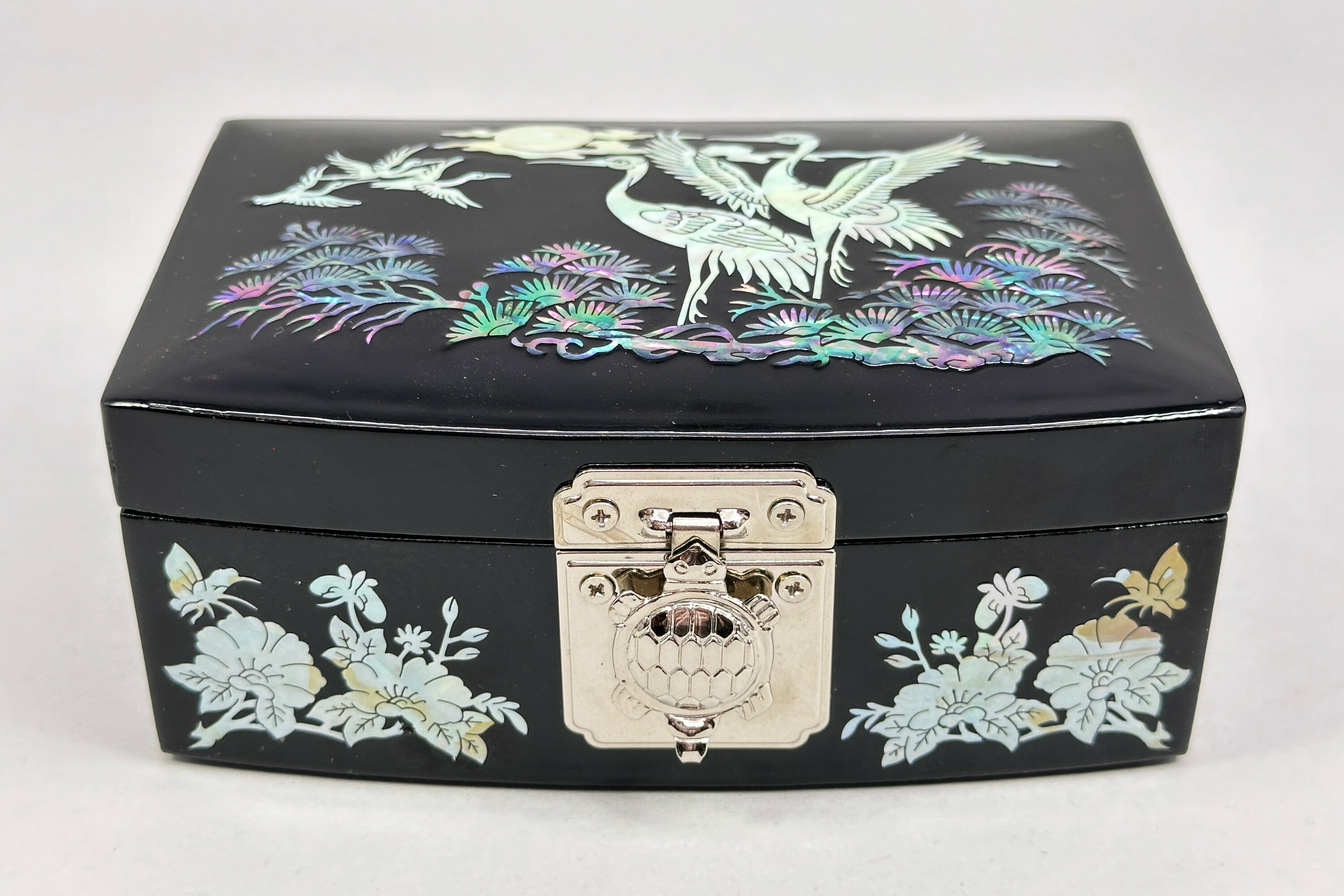
Korean Najeonchilgi lacquerware jewellery Box, C20th
Price: £25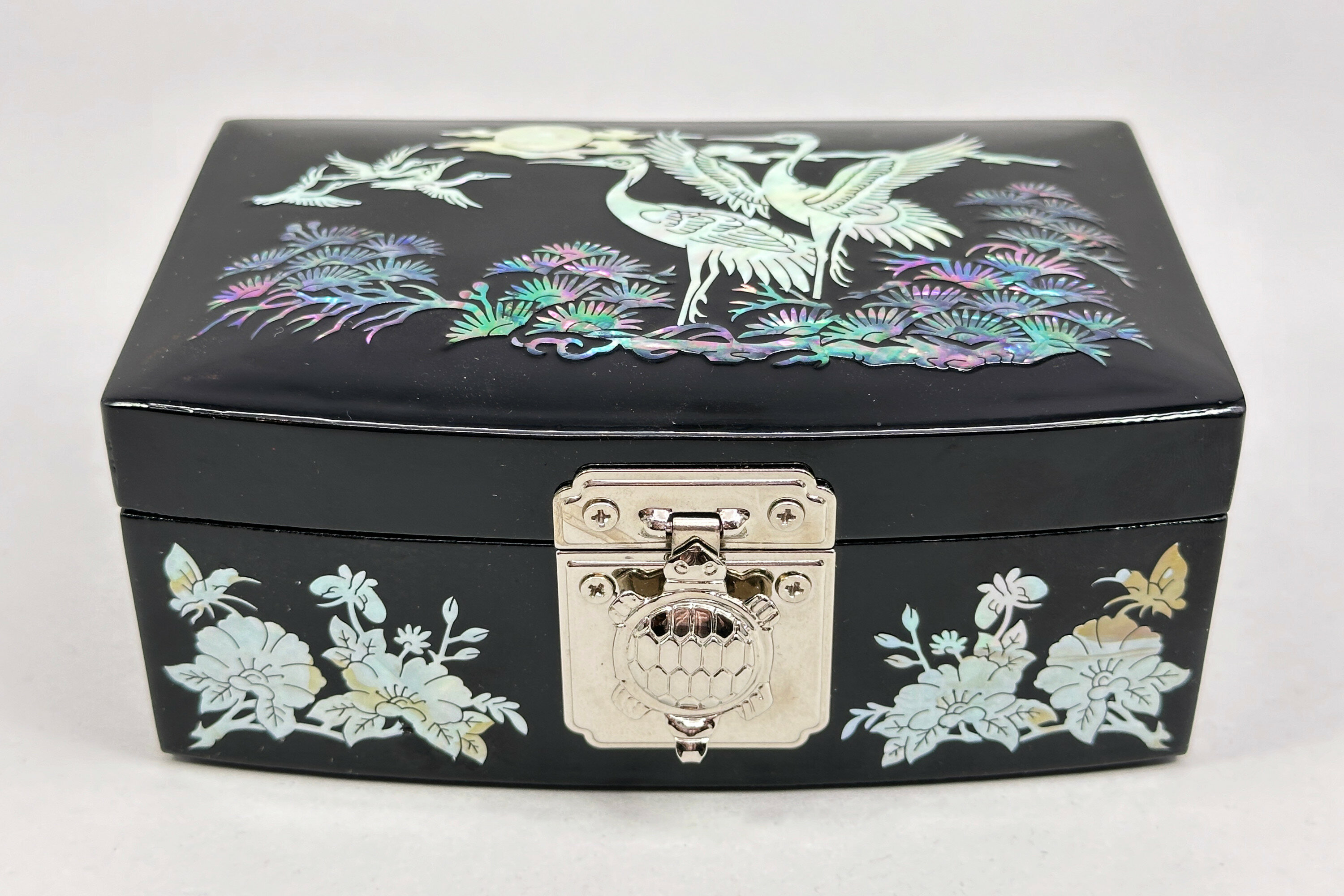
Korean Najeonchilgi lacquerware jewellery Box, C20th
Price: £25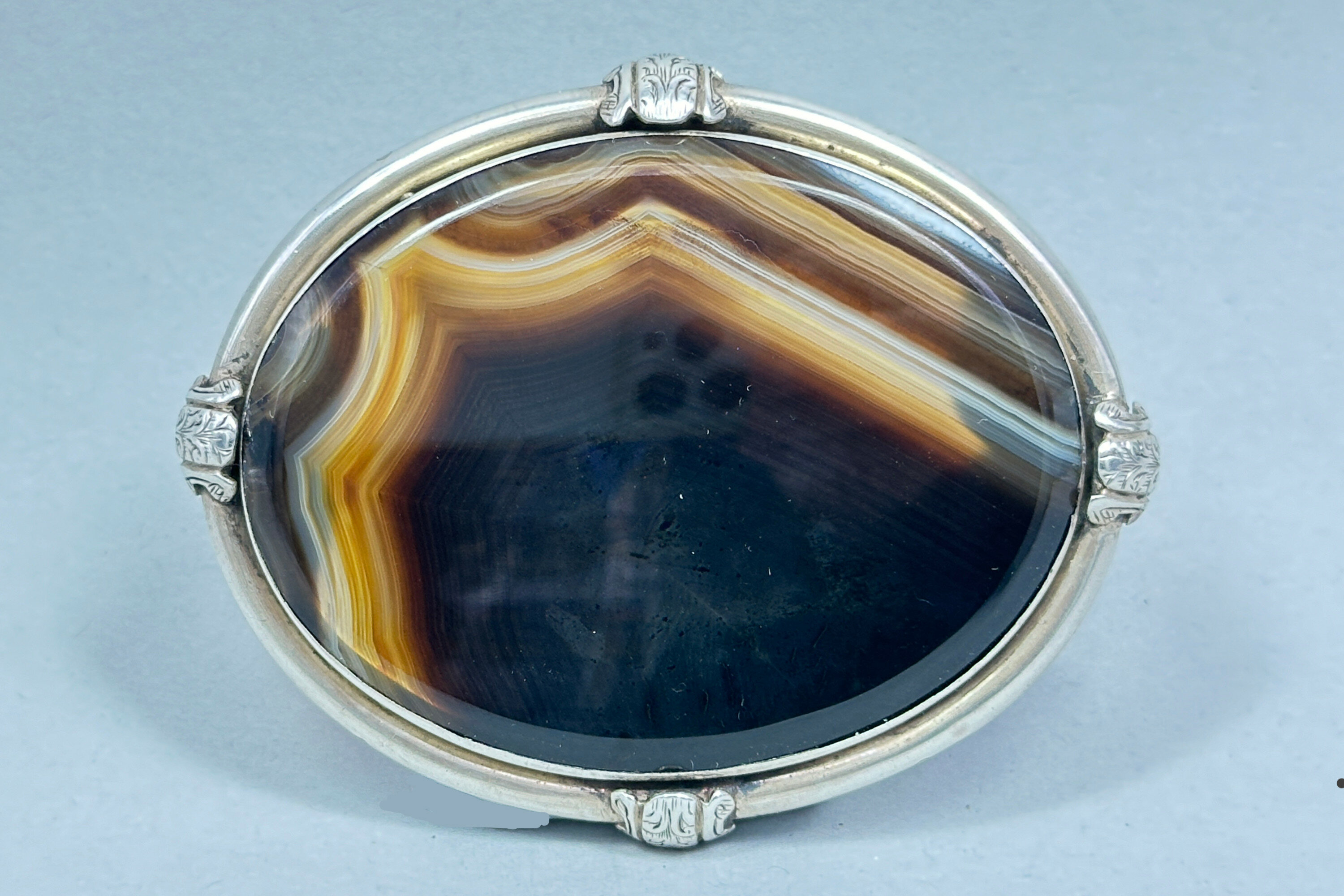
Victorian Silver Mounted Banded Agate Brooch, late C19th
Price: £100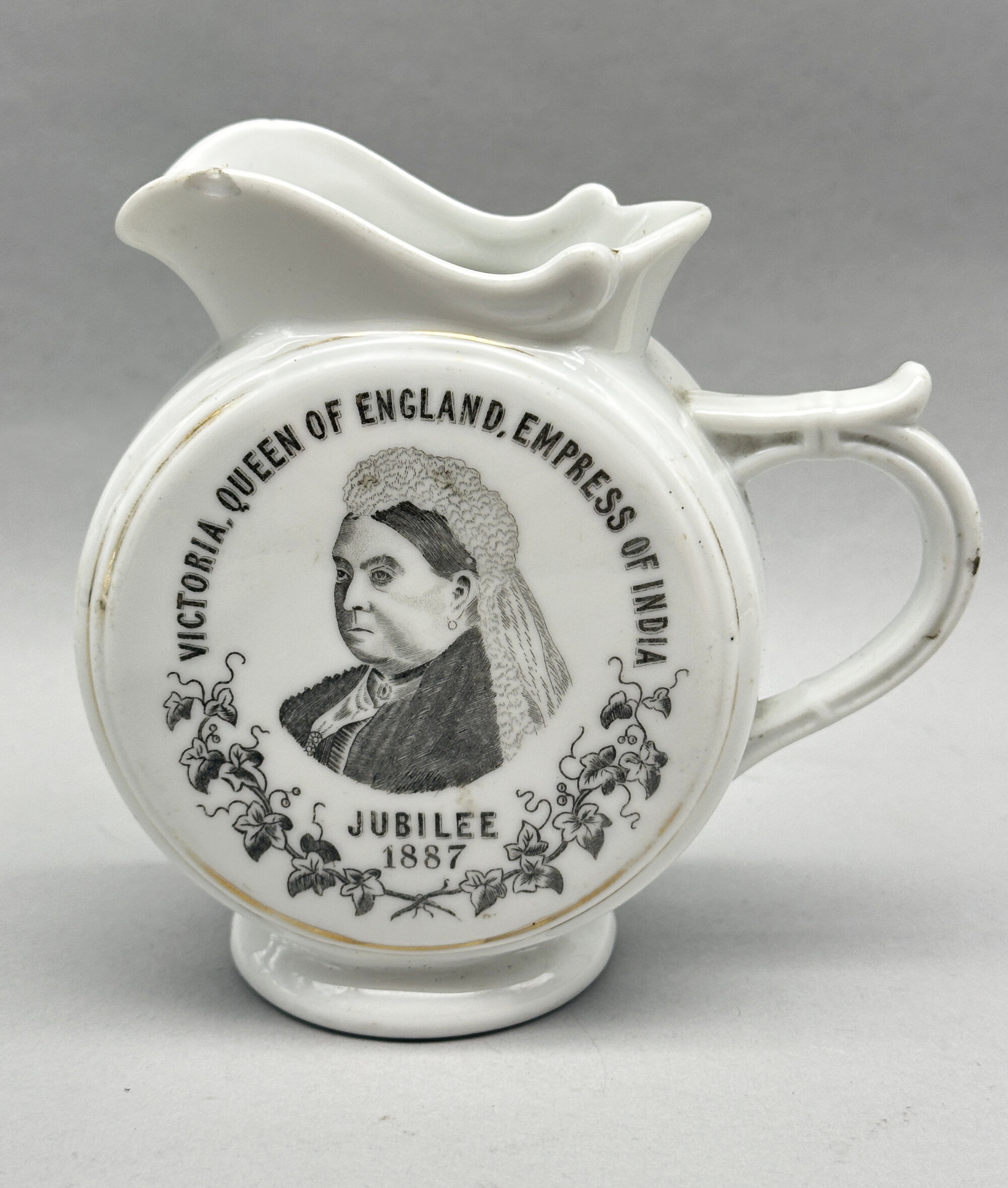
Queen Victoria Golden Jubilee Jug, 1887
Price: £10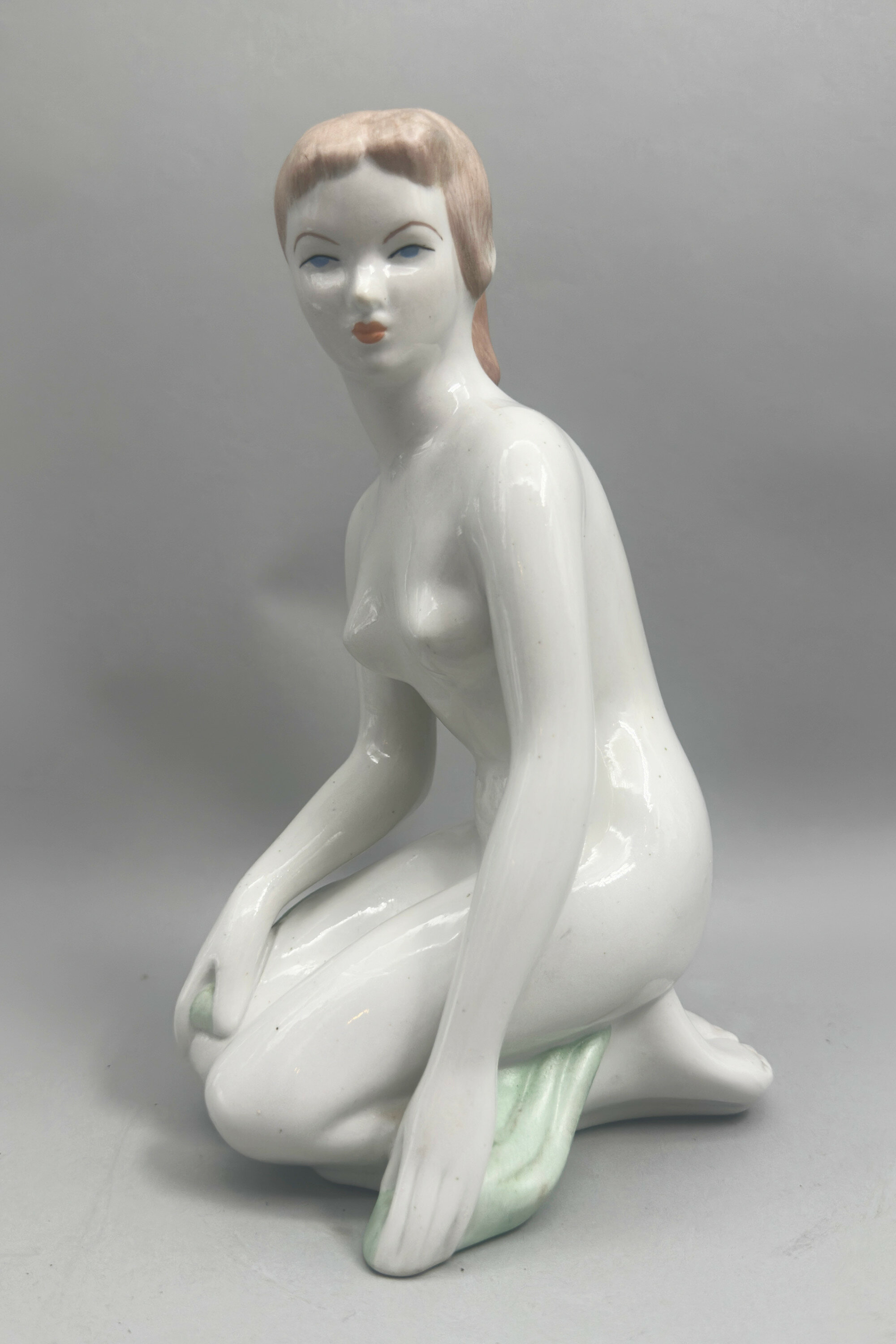
Art Deco style kneeling figure of a Girl, Aquincum Hungary, second half C20th
Price: £75Aquincus was an ancient Roman settlement, eventually to become the town Obuda, the third of the three cities which were merged to form Budapest and the oldest district in the Hungarian capital. In 1854, Hüttl Tivadar set up a shop in Pest selling porcelain eventually becoming involved in porcelain manufacture itself with such success that by the early 1900s he was supplying the court at Buda, eventually supplanting the rival firm of Herend. Despite legal battles amongst the family concerning the ownership of the business, the firm continued to prosper until the 1950s when the new communist government decided to nationalize the factory, renaming it Aquincum Porcelángyár. Tableware, which had been the staple of the Hüttls’ production was replaced by figurines which rapidly enjoyed great popularity. One of the principle artists was Antonia Szabó who became chief designer in 1966. With the end of socialism, the firm went into private hands in 1993 but suffered an immediate and rapid decline causing it to close soon after.
This figure may possibly, then, have been designed by Szabó himself but it is certainly typical of the pieces produced in the early years of state control and perhaps one of the most appealing. The form of the mark corresponds with a dating to the 1950s or 1960s and the piece has both historical associations and considerable decorative appeal.
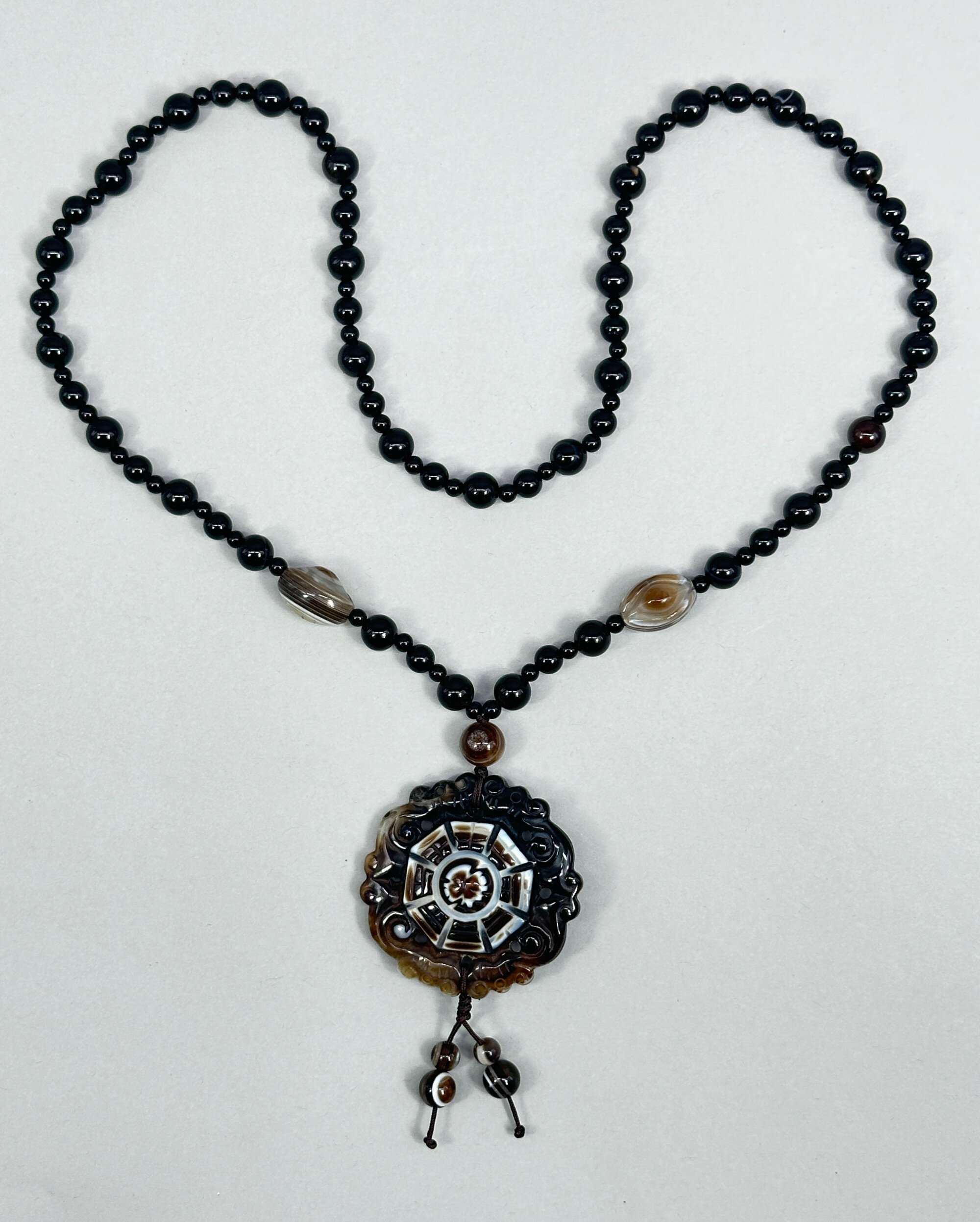
Chinese agate carving with onyx beads, 20th century
Price: £35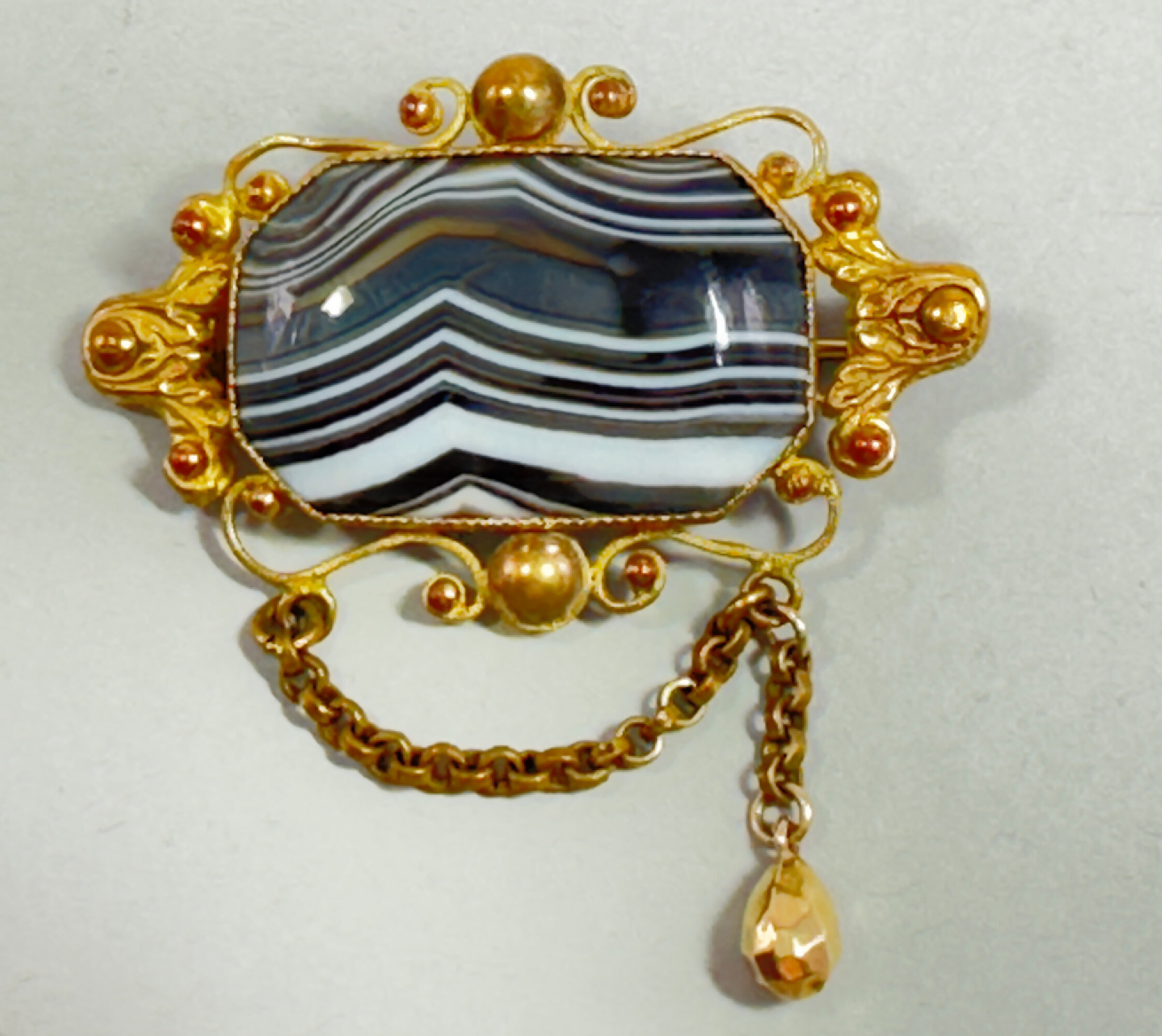
Victorian rolled gold and black and white agate Brooch, English c1920
Price: £50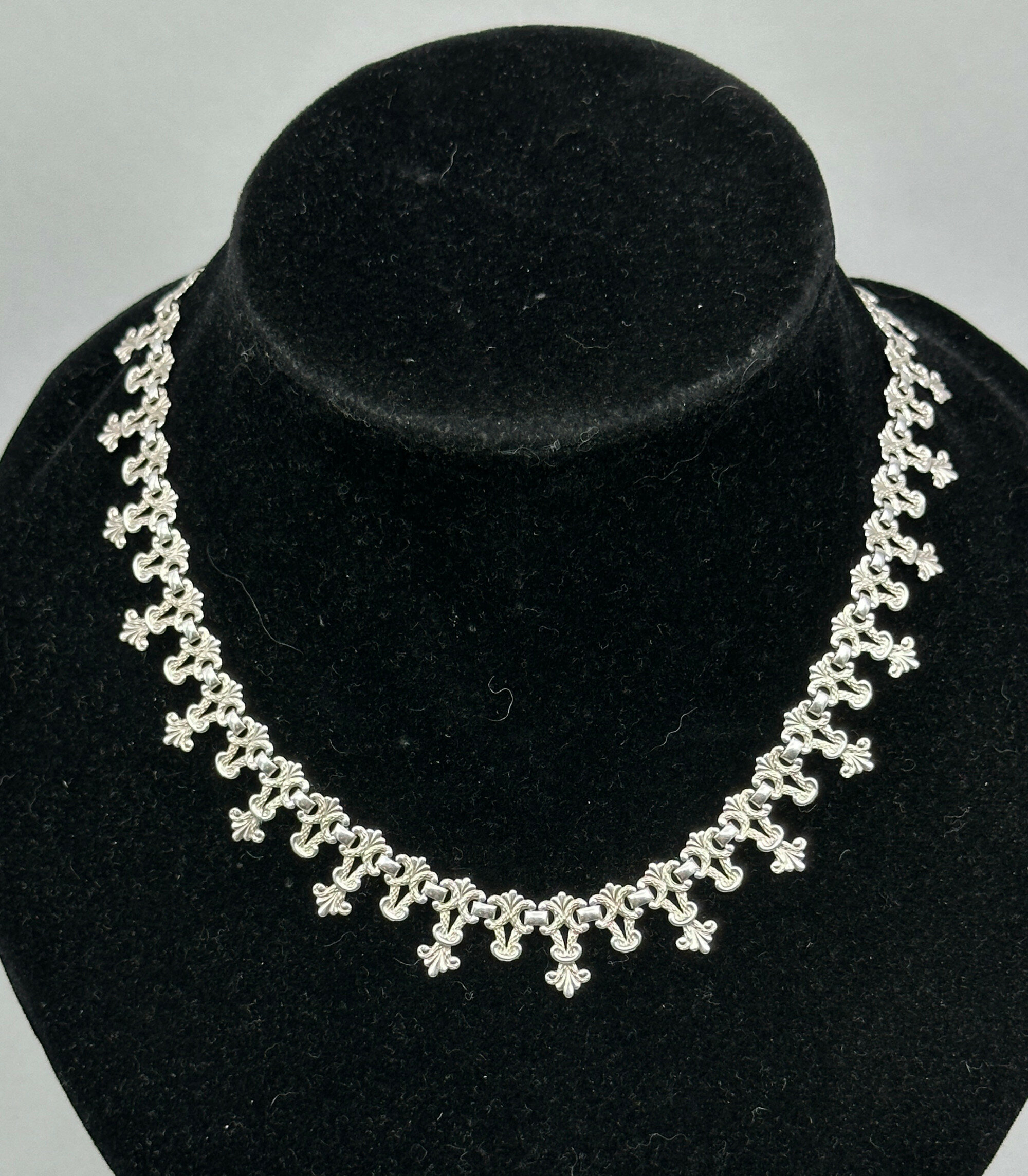
Edwardian silver fleur-de-lis collar necklace circa 1910
Price: £85Please note that the necklace is not marked for silver and has not been tested.
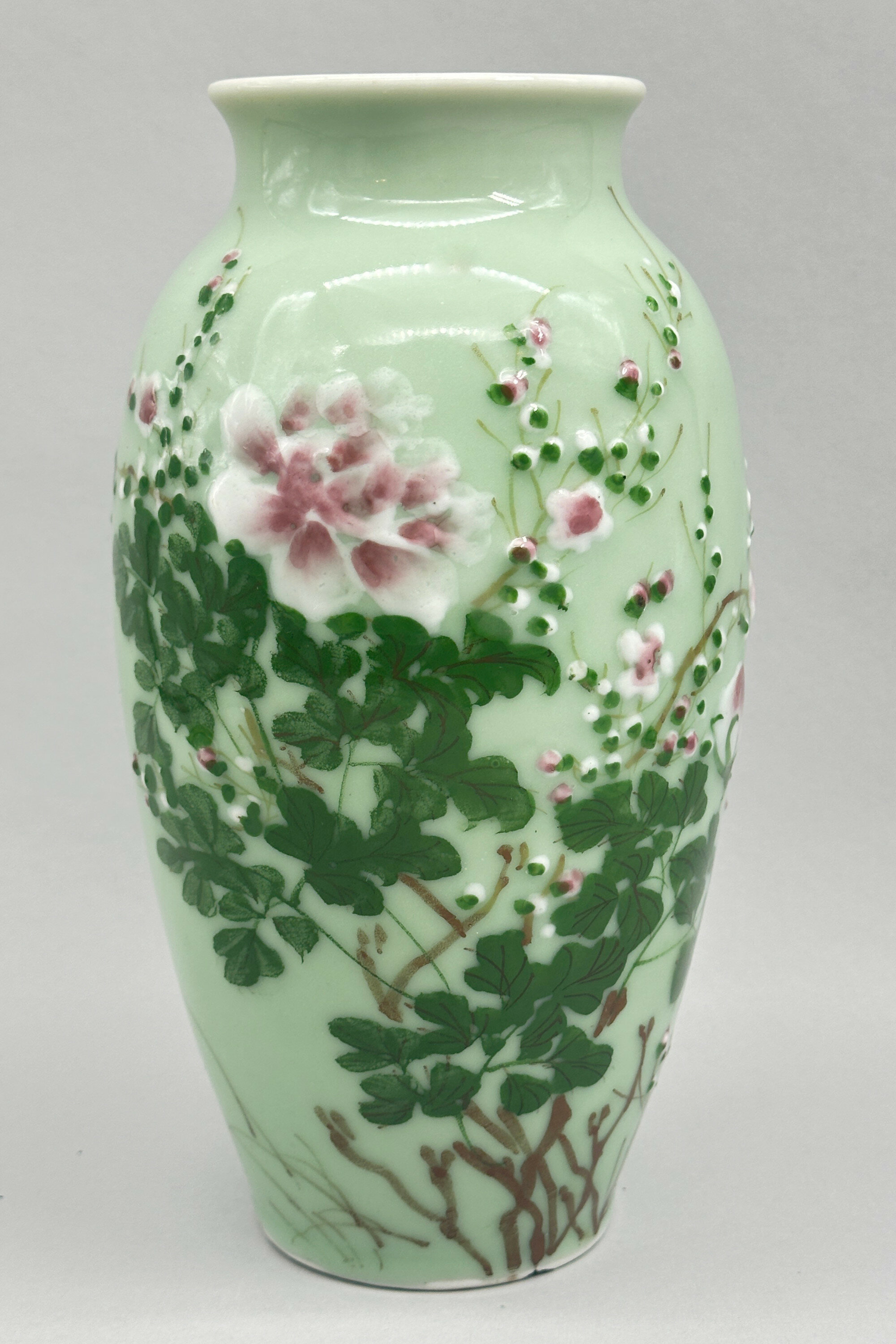
Japanese Celadon glaze vase with enamel decoration, late C19th
Price: £25
Chinese Small Blue and White Potiche and Cover with wood stand, late C20th
Price: £45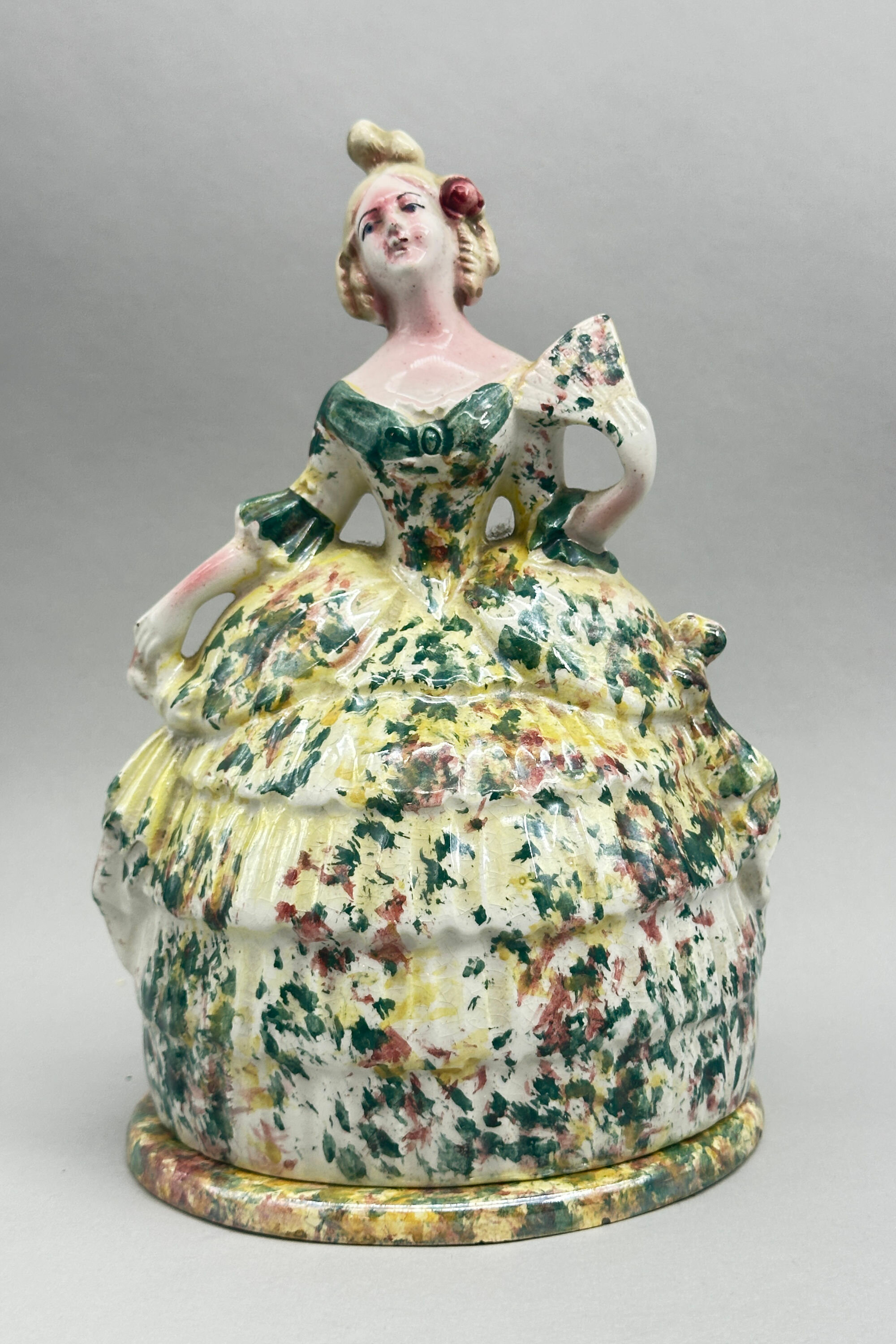
Lustreware Vanity Box, Lady in Crinoline, probably continental early/mid C20th
Price: £35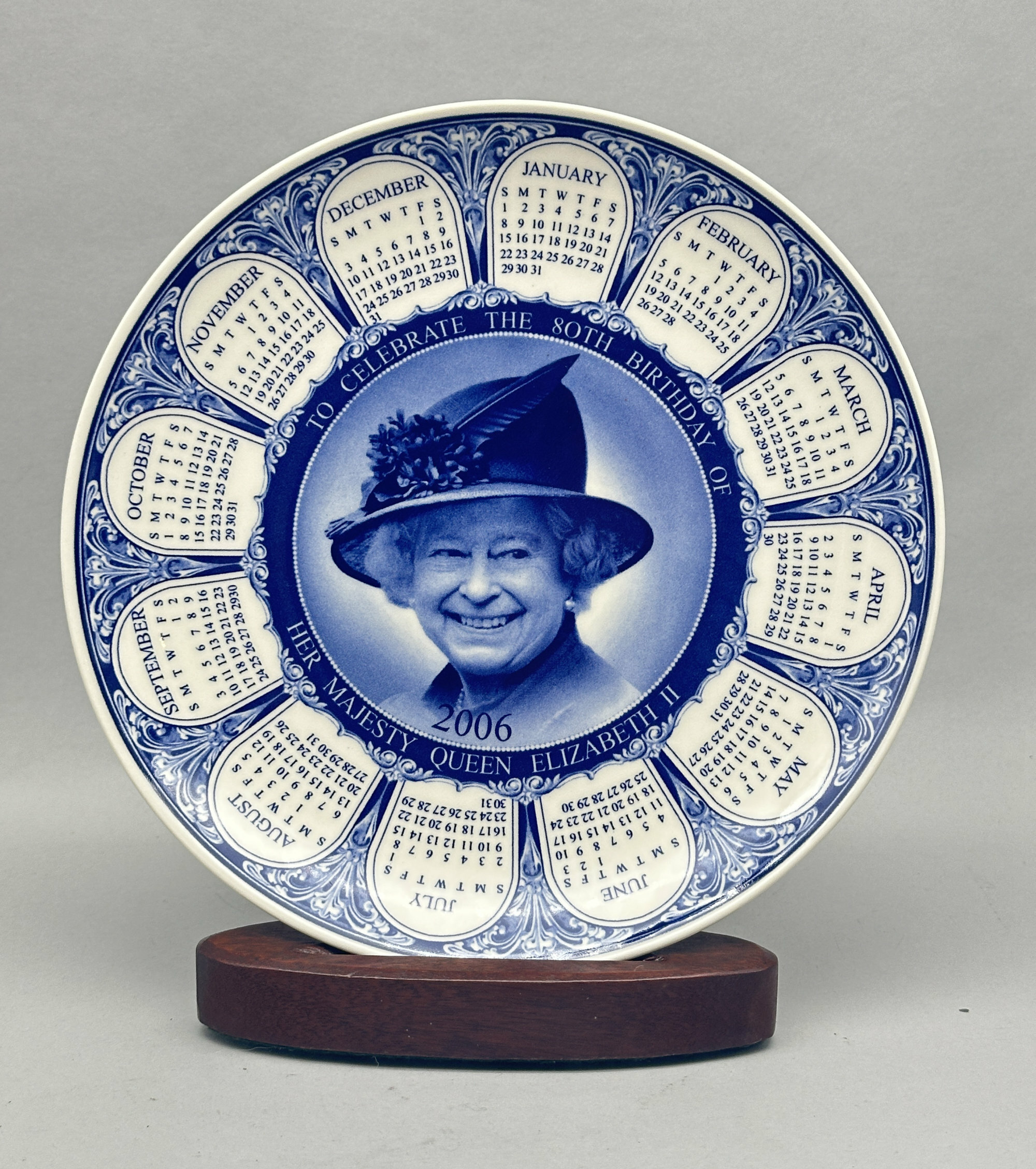
Wedgwood Calendar Plate, 80th Birthday of Queen Elizabeth II, 2006
Price: £10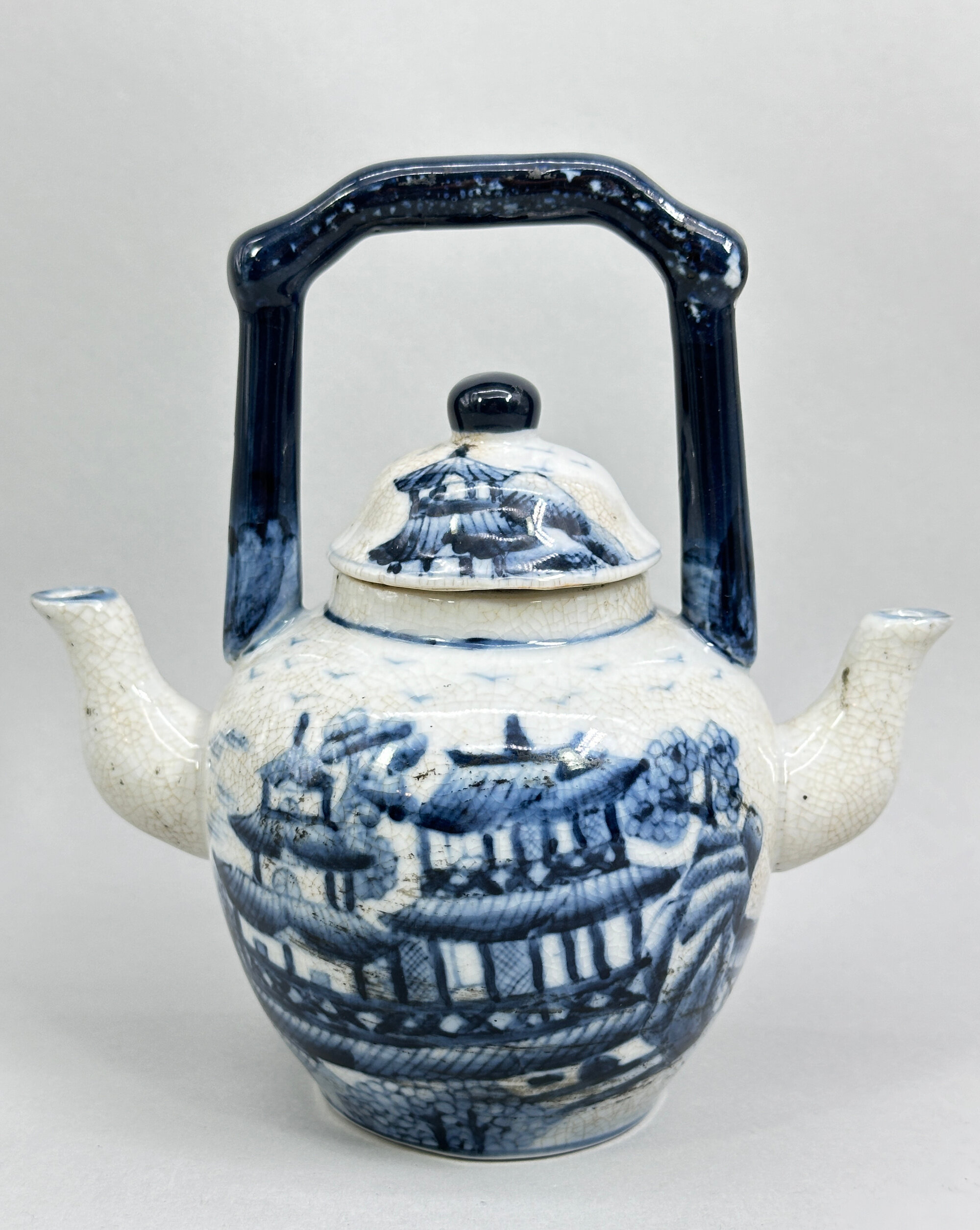
Chinese provincial double spout Teapot, early C20th
Price: £55